

DE I DESERVES A VOICE
“We need to stop telling women to speak louder and start actively making the room quieter.”
“Women do not need to act like men to fit in.”
“We need to call out bias when we see it – not later , not in private, but in the moment.”
“Start living it behind the scenes – and far beyond the hashtags.”

BEYOND DIALOGUES ON DIVERSITY?
Leaders in the Middle East advertising industry call for a commitment to ongoing introspection, accountability, and societal and cultural change within fair, equitable and welcoming workspaces that go beyond diversity to also address the elements of ‘equity’ and ‘inclusion’ within DEI.
Zain Iraq’s Mohammed Samir and First Abu Dhabi Bank’s Mohamed Al Awadhi share cultural considerations for marketers to keep in mind.
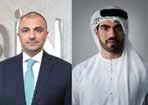
NEWS & WORK
10 INDUSTRY FORUM
Are all PR agencies going beyond being a mouthpiece for a creative revolution to actively contributing to it?
40-41 SAUDI FOCUS
Leylaty Group’s Luigi Ba ista and The Royal Commission for Riyadh City’s Waqas Amin offer insights from the Kingdom.
Motivate Media Group

46 PR AND EXPERIENTIAL GUIDE 2025
Our comprehensive guide highlights key leaders, agency specialisations and details from the Middle East region’s public relations and experiential sector, as well as industry viewpoints from experts in the industry.
42 MENTORSHIP: THE DEI TOOL THAT CHANGES EVERYTHING Leaders talk about bridging the gap between intention and effectiveness
57 FROM HYPE TO HUMAN MCH Global’s Saheba Sodhi reveals what the future consumer wants from brand experiences.
70 PRIVATE VIEW Industry leaders share their views on selected ad campaigns.
72 MATTER OF FACT Cicero & Bernay’s MD Tariq Al Sharabi presents news, views and trends across the spectrum.
74 THE SPIN Mishaps in the world of media, marketing and communications.
Mark Penn, Chairman and CEO of Stagwell, speaks about areas of opportunity in the region.

Head Office: 34th Floor, Media One Tower, Dubai Media City, Dubai, UAE. Tel: +971 4 427 3000, Fax: +971 4 428 2266. Email: motivate@motivate.ae Dubai Media City: SD 2-94, 2nd Floor, Building 2, Dubai, UAE. Tel: +971 4 390 3550, Fax: +971 4 390 4845 Abu Dhabi: Motivate Advertising, Marketing & Publishing, PO Box 43072, Abu Dhabi, UAE. Tel: +971 2 677 2005, Fax: +97126573401, Email: motivate-adh@motivate.ae Saudi Arabia: Regus Offices No. 455 - 456, 4th Floor, Hamad Tower, King Fahad Road, Al Olaya, Riyadh, KSA. Tel: +966 11 834 3595 / +966 11 834 3596. Email: motivate@motivate.ae London: Motivate Publishing Ltd, Acre House, 11/15 William Road, London NW1 3ER. Email: motivateuk@motivate.ae www.motivatemedia.com
EDITORIAL: Motivate Media Group Editor-in-Chief Obaid Humaid Al Tayer | Managing Partner and Group Editor Ian Fairservice Campaign Middle East Editor Anup Oommen | Senior Reporter Ishwari Khatu | Junior Reporter Shantelle Nagarajan | Junior Reporter Hiba Faisal
DESIGN: Senior Designer Thokchom Remy
ADVERTISING ENQUIRIES: Chief Commercial Officer Anthony Milne | Publishing Director Nadeem Quraishi (nadeem@motivate.ae) | Sales Manager Tarun Gangwani (tarun.gangwani@motivate.ae)
PRODUCTION: General Manager S. Sunil Kumar | Production Manager Binu Purandaran | Assistant Production Manager Venita Pinto
HAYMARKET MEDIA GROUP: Chairman Kevin Costello | Managing Director Jane Macken
in any form without the permission of the publishers in writing. An exemption is hereby granted for extracts used for the purpose of fair review. CampaignMiddleEastincludes material reproduced from the UK Edition (and other editions) of Campaign which is the copyright of Haymarket. Campaignis a trademark of Haymarket and is used under licence. The views and opinions expressed within this magazine are not necessarily those of Haymarket Magazines Limited or those of its contributors.





What happens when we wake up to the reality that the display cabinets laden with decorative ‘diversity’ trophies, the ‘community-led’ campaigns, and the remarkable reports on representation do not reflect the voices of women within the region’s ad landscape?
“DEI? NOT
This month, Campaign Middle East provides a platform for several leaders to share their convictions, constructive criticism and concerns regarding how diversity, equity and inclusion (DEI) is being implemented – and we take heed.
What’s the consensus? Diversity – check. The industry has welcomed more faces, genders and cultures into the room – whether that’s the boardroom or desk spaces across the floor – but before organisations begin patting themselves on the back, they need to ask: is this more than good ‘optics’ or a mere overcompensation for decades of systemic inequity?
To answer this, we must listen to women – in leadership and all other levels of the organisation, including internal and external stakeholders –when they say they want to ‘feel heard’ and ‘feel trusted’. They say that, far too often, diversity gets a seat at the table but is required to speak twice as loudly – before being dismissed as ‘aggressive’. Many leaders have also spoken out about being pigeon-holed into talking about work-life balance, emotional storytelling, sustainability or empowerment – even on public panel discussions – while their male counterparts are asked about subject matter expertise such as agentic AI or the advantages of a fragmented media landscape.
It’s time for change. The advertising landscape must be held accountable for its outdated archetypes and diluted messaging, as well as safe, sanitised and simplified storytelling that tends to ‘pink-ify’ products and ‘she-ify’ services. Far too often, DEI is mistaken for a fire alarm – addressed only after something has gone up in digital smoke.
Sure, the industry has earned its diversity badge but has pinned it to a jacket that’s rarely worn with confidence, authenticity, utility or sincerity. As such, the advertising industry now finds itself at a crossroads: will we allow DEI to remain an annual box-ticking exercise, or will we be bold enough to institutionalise it as part of every organisation’s DNA? Not charity or compliance, but competitive, strategic and fundamentally human.
It is time to turn trophies into tools because, believe it or not, it is good for business. Our creative sector should not merely mirror society –it should shape it. We must sponsor, mentor and actively open doors for the next generation. Do not just preach that floors exist above glass ceilings –take colleagues up in the lift. Turn allyship from static awards into dynamic action. Only then will our diversity trophies shed their dust and earn the acclaim they truly deserve.
Platinumlist rebrands to address fragmented identity

Platinumlist, an entertainment and events discovery and cultural platform in the Middle East, has revealed details about its comprehensive rebrand. This move was in line with the company’s global expansion plans as well as the demands of the booming events industry in the MENA region.
The objective of the rebrand –which repositions Platinumlist as a
ONE Development picks Kenshō as PR partner
ONE Development, an Emirati-born boutique developer that aims to transform the region’s real estate and hospitality landscape, has entrusted homegrown, GCC-based Kenshō Mindful Communications with shaping its public narrative and share its vision with regional and global audiences.
The collaboration aims to fuse ONE Development’s ambitious blueprint with Kenshō’s expertise in integrated storytelling.
Through 2025, ONE Development has debuted several developments across the MENA region – from Laguna Residences, the AED2.3bn development located in the heart of Dubai Land to DO New Cairo and Dubai Islands, the first musicalthemed hotels that integrate music, AI and wellness.
Kenshō will look to shape the narrative behind these landmark projects – from their unveiling to the ideas and ambitions that bring them to life.
cultural portal rather than just a ticketing platform – was to reflect the diversity and international scale of Platinumlist’s offerings, address its fragmented brand identity, improve brand recognition, and create a more streamlined experience for users and business-to-business (B2B) partners.
“The decision to rebrand the platform was driven by several factors, including the company’s
expansion across the globe,” said Cosmin Ivan, CEO at Platinumlist.
He added, “This growth presented challenges, as the previous brand identity no longer fully reflected the global and diverse nature of the company’s offerings. The prior design was fragmented across different products, which sometimes made brand recognition more challenging for users and B2B partners.”
The rebrand’s short-term goals include improving user experience (UX), launching a unified design system, enabling faster and more consistent communication, introducing a ‘dark mode’ and creating a more expressive brand tone.
It’s mid-term goals include scaling the new design system across multiple languages and markets, redesigning the app, launching a membership programme and digital wallet, and expanding into new markets.
Ivan said, “We have a large and loyal audience, and the main purpose of our rebrand is not to ‘capture’ markets, but to better reflect and connect with our existing community. As the market leader, we’re not aiming to take market share through heavy TV or radio spending.”
As such, a significant aspect of the redesign is the focus on its regional and cultural inclusivity. Platinumlist collaborated with UAE- and Saudibased type designers to develop a new Arabic typographic system and an adapted logo that aligns with the Latin version, creating a flexible and regionally inclusive design system.
The fresh visual identity – centred around the concept of a ‘portal’ –created in partnership with design studio Kidults, represents the platform as an entry point to new experiences and emotions.
The rebrand’s success will be measured through brand perception surveys and polls with Platinumlist audiences.


Platinumlist rebrands to connect closer with its community of more than nine million users in the MENA region.
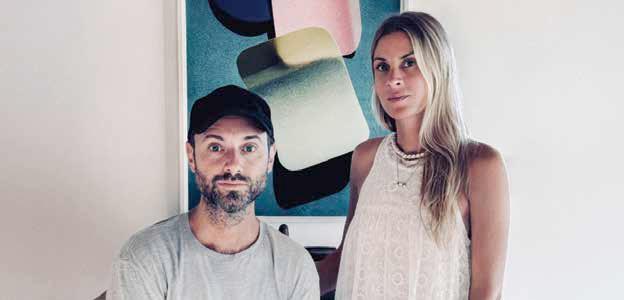
Paris creative agency The Refreshment Club to launch MENA hub in Dubai
Founded in Paris in 2019, creative agency The Refreshment Club is set to officially open its Middle East hub with an office in Dubai in September 2025. The creative agency – whose work spans across communication, brand and platform design for a new generation of luxury and lifestyle brands – will look to enable closer collaboration and faster implementation of adaptive campaigns, retail transformation and culturally relevant creative production in the MENA region.
With a portfolio spanning fashion, beauty, retail and purpose-led ventures, the agency partners with clients such as Louis Vuitton, Westfield, Elie Saab, and the No More Plastic Foundation.
The Dubai office will be led by Onur Kece, Founder and Creative Director, The Refresh Club, and Design Director Alix Petit. They focus on disruptive thinking, strategic design and AI-enabled creativity, positioning the agency as a partner for brands seeking cultural


Drawing from the local insight that buying US stocks is common among traders in Bahrain, the QSR brand made the connection between stock market ‘dips’ and McDonald’s dip sauces for this timely campaign. McDonald’s sought to drive awareness and engagement in a way that felt unexpected but rooted in local habits. Rolled out across out-of-home (OOH) and digital banners, the campaign’s centrepiece was an in-app mechanism featuring limited-edition ‘Dip Bundles’ redeemable using loyalty points. These points were linked to the Nasdaq index. When the Nasdaq dipped, the number of points required for redemption fell accordingly.
Abu Dhabi F1 Grand Prix picks AKQA as agency partner
Global design and innovation company AKQA has been appointed as the agency partner for the Formula 1 Etihad Airways Abu Dhabi Grand Prix, the spectacular season finale of the Formula 1 calendar and one of the most anticipated sporting and entertainment events in the region.
and technological relevance in the region. In parallel with its agency work, The Refreshment Club has also launched the School of Future Fundamentals – an educational platform and transformation consultancy designed to help marketing leaders navigate the evolving world of AI.
The Refreshment Club aims to help brands operating in the Middle East region build relevance, loyalty and long-term love rather than just short-term efficiency.
AKQA will lead content strategy, real-time digital storytelling, and social and creative development to shape how fans worldwide experience and engage with the Formula 1 Etihad Airways Abu Dhabi Grand Prix across key digital platforms. The multi-year agreement marks a significant creative partnership between AKQA and Ethara, the Middle East’s leading events and entertainment company and organiser of the Formula 1 Etihad Airways Abu Dhabi Grand Prix.
Felix Bedolla, Creative Strategy Director at Ethara, said, “Bringing AKQA on board is a big step forward for us.”
Jon Holloway, Managing Director of AKQA MENA, said, “We’re incredibly proud to partner with an event of such scale, ambition, and cultural impact. The appointment represents a standout win for AKQA in the Middle East sports and entertainment sector.
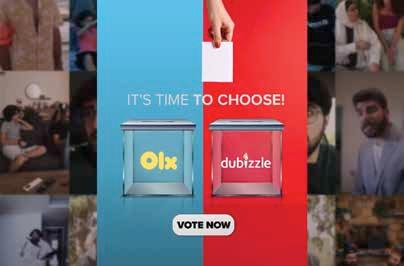

OLX LEBANON OLX OR DUBIZZLE?
After years of public debate and confusion between ‘OLX’ and ‘Dubizzle’ in Lebanon, the brand finally decided to let its devoted community of users pick its name through a digital-first and influencer-leaning campaign that put both these names to a public vote. The brand teamed up with 11 Lebanese comedians to ask users whether they preferred ‘OLX’ or ‘Dubizzle’. They created hilarious content, highlighting the ongoing name confusion, and encouraging audiences to vote through Instagram polls and a dedicated landing page. The campaign made a statement about how brands ought to listen to their audiences, prioritise brand equity and remain agile enough to act on consumer sentiment.
From left, Onur Kece, Founder and Creative Director, and Alix Petit, Design Director, The Refreshment Club.
TikTok removes more than 16.5 million videos across the Middle East and North Africa in H1 2025

The TikTok Community Guidelines Enforcement Report for Q1 2025 report reflects the platforms evolving approach to community protection, content moderation, and proactive user empowerment in the MENA region.
Through the first quarter of 2025, from January to March 2025, TikTok removed more than 16.5 million videos across the MENA region for violating its Community Guidelines.
The figures represent videos taken down across Egypt, Iraq, Lebanon, the UAE and Morocco, offering a representative view of TikTok’s enforcement efforts across the region during this period.
In Q1 2025 alone, TikTok banned 849,976 live hosts and proactively interrupted more than 1.5 million live streams across Egypt, the UAE, Iraq, Lebanon and Morocco.
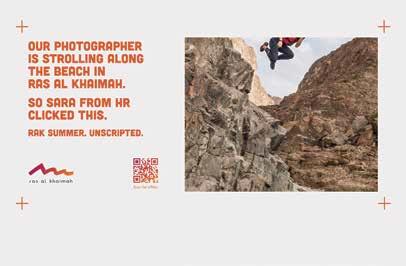

This quirky take on summer travel in RAK follows a narrative of the creative team abandoning their posts to enjoy RAK’s summer offerings, therefore leaving the ‘real tourists’ in charge to showcase the destination’s allure. Rather than showing idealised, overly curated tourism moments, the campaign leans into humour, imperfection and relatability. The campaign was rolled out in the UAE across outdoor billboards, radio spots, cinema advertising and influencer collaborations. It also extended to an activation in partnership with the UAE’s homegrown ice popsicle brand House of Pops which included a limited-edition ‘RAK Summer Sunset’ flavour.

TikTok’s Community Guidelines are enforced through a hybrid model of automated systems and human moderation, in an attempt to ensure content is reviewed efficiently and fairly.
Users are always informed when content is removed, with the ability to appeal decisions.
Such intervention highlights the company’s ongoing investment in advanced moderation technologies that can detect violative livestreams quickly and consistently.
As the scale of automated decisions continues to expand, TikTok intends to maintain moderation accuracy while ensuring sustained enforcement efforts.
TikTok also scaled up its enforcement across live content globally, stopping more than 19 million live videos that violated its policies in Q1 2025, marking a 50 per cent increase from the previous quarter.
TikTok has strict policies to protect users from fake, fraudulent or misleading content, including ads. Advertiser accounts and ad content should follow its Community Guidelines, Advertising Policies and Terms of Service.
During the first quarter of 2025, the total volume of ads removed for violating TikTok’s advertising policies increased, mainly due to an increase in account-level enforcement. This increase is due to efforts to strengthen and enhance the platform’s internal processes, as well.
TikTok also showed transparency and fairness through its content appeal and restoration process.
In cases where users successfully appealed moderation decisions, their videos were restored.
Iraq saw the highest number of restored videos at 209,291; followed by Egypt with 144,605; Morocco with 53,525; the UAE with 41,148; and Lebanon with 31,880.

To create awareness about their new ‘Masri Card’ credit card among Egyptian audiences, this campaign targets individuals who use credit cards on a daily basis for small, everyday payments – specifically, people interested in cashback benefits. The core idea of the campaign was to lean into the deeply cultural Egyptian spirit of helpfulness and generosity, which is deemed an important part of daily Egyptian life. However, given inflation and the rising cost of living, the hero film hilariously shows how this could be gradually fading. Shot in a docu-drama format, the ad humorously captures how Egyptian generosity has ‘levelled up’ after the Masri Card appeared.
In Q1 2025 alone, TikTok interrupted more than 1.5 million live streams across the MENA region.
Rotana Signs breaks through a cluttered ad space
Rotana Signs’ Chief Revenue Officer Edmond Bouez discusses opportunities within digital out of home and talks about trends to keep an eye out for in this exclusive interview with Campaign Middle East.
Q:Looking back at more than 17 years of experience in the media and marketing industry, what are the key junctures that defined your journey and led you to becoming the leader that you are today?
Edmond Bouez: Looking back, I cannot pinpoint just one or two defining moments. My leadership has really been shaped by the many challenges, lessons and opportunities I had along the way. Having been fortunate enough to learn from inspiring mentors, talented team members and clients from a wide range of sectors, I also experienced many of the industry’s transformations.
From the rise of digital in the early 2000s, to the gradual move away from traditional formats, and now the exciting diversification of DOOH, each change, success and setback has strengthened my understanding of the market and ability to anticipate, strategise and deliver meaningful results.
Can you walk us through how the out-of-home media and marketing landscape in Saudi Arabia has evolved, and the crucial role that digital out of home (DOOH) plays to unlock new opportunities for advertisers?
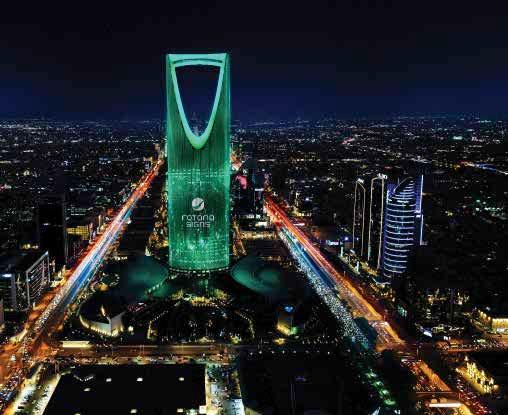



Those who have been in the industry long enough know that the transformation of the out-of-home (OOH) landscape in Saudi Arabia has been extraordinary. What began with limited static formats has progressed into widespread digitisation, the introduction of large formats such as Digital Bridges, and most recently some of the region’s most iconic building facades, including Kingdom Tower and Burj Rafal.
including Kingdom Tower and Burj Rafal.





This evolution has paved the way for iconic products, and elevated client service and approaches, such as those provided by Rotana Signs. By introducing impactful large-scale formats, an expanding variety of touchpoints and an integrated team, we strive to meet current and future communication needs.
Kingdom Tower, a novel and recognised touchpoint helped a brand’s ad achieve 77 per cent recognition in Riyadh through both live visibility and online shareability. It demonstrated how a strong physical presence can spark digital conversations and extend reach far beyond the location itself. This coupled with consumer sentiment that 87 per cent of audiences feel OOH keeps them informed, while 78 per cent view its advertisers as trustworthy places OOH media in unique position.






provided by Rotana Signs. By introducing impactful










meet current and future communication needs.
As for DOOH, it has expanded reach, attracted new and previously inactive advertisers, enhanced creative and operational flexibility, introduced targeting, and strengthened the connection between offline presence and online engagement.
creative and operational flexibility, introduced





Overall, a brand’s media mix, once thoughtfully planned will show that OOH fundamentally delivers on mass awareness, helping enlarge the audience pool and provide digital channels a heightened opportunity to engage with targeted and contextually relevant content. Together, they create the needed parameters to successfully achieve an enhanced level of presence that can break through the cluttered advertising space we experience.

In an increasingly digital world, how has out-of-home (OOH) advertising carved a crucial spot for itself at the core a brand’s media mix? How can brands best integrate OOH with social, digital and other traditional channels to meet and connect with a consumer optimally?


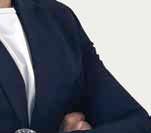


Are there emerging trends or lessons from your recent wins and successes that you believe will fundamentally change the way leaders approach marketing and advertising soon?

traditional channels to meet and connect with a consumer optimally?


OOH remains one of the few channels that offers genuine visibility and scale in a real, uncluttered environment where messages cannot be skipped or ignored.
There are many, yet regardless of when or what they are, they often lead to the same conclusion: Leaders should not fear the unknown or the concept of change but rather embrace it.
Our market will continue to be subjected to increasingly complex challenges, new technologies, and shifts in consumer behaviour. To succeed, leaders must stay curious, remain attuned to the changing landscape, be willing to try and fail, and be comfortable stepping outside their comfort zone.
Letting go of what worked in the past can be difficult, but adopting agility in all its forms enables the development of approaches that best serve the communication needs of the brands they represent.













SCRIPT


FLIPPING































Formerly


































wearesocial.me
We Are Social. Let’s walk the walk.
Culture moves fast. We move faster.
The ones who win will partner with agencies who live inside the culture they want to connect to. At We Are Social, we make your brand part of the conversation—not a cringe interruption.
media plans and missing the moments that matter.
Most brands will keep playing catch-up—throwing money at
Ready to Move at the Speed of Culture?
That’s the craft.
This isn’t about making noise—it’s about creating cultural -res onance. Because getting noticed is easy. Being remembered?
Proprietary AI Technology – Optimising ROI across platforms, creative, media, and customer touchpoints in real time.
Integrated Distribution – Full-funnel communications planning across paid, owned, and earned to maximise cultural impact and marketing effectiveness.
Creators & Influencers – Culturally fluent casting that builds authenticity and credibility at scale.
Culture Comms Team – Social-native cultural anthropologists who identify and activate the most valuable conversations, trends, and communities for your brand.
While most agencies stop at the brand tracker and generic audience profiling, we go further:
Built for This
Why We Are Social Is the Only Agency
loyalty—and self-sustaining reach.
brands create the kind of cultural moments that spark
Clicks are transactional. Fandom is emotional. We help
3. Make Fandom Your Marketing Strategy
It’s not about “posting more.” It’s about knowing how the internet talks. Memes. Microtrends. Main-character moments. We decode this daily.
2. Think Chronically Online
If your creative doesn’t earn attention, it won’t deliver conversions. We create ideas that inspire first, sell second—and get remembered.
1. Entertain or Die
built a formula that consistently delivers:
So how do brands stand out? At We Are Social, we’ve
ry. You’re competing with creators, comedians, and chaos in every feed your audience scrolls.
Here’s the truth: you’re not just competing with your -catego
Who Want to Win in Culture
The Playbook
deliver large business effects, and we’ve built our agency to make that happen.
At We Are Social, we don’t just chase trends or post Stories; we decode the cultural operating system and help brands move at its speed. We know that fame-driving campaigns are 50% more likely to
Winning in culture is no longer optional—it’s the fastest and only way to make your brand relevant today and win tomorrow.
Culture isn’t dictated from the top down anymore.It bubbles up from communities online and offline, from microtrends on TikTok, to unexpected product -collabora tions, to IRL experiences that transcend the feed, to viral moments no one saw coming.
And that’s where We Are Social comes in. Culture Moves Fast. We Move Faster.
The brands that are growing 25 percent faster than their competitors? They aren’t just “in” culture. They’re shaping it. They’re embedding themselves into moments their audiences care about, in the feeds, fandoms, Discords, and DMs where culture is being defined, at the speed of social.
Sure, they’re spending more than ever on ads (global ad spend is climbing every year) but spending doesn’t equal relevance. You can’t outspend irrelevance. If your creative is sanitised, safe, and forgettable, your ROI will be pretty forgettable too.
In 2025, culture is the most valuable currency a brand can own. But here’s the problem: most brands are broke.
We Are Social is the only agency that can build brands at the speed of social
CULTURE ISN’T A BUZZWORD. IT’S YOUR BOTTOM LINE.
INDUSTRY FORUM:
Are all PR agencies going beyond being a 'mouthpiece' for a creative revolution to actively contributing to it?
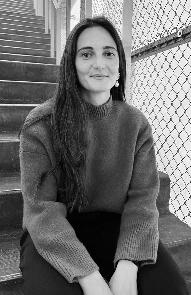
Kassandra Panagiotopoulos Head of Strategy, The Romans – MENA
NO
Many still operate in a ‘reactive’ mode – a result of being long positioned as amplifiers rather than originators. It does, however, depend on the agency’s ambition. For those hungry to push creative boundaries, the dynamic is starting to shift. We’re seeing them embedded earlier in the process, bringing cultural intelligence, storytelling and earned-first thinking that sharpen and even lead big ideas. But to truly drive creative change, agencies must move beyond execution and start confidently owning distinctive, strategic creativity. The potential is there, but we need to stop waiting for briefs and start actively shaping them.

Eliane Chalhoub PR Account Manager, JWI
NO
Too many PR agencies remain stuck in a tactical mindset, delivering press releases and coverage reports because that’s what clients expect. But PR shouldn’t just meet expectations – it should challenge them. Agencies need to educate clients on the value of strategic PR, ensuring it’s part of shaping ideas from the start rather than an afterthought. In a market as fast-moving and culturally rich as the Middle East, PR has the power to spark conversations and shape culture. The agencies making an impact are those driving this shift, not simply following instructions.
Mirna Eskarous
Regional Director, The Studio – MENA, and Creative Director, Burson
YESThere has been a massive shift in recent years: PR agencies aren’t just joining the creative revolution, they’re the ones firing the confetti cannons. Clients want bold new ideas, and earned creativity has been proven to strengthen reputation and brand image. That’s why brands are adding to their agency rosters PR partners that use creativity to earn attention, inspire action and drive impact. Still, not every PR agency has caught up; some are still playing it safe and focusing more on just protecting reputations instead of also proactively implementing initiatives designed to improve and elevate them. But let’s be honest: playing it safe never made headlines. In today’s world, bold moves get results – and clients know it.

Stephen Worsley
Regional Managing Director, Golin MENA
YESI would say all agencies are motivated to do this. Which of us gets out of bed each morning simply to write press releases? We study what the client wants to say, what its audiences and stakeholders care about, and the environment or context in which the client’s story must be told. From this we try to establish a genuine cultural connection from which to generate earned media ideas. We seek new knowledge to mobilise around and measurable objectives from the outset. It’s a timeconsuming exercise, and for best results, it should be collaborative.

Sunil John
Senior Advisor – MENA, Stagwell
NOPR, at best, accounts for between 3 to 5 per cent of marketing spends globally and in the region. So, by its very nature, it sits at the fringes of a ‘creative revolution’. PR’s ability to invest in technology or in talent is suspect and most people in PR try to fit the mould and hardly attempt breakthrough thinking. The ‘creative revolution’ is being driven by platforms such as Meta and Google, and a whole host of generative AI companies. Meta CEO Mark Zuckerberg has openly challenged the need for traditional advertising and PR companies, claiming that Meta will soon eclipse their roles in the industry. Even holding companies – with a few exceptions – are running for cover. Despite PR having a natural capability to tell authentic stories on behalf of clients, the discipline has lost out on opportunities in the past in the social, influencer and owned media space. A new breed of social creative agencies with strong tech backbones have won that battle. In the earned media space, PR is king – and its role will continue to remain important. There is one niche in the ‘creative revolution’ remaining for PR: organic search. Will PR use its skills to feed generative AI platforms such as ChatGPT, Perplexity, DeepSeek and Gemini with real stories which then appear in organic search results? Time will tell.

Shady Fekry
Associate Director, Media Relations and Public Relations, MEMAC Ogilvy
YESPR has changed. It’s not the quiet press office in the background everyone once knew. Agencies today are pushing the limits, because that’s the new strategy. Creativity isn’t optional anymore; it’s how we pitch, how we win and, most importantly, how we earn exposure. From day one, PR has always shaped messages, but now we’re doing it louder, smarter and with cultural relevance.
PR agencies are no longer playing it safe. They lead with creativity or get left behind. Inside the modern PR kitchen, bold ideas are born daily. These ideas are grounded in brand knowledge and a real drive to connect. While much of this creativity gets filtered out by brand guidelines, cultural sensitivities or budget constraints, great PR almost always finds a way. We collaborate with creators, tap into communities, and shape stories that relate.
Today, PR is less about spin and more about spark. How we turn strategy into culture, and messages into movements. The best ideas come from those who know the brand inside out, and PR is finally being recognised as the creative force it has always been.

Lloyd Arceo Senior Account Manager, ComCo Middle East & Africa
YESWhile it’s hard to generalise, it would be difficult for any PR agency to survive today by simply distributing press releases. The industry has evolved and so have we. I believe most agencies, in big or small ways, are actively contributing to the creative revolution.
For us, while traditional PR remains our foundation, we’ve long embraced New PR: strategybased, impact-driven and channel-agnostic. The big idea often comes from us, which allows us to lead it across platforms –collaborating with existing partners or stepping in through experiential events and more. With so many touchpoints today, our job is to move people, reach the right ones, earn their trust, and spark brand love.

The demand from brands and their audiences is greater than ever. Evolution isn’t optional, it’s the only way to lead the revolution.
Iraq is a land of immense potential – a country with deep historical roots and where a youthful, ambitious population is eager to move forward. The reality on the ground tells a compelling story: one of energy, resilience and quiet transformation.
The telecommunications industry is at the heart of this transformation. In a nation where roughly half the population is aged 20 and younger, and digital adoption is accelerating rapidly, connectivity is no longer a luxury – it’s a necessity.
As one of Iraq’s leading digital enablers and the operator with the largest customer base in the country, serving more than 20.7 million customers, Zain Iraq plays a central role in this evolution. We not only aim to build infrastructure that connects people and businesses – we intend to actively shape how the country accesses opportunity, innovation and a connected future.
More than a network
In Iraq’s competitive market, customers expect more than coverage. They expect care, responsiveness, digital ease and a brand that understands them. This requires a human-centric approach to experience –putting the customer at the heart of everything we do.
As such, we have and continue to invest in seamless digital channels, AI-powered support, and tailored product offerings that reflect how our users live, work and socialise. Our platforms aren’t built in isolation –they’re shaped by real usage patterns, direct feedback and deep cultural context.
But customer experience is not just about platforms – it’s about trust and resonating with Iraqi life, culture and digital aspirations. It’s important to become synonymous with reliability, consistency and innovation. This requires a commitment to transparency, inclusion and relevance.
We ensure that whether through campaigns that celebrate shared values or partnerships with local artists and influencers, our brand stays culturally grounded while digitally forward. We not only aim to run a network – we build a relationship with every customer in every corner of the country.
Growing together
Our purpose is inseparable from the people we serve and the people we employ. From engineers in remote provinces to our digital marketing and customer care teams in Baghdad, we intend to empower Iraqis across every region and function to contribute meaningfully to our mission.
We believe that our growth is only sustainable if the Iraqi workforce drives this growth. That’s why we invest heavily in our local talent – from training programmes for fresh graduates and coding bootcamps for youth, to targeted initiatives supporting women’s inclusion in leadership roles.
Commitment to community development must be long-term and deeply rooted. We need to remain focused in our roles as responsible corporate citizens – and that’s why Zain Iraq is an organisation that gives back, listens actively and lead with purpose.
Looking ahead, our vision in anchored in inclusion, sustainability and empowerment. The Iraqi people are not just our customers – they are our drivers, our community and our future.
Enabling potential, powering progress
Connectivity is the backbone of opportunity. In Iraq, where ambition often outpaces infrastructure, telecom operators play a vital role in bridging that gap. We are not only expected to connect people – we must also enable them to unlock their potential.
“OUR PURPOSE IS INSEPARABLE FROM THE PEOPLE WE SERVE AND THE PEOPLE WE EMPLOY.”
In recent years, we’ve accelerated access to reliable high-speed data, expanded 4G availability and capacity nationwide, and laid the groundwork for future-facing technologies such as 5G, the Internet of Things (IoT), cloud computing and the adoption of AI across everything we do. Yet, technology is only half the story.
From flexible voice and data bundles to mobile and electronic payments, entertainment content, and youth-focused digital packs, the key is to tailor our everevolving product portfolio to Iraq’s unique demographics and demanding customers. Whether it’s a young entrepreneur launching an e-commerce platform or a group of developers
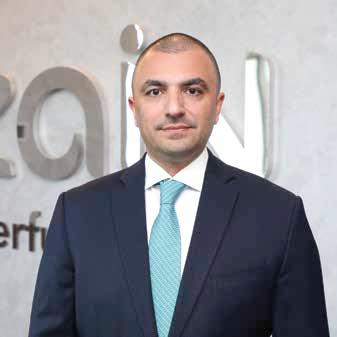
BRAND FOCUS
HELPING TO BUILD THE FUTURE OF IRAQ
Zain Iraq’s
connectivity,
Mohammed Samir
shares
the brand’s
focus on
customer experience and community as it looks to meet its commitments to the people of Iraq.
working on digital healthcare tools, we are meant to support the talent and creativity that’s driving Iraq’s digital future.
Innovation also means building ecosystems where people can thrive. Through our incubator Zain Innovation Campus (ZINC) and a range of tailored programmes, we are nurturing a new generation of Iraqi thinkers, creators and problem-solvers. These platforms provide entrepreneurs, students and developers with access to mentorship, infrastructure, funding as well as tools to ideate, test and launch solutions that serve real local needs.
Innovation is not about being flashy – it’s about being useful. Every solution we build aims to remove friction and unlock growth for individuals, businesses and the society.
A future built on strength and vision
It has been a long journey of rebuilding, adapting and rising – repeatedly. In this environment, resilience is not optional – it’s essential.
This defines how we operate at Zain Iraq every single day. We’ve navigated economic volatility and infrastructure challenges. Yet through it all, we’ve
maintained full-service continuity, expanded our reach and continued to innovate under pressure. Our network remained online when it mattered most –because we understand that connectivity is a lifeline, not a luxury.
But resilience is also human: it’s the Zain field technician who shows up at dawn to restore connectivity cuts; it’s the customer care agent staying late to resolve urgent issues; and it’s the leadership team making tough calls to keep service levels high, no matter the conditions.
Leadership in Iraq demands more than business acumen – it requires purpose and responsibility. As such, we lead by example: through transparency, proximity to our communities and a deep commitment to our people.
Looking ahead, we are preparing for 5G deployment, pending regulatory approval, exploring green energy solutions for our towers, and working towards smarter and more collaborative public-private partnerships.
We don’t just believe in Iraq’s future – we are helping to build it, one connection at a time.
By Mohammed Samir, Chief Commercial Officer, Zain Iraq
ADDRESSING EMIRATI MISREPRESENTATION
First Abu Dhabi Bank (FAB)’s Mohamed Al Awadhi explains how misrepresentation goes far beyond cultural appropriation and requires a nuanced understanding of ethical considerations.
As brands race to be ‘locally relevant’ in the UAE, stereotyped images may appear on advertising: a person wearing a kandura with a ghatra and an agal; or a woman dressed in a hijab with an abaya next to a falcon; or pictures of dhows and deserts. But these do not accurately represent what it means to be an Emirati.
Brands in the UAE are realising that advertising success is not just about creativity or effectiveness; there’s another crucial element that goes into the mix: cultural representation.
Brands are noticing how distinct and unique the UAE segment is compared to residents, and they are quickly realising that they must localise their advertisements. However, this also means going beyond Emirati stereotypes.
Most recently, the UAE passed a regulation, which mandates that only Emiratis can represent Emirati culture across social media advertising. While some brands might initially question the need for such a regulation, it has been proven over time that localising ads properly are always more successful. This policy isn’t about excluding actors or visuals; it’s about preserving Emirati culture. It is a concerted attempt to remedy a growing issue: the misrepresentation of Emiratis, and our national identity.
The ethics of representation
It’s essential to advocate for an ethical framework that views advertising not merely as a means to economic gain for brands, but as a moral act. This could be the lens through which we must view representation.
When brands represent Emiratis, they’re not just advertising; they’re also representing the Emirati community. They’re telling a story on behalf of a living culture, a national identity and a people –regardless of the campaign’s objective, whether it is brand awareness, consideration or conversion.
In a country as diverse and rapidly growing as the UAE, navigating cultural nuances is essential. Advertising is a powerful tool: it shapes perceptions, influences behaviour and reflects societal values.
For Emiratis, this isn’t just about gatekeeping. It’s about safeguarding identity. When non-Emirati talents portray Emiratis, wearing the UAE’s national dress or attempting to speak in local dialects, it can
often lead to inaccurate or even stereotypical portrayals. These misrepresentations, even if unintentional, risk diluting the authenticity of Emirati culture. Over time, they can influence how Emiratis themselves dress, speak and behave.
What ethical representation looks like
An ethically grounded campaign doesn’t mean being dull. It means being intentional. It asks: Who did we consult? What stories are we amplifying? What does this campaign say about the people it represents –even long after the media spend ends?
Some argue that this policy is simply about creating more job opportunities for Emiratis; and while that may be a by-product, the core of the policy is about respect, representation and responsibility. This requires us to:
Co-create with Emiratis, not just feature them. Develop narratives that reflect real tensions and triumphs, from environmental stewardship to digital entrepreneurship.
Let go of overused motifs and explore the emotional aspects of ‘being local’ in a globalised country.
Narrate Emiratis values by storytelling in a way that reflects their lived experiences. Campaigns that feature authentic Emirati voices, settings and narratives resonate more deeply than those that rely on generic or imported concepts.
Understand that Arabic is not just a language; it is a cultural cornerstone. Using it correctly and naturally is essential. Even better is the use of Emirati dialect in advertisements catered to UAE audiences, which shows a deeper level of localisation and respect.
How talent plays a key role in representation
The advertising industry should empower Emiratis to shape how their stories are told by prioritising authentic storytelling.
To build a sustainable and culturally attuned advertising ecosystem, the industry must invest in a robust Emirati talent pipeline. This means creating opportunities for young Emiratis to enter and grow within the creative sector through mentorship programs, internships, scholarships and partnerships.
By nurturing homegrown talent across disciplines such as copywriting, design, production and strategy, the industry can ensure that future campaigns are not only locally relevant but also driven by authentic voices.
Empowering Emiratis at every stage of the creative process strengthens representation and fosters long-term innovation rooted in authentic cultural identity.
Why it ma ers commercially
Emiratis are a high-value consumer segment with significant purchasing power and influence. Many brands in the UAE develop dedicated products and personalise communication for Emiratis because they understand their value to businesses. So, brands that earn Emirati trust are rewarded with loyalty, advocacy and long-term relevance.
Emiratis are deeply rooted in tradition, yet forwardthinking and digitally savvy. Also, they are a minority in their own country – so, how they are represented matters immensely. Authentic representation in advertising means investing time and effort into understanding the subtleties of their identity and giving a genuine voice to the people being represented. This means holding ourselves accountable to a higher standard than just a policy. Also, approaching advertising from a moral lens can offer brands a competitive advantage. In the long run, Emiratis will be more likely to trust and remain loyal to advertisers that accurately reflect their identity and values in brand communication.

If you’re unsure whether your campaign is ethically sound, use the principles of ethical marketing as a checklist. Ask yourself: Am I doing something that goes against these values? When in doubt, consult a certified Emirati cultural expert or collaborate with organisations to ensure your campaign is on the right track.
Looking ahead
As we move forward, another layer of ethical consideration is emerging, the use of AI in marketing and advertising. The rapid development of AI-powered tools has revolutionised the creation of campaigns. While these technologies offer efficiency and innovation, they also raise important ethical questions: Who is accountable when AI-generated content misrepresents a culture?
How do we ensure that AI tools are trained on diverse and inclusive datasets? How can marketers use AI responsibly without compromising authenticity? To be a top brand in the UAE, representation isn’t just a nice-to-have; it’s a must have.
By Mohamed Al Awadhi, Vice President – Personal Banking Marketing, First Abu Dhabi Bank (FAB)

It’s time for a reality check. Leaders in the industry are requesting honesty and authenticity; so, there’s no room to mince words. From a bird’s eye view, how does the Middle East advertising industry’s implementation of diversity, equity and inclusion (DEI) weigh up against its goals?
Sure, we hear – time and again – about how the industry has travelled miles in the right direction and moved mountains, but this is not meant to be a progress report of past laurels. Instead, it’s meant to be an empirical and qualitative performance review on the state of the market – to use a buzzword: in ‘real-time’ – compared with companies’ DEI claims in the present and their objectives for the near future.
Several leaders have had their say, and here’s the consensus: Diversity? Check* – and we’ll get to the asterisk in a second. However, inclusion and equity face a huge say-do gap.
At the outset, ‘representation’ has won several long-coveted awards but looks uncomfortable under the spotlight. Most brands and advertising agencies in the region are proud to present statistics of diversity within their respective companies – whether that’s in terms of gender, age, beliefs, language, nationalities or culture. However, deeper dives into organisational structures, workflows, allocation of responsibilities, perceptions and prevailing prejudices reveal that several challenges still need to be addressed.
*Diversity has won, but does its trophy sit in a corner? How much diversity do we see when we climb up the ladder or take a walk across functionally siloed desks and departments? How does diversity hold up when questioned about ‘overcorrection’ or it being merely an ‘optics’ exercise? Does diversity have a voice in weekly meetings or monthly town halls and, if so, does it need to be loud and emphatic to be heard? Does diversity get asked about ‘work-life balance’ on panel discussions while others get the more serious ‘business transformation’ and ‘creative strategies’
BEYOND DIALOGUES ON DIVERSITY
Leaders from the region’s advertising industry speak to Campaign Middle East about moving past diversity and representation. They call for a commitment to ongoing introspection, societal and cultural change, and accountability to fair, equitable and welcoming workspaces that bring to life the ‘equity’ and ‘inclusion’ elements of DEI.
By Anup Oommen
questions? Is diversity trusted to deliver on an ‘important’ job description or is supervision for diversity a default setting? Is diversity an instinctive and proactive choice or a reactive afterthought in a campaign?
It’s these questions, among others, that are now driving the conversation from diversity on paper to inclusion and equity in practice.
REPRESENTATION – AND RESULTING REVENUES
First, let’s applaud the win for representation at the highest levels – led by publicly listed companies accountable to their shareholders, and closely followed by the privately-owned advertising ecosystem.
As of January 2025, women’s representation on the boards of listed public joint-stock companies in the UAE has witnessed a 200 per cent increase compared with the past three years, according to the Securities and Commodities Authority – signalling a nation-wide shift.
Concurring with these findings, HeriotWatt University’s and Aurora50’s GCC Board







Gender Index Report 2025, released in January 2025, highlights that the percentage of board positions held by women at publicly listed companies across the GCC region – including in the UAE, Saudi Arabia, Bahrain, Oman, Kuwait and Qatar – has significantly increased.
Noor El Zeinni, Global Marketing Strategist, aramco, says, “I have witnessed first-hand how the conversation around women in the workforce in Saudi Arabia has
Noor El Zeinni
shifted from permission to performance. We’re no longer just present, we’re making decisions and proving value.”
Saudi Arabia is already 5 per cent ahead of its 2030 target to bring women’s participation in the workforce to 30 per cent and is on track to exceed that by another 5 per cent to hit 40 per cent participation of women in the workforce by 2030. In Egypt, women currently hold more than 23 per cent of board seats within listed companies and financial institutions, according to the National Council for Women (NCW), progressing steadily towards the nation’s target of 30 per cent by 2030.
Looking specifically at the regional advertising industry, the case for representation has been catalysed by the growing focus on return on investment (ROI).
More than a check box?
The industry has begun to experience the business benefits of shifting from viewing DEI as a ‘nice to have’ ethical discussion to a strategic investment. Yet, leaders in the industry share differing opinions on whether DEI has gone beyond a check box.
Helena Sarkis, Media Manager, Fusion5, says, “DEI is no longer a check box in the UAE; it is moving the profit and loss statement (P&L). Women now hold almost 15 per cent of board seats in listed firms and companies. This broadened leadership diversity leads to higher profits and lowers staff turnover because varied perspectives catch blind spots and solve problems faster. Over the past year, meaningful shifts, government pressure and public expectations have shifted DEI from compliance to a competitive edge.”
But, Dana Sarkis, General Manager, OMG Consulting, shares a different opinion, agreeing that DEI is a driver of profitability while disagreeing on DEI being viewed as more than a check box.
She says, “While many major organisations in the region have begun mandating DEI-related initiatives, these efforts often remain surface-level, more about ticking boxes than driving real change. DEI shouldn’t be treated as a compliance exercise. It must be institutionalised as part of the organisation’s strategic DNA, embedded across leadership, culture and operations, because it’s not just a moral imperative; it’s a driver of profitability and innovation. Organisations that truly understand this, or at least have the vision for it, recognise that diverse talents – across cultures, backgrounds and ways of thinking – lead to healthier debate, more creative problemsolving and a more holistic approach to growth and business development.”
Gita Ghaemmaghami, Leader –Communications and PR, LIXIL IMEA, shares a more moderate view: “While some still approach DEI as a checkbox, many have made it measurable and meaningful, linking diversity goals to key performance indicators (KPIs), customer relevance and long-term growth. The shift is visible, though consistency remains key.”
She agrees that “DEI has evolved from a moral imperative to a business advantage.
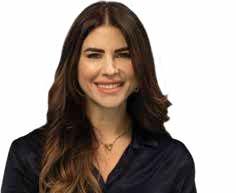

Over the past year, we have seen more than symbolic gestures – organisations that embed DEI into hiring, leadership pipelines and product development process report stronger employee engagement, innovation and brand equity.”
A commonly quoted survey of more than 300 brands by The Unstereotype Alliance supports the notion that DEI has a direct impact on business outcomes. The study finds that advertisements that are inclusive drive short-term sales up by 5 per cent, long-term sales up by 16 per cent, and have a 62 per cent higher likelihood of becoming the customer’s first choice.
“It’s nothing new that gender diverse teams outperform others on profitability by 25 per
“DEI MUST OWN ITS SEAT ON THE DASHBOARD ... AUTHENTIC REPRESENTATION DRIVES REVENUE.”
cent,” says aramco’s Zeinni.
She adds, “In an industry that is increasingly compelled to justify spend through tangible business returns, our presence has never been more valuable. Women bring qualities such as emotional intelligence, empathy and perspective shifting, which are necessary traits to help improve consumer connection and overall creative outcome.”
Building on the conversation, Reema Al Shammasi, Vice President, Marketing and Communications – West Arabia, Mastercard – Eastern Europe, Middle East and Africa (EEMEA), says, “The shift is real – especially when DEI is treated as a strategic imperative rather than a side initiative. Over the past year, organisations with mature DEI strategies have reported stronger innovation, agility and brand perception. I have noticed that DEI efforts that include transparent people practices, inclusive hiring and equitable talent development have led to measurable improvements in employee engagement and retention.”
Does DEI drive strategy?
Leaders also add that DEI shouldn’t merely ‘add’
to strategy but must compel how a business thinks from the get-go. This means flipping the script on ‘strategy that includes inclusion’.
Suad Merchant, Chief Marketing Officer, GEMS Education, says, “Real impact happens when inclusion drives strategy, not the other way around. Organisations that get this right see stronger employee engagement, lasting customer connection and better bottom-line results. Organisations should stop counting how many people are hired and start measuring how different perspectives shape decisions. The most successful organisations aren’t just hiring differently; they’re making smarter choices because of it.”
But, as the adage goes, you can’t improve what you don’t measure.
Fusion5’s Sarkis says, “DEI must own its seat on the dashboard. It’s about understanding that authentic representation drives brand affinity, engagement and revenue.”
“Start with building briefs on data that reveal cultural nuance, then staff the room with creators who live those stories. Then, track ‘inclusion reach’, measuring effectiveness beyond cost per thousand impressions (CPMs) and click through rates (CTRs). Above all, we need to treat DEI as a long-term discipline embedded in strategy and supported by ongoing training,” she adds.
‘GIVE PEOPLE THE CHANCE TO SEE THEMSELVES DIFFERENTLY’
In a market largely focused on margins, revenue streams and profits, leaders also call for brands and agencies to look beyond business outcomes to also drive social change.
LIXIL IMEA’s Ghaemmaghami says, “Amid margin pressures, authentic DEI storytelling remains a differentiator. It requires listening to marginalised groups, hiring diversely and aligning creative with societal shifts. A great campaign should spark conversation, challenge norms, and connect with humanity, not just convert impressions to clicks.”
Mastercard EEMEA’s Al Shammasi adds, “To move the needle, we must shift from tokenism to authenticity; align campaigns with social initiatives such as youth empowerment or digital inclusion; and measure impact beyond impressions – look at sentiment, behavioural change and community engagement.”
Challenging prevalent prejudices and stereotypes Leaders agree that the time has come to go beyond performative storytelling and everyday clichés and steer real-world impact by leaning into lived experiences.
They opine that advertising campaigns must inspire positive and purpose-led DEI shifts within societies – but add that this begins with

Gita Ghaemmaghami
Dana Sarkis

























ensuring that DEI within organisations is empowered to be effective. “Every campaign can either reinforce or challenge stereotypes, which is why our teams must reflect the diverse communities and audiences we speak to,” says Nicola Porter, Executive Editor, Bloomberg Media Studios. “Advertising and media don’t just reflect culture; they are powerful architects of it. As cultural stewards, our responsibility goes beyond storytelling and marketing; we can influence how people see themselves and others within their communities. This influence carries responsibility.”
Porter adds, “Creative ideation thrives on diversity as different lived experiences will challenge assumptions and unconscious biases, sparking new ideas. However, to create meaningful stories grounded in cultural truth, we must make inclusivity central to both our processes and our purpose.”
OMG Consulting’s Dana Sarkis shares a personal story as a consumer and as a leader in the advertising space: “Growing up, I remember being exposed to ads and television shows that, while widely accepted at the time, were deeply rooted in racism and harmful stereotypes. These portrayals subtly but powerfully normalised the absence of diversity, equity and inclusion. Today, working in one of the world’s most influential industries, we carry both a responsibility and an obligation as media and communications professionals to shape a more inclusive narrative; one that will influence our children and generations to come.”
Sarkis goes on to make the case for advertisers and agencies to spotlight the beauty of cultural diversity, celebrate the genius of artists, blend genres and identities, and create content that resonates with and represents the richness of our multicultural societies.
Loma Jaber, Managing Director, Hewar Group, adds, “To shift DEI meaningfully, social intelligence must be built into the foundations. This means involving the right voices early on and prioritising social context and representation to drive social change.”
Don’t just mirror culture – also shape it
That said, leaders also call for the brand and marketing industry to go the extra mile – to do more than mirror diversity in society and, instead, to amplify it. This requires going beyond omnichannel campaigns, multisensory engagements, influencer partnerships and current lived experiences to inspiring and influencing change – envisioning communities and societies as they ought to be.
Reham Nader Mufleh, Managing Director, Horizon FCB, says, “We have the responsibility not just to reflect culture, but
also to affect it. In every society, there are underrepresented and often overlooked communities. Culture is created and driven by those under-represented or marginalised groups that are on the fringe. By inviting these individuals to share their real, authentic stories, acknowledging their contributions or hardships, and offering meaningful support, brands and services can connect to the future of culture in a real way. Even small actions can get us closer to changing outdated perceptions and biases against certain groups, which will lead to significant impact for entire communities.”
Echoing these thoughts, GEMS Education’s Merchant says, “Great marketing doesn’t just mirror the world; it shapes it. The brands making real impact aren’t following trends; they’re creating them. The idea isn’t to represent and reflect everyone; it’s about building something new. When your campaign sparks conversations instead of joining them, you’ve moved from marketing to making change.”
She adds, “The future belongs to brands bold enough to lead, not follow. Authentic storytelling cuts through noise when it comes from genuine understanding, not just data. The campaigns that matter most challenge assumptions, shift perspectives and give people permission to see themselves differently. That’s real social impact.”
DEI DILUTED?
During the DEI conversation, leaders decide to pause and reflect on what DEI means for the region. They agree that the term globally has been ‘overgeneralised’ and become ‘inclusive’ to far too many causes that aren’t quite relevant in the Middle East context.
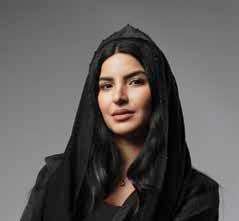









Hewar Group’s Jaber explains, “When we borrow global frameworks, we risk sidelining what matters here. In the MENA region, three core areas need consistent attention: age, gender and nationality.”
She adds, “Real progress lies in designing DEI around the workforce we have, the communities we speak to, and the cultural landscape we shape every day. Real progress lies in prioritising visible female participation in boardrooms and intentionally adapting to a multicultural talent base. These are everyday challenges rising from local dynamics.”
Leaders state that the more we bundle causes into one neat acronym, the more they obscure local priorities and the easier it becomes to forget the real challenges on the ground we need to solve.
Al Shammasi says, “In regions such as Saudi Arabia, issues such as gender equity, youth employment and digital access require tailored approaches. Bundling too many causes under one DEI umbrella can dilute focus and reduce effectiveness. Instead, we should localise DEI strategies – ensuring regional voices shape the agenda and that inclusion efforts reflect cultural and societal realities.”
Ghaemmaghami adds, “What matters in Dubai or Johannesburg differs from London or New York. One-size-fits-all DEI frameworks often overlook local distinctions. For DEI to be effective, we must disaggregate the issues and engage local voices meaningfully. Global brands need to empower regional teams to address their unique challenges authentically rather than applying a homogenised DEI lens that risks being disingenuous to the realities of local audiences.”
SOLVING FOR THE FUTURE OF DEI
Choosing to conclude conversations on a constructive note, the final phase of the discussion delved into taking the right steps to solve for DEI – collaboratively. When ‘allyship’ was mentioned, a Lebanese proverb found its way into the chat: “One hand cannot clap.”
Reema Al Shammasi
Suad Merchant
Reham Nader Mufleh
Leaders stated that the ‘other hand’ could either be one’s own – a boost of self-esteem and self-confidence; belong to another woman – a colleague, leader or even a mentee in an landscape where women support women; or belong to fellow, meritorious male colleagues – who partner, collaborate, unite strengths, face weaknesses together and join forces, from initial ideation to final execution.
OMG Consulting’s Sarkis says, “Every breakthrough is powered by many hands. So, let mutual respect guide every brainstorm and boardroom. Call out bias, interrupt micro-aggressions and pass the mic to underrepresented voices. We spend more hours at the agency than at home, so a psychologically safe workplace is not a perk but a prerequisite for excellence. When we look out for one another, we grow stronger; we elevate our craft, our culture, and the vibrant society we mirror.”
Porter adds, “Allyship in our industry means creating a culture that raises people up, not just when it’s convenient, but consistently. It means treating everyone with equal respect, regardless of title, background, or identity. It requires us to listen, before we speak, and to lead with empathy, not ego. If you have influence, use it with intention: open doors, challenge bias, and create space for others to shine. And above all, invest in the future. Mentor and nurture the next generation of diverse talent so that equity isn’t just an aspiration, it becomes our shared reality. Because when we lead with a strong set of values, success will follow.”
Horizon FCB’s Mufleh also calls for more women to sponsor or mention, and to be very international in partnering with organisations that share the same interests and reflect the same values. She echoes calls from several leaders to go beyond words to action that helps other young and underrepresented women.
Aramco’s Zeinni says, “The reality is that there will never be shortage of competition, but there is always more room to uplift and support. Therefore, I ask the next generation of women to keep three key things in mind: We need more generosity, so learn as much as you can but lift others as you climb and share openly; if it ever gets to a point where you are the smartest person in the room, it’s time to find another room – just don’t forget to celebrate yourself for a minute; and, finally, word of mouth travels fast – so, be someone people want to collaborate with and learn from.”
Al Shammasi adds, “My call to action is ‘Use your influence to open doors for others’. Every

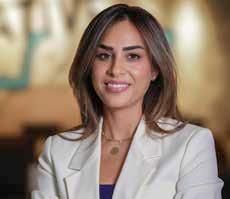
action counts – whether it’s advocating for inclusive casting, mentoring underrepresented talent or challenging bias in briefs. Allyship is most powerful when it’s proactive, consistent and embedded in everyday decisions.”
And that word – consistency – is met with a lot of nodding heads and agreement.
Ghaemmaghami adds, “Allyship is not a title, it’s a daily practice. To my colleagues: listen more, advocate visibly, and use your privilege to create space for others. Call out bias, share opportunities, and elevate marginalized voices not just when it’s trending, but always.”
Institutionalise DEI, embrace empathy and equity
We asked leaders: “If you could wave a magic wand to change one aspect …” … and here’s how they responded:
“IF I COULD CHANGE ONE THING, IT WOULD BE FOR INCLUSIVE THINKING TO BE INSTINCTIVE, NOT REACTIVE.”
Bloomberg Media’s Nicola Porter: “I’d close the gender pay gap and create fair, equal opportunities for women to thrive. Just as our campaigns should reflect diverse audiences, our teams must reflect the world we live in. Yet, globally, the gap persists, and progress in our region remains slow. This disparity perpetuates the underrepresentation of women in leadership and limits role models for future generations.”
OMG Consulting’s Dana Sarkis: “I would get top executives to treat equity as a strategic company priority with intention. That would be the only way to institutionalise it, make it an intrinsic part of the company’s constitution, get teams to collaborate and drive DEI initiatives across the board – above and beyond the HR function. This includes taking an equitable approach to partner selection, locally and globally, and inclusion in audience representation within content and ad creation, as well as recruitment and promotion.”
Horizon FCB’s Reham Nader Mufleh: “I’d see the principles of DEI embraced and elevated across the region, focusing on fostering
inclusion, encouraging collaboration, investing in training and uniting diverse talent. These are the key drivers that will move us forward – building stronger, more resilient organisations and communities.”
Hewar Group’s Loma Jaber: “I would tear down functional silos dominating our workflows. Too often, teams speak the language of collaboration, but practice falls short; strategy on one side, execution on the other; broken links, circling back.”
Fusion5’s Helena Sarkis: “I’d embed genuine empathy across all levels and functions as hard KPIs, build a stronger culture of fairness, integrity and collaboration. Imagine brainstorms where people feel safe enough to risk wild ideas, pitch reviews that begin with ‘What did we learn?’ instead of ‘who is to blame?’. Everyone brings unique cultures and perspectives, yet we share universal principles and values: respect, fairness, and integrity. Culture eats strategy for breakfast. Back bold ideas, share credit and watch creativity and people thrive.”
LIXIL IMEA’s Gita Ghaemmaghami: “If I could change one thing, it would be for inclusive thinking to be instinctive, not reactive. Imagine briefs that begin with diverse insights, not ones that later “add” inclusion. Collaboration is key: agencies, clients and creators must co-own responsibility. This means equitable hiring, building inclusive creative ecosystems, and removing the fear of ‘getting it wrong’ through open dialogue.”


EEMEA’s Reema Al Shammasi: “If I could change one thing instantly, I’d embed DEI accountability into every business metric – from campaign KPIs to leadership evaluations.”
All in all, women in leadership within the Middle East advertising landscape call for real change, where DEI goes beyond the ‘D’ of diversity and representation to the ‘E’ of equity – fair access to equal pay, equal access to opportunities, equal share of voices and responsibilities; and the ‘I’ of inclusion – normalising a workplace where everyone’s expertise is visible, welcomed, valued, respected and actioned.
This will require everyone in the industry to collectively challenge and address each other’s prejudices, unconscious biases, tokenism, favouritism, intolerances, exclusionary jabs and insecurities – without fear of ridicule or retaliation.
If the industry needs to improve, it must do so institutionally.
Mastercard
Loma Jaber
Helena Sarkis
Nicola Porter

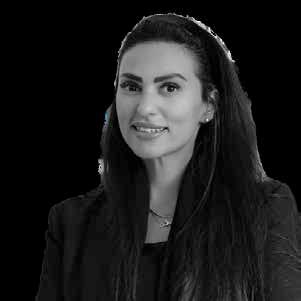
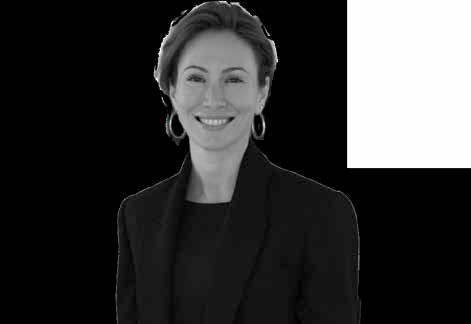







WOMEN IN ADVERTISING 2025
The words diversity, equity and inclusion (DEI) mean many things, and in the pages that follow, opinions about them are as diverse as the women whose experiences and perspectives fill them. Some see progress – more women in leadership, more inclusive briefs and more clients asking for female perspectives rather than just treating DEI as a check box. Others note that systemic gaps remain – from policies to subtle biase – pointing out that not everyone gets to speak or lead.
For some women, DEI has moved from a whisper to thunderous discussions; for others, it remains a work in progress, requiring more structure. Experiences differ: We hear from leaders about addressing imposter syndrome during brainstorms and in boardrooms. They talk about balancing cultural expectations with creative ambitions,
and raising hands to be heard in fast-paced environments. What unites these experiences is a shared commitment to build workplaces and campaigns that reflect reality, not just aspiration.
While some call for better representation; others request removing friction that holds back talent. Some challenge the industry to move beyond symbolic gestures and token roles and embrace nuance, joy, humour and individuality in storytelling. Others frame DEI as a strategic lever, linking inclusion to innovation, economic impact and creative relevance.
In the following pages, we note that progress isn’t linear. We evaluate untapped potential within the industry and give a voice to DEI – the way it wants to be heard.

WHEN THE LIGHTS GO OFF …
TBWA\RAAD’s Romy Abdelnour shares her thoughts on going beyond the applause – and the calm that comes from staying true,
delivering real value, pulling others forward and inspiring other women to do the same.
Iwas still blinking from the stage lights when the room went quiet. One moment I was in London, lifting the Gold trophy for Corporate Communication and Marketing Person of the Year at Campaign’s Global Agency of the Year Awards, and the next moment, I was alone in a hotel room, heels off, staring at the ceiling. The cheers were gone, leaving a single, heavy thought: Who am I when no one is clapping?
That question weighed more than the award itself.
On social media, gratification is instant. Likes pour in in seconds and disappear with the next swipe. A post or story feels thrilling for a moment, then the spark fades. Chase that buzz for too long and the real you begins to blur. I’ve been there. It’s exhausting and leaves you empty once the screen gets dark.
So I turned inward, seeking my answer …
I am a daughter to a mother who kept our family together as a jeweller after my father died, running a business by day and teaching us all about values such as generosity by night. I am a sister to an incredible woman who carved out a place for herself in finance, in a boardroom built for men. I’m a friend to several multitasking superwomen who raise families and juggle a thousand to-dos without blinking. I am also a former intern who stapled press kits until midnight, a former junior creative who shook through her first client call and a manager who still proof-reads every slide because details
matter. None of these truths fit on a trophy, yet they are the only reasons the award matters.
My career has never been a straight line. I zig-zagged from creative to marketing to communications, navigating wrong turns and sleepless nights along the way. Early on, I chased quick approval, nods, titles and likes, because I was convinced that applause and validation meant progress. Then a campaign fell flat, deadlines refused to move and, at three in the morning, doubt came knocking. A shiny post can’t sit with you at that hour. So I asked myself: Who would I be if no one was watching? And that question has become my daily compass. It keeps me grounded and honest, and reminds me that when the applause fades, only character remains.
Answering it changed my whole idea of success. Somewhere in my endless marathon, success stopped being a selfie with a medal and became an inside job: the person I am becoming; the value I bring to my team and workplace; and the path I’m clearing so that the next generation of women can walk forward with confidence.
And what a time to walk. I honestly believe there has never been a better moment to be a woman in advertising. For all its flaws, our industry is finally learning that empathy drives results and that brands built on trust grow fastest.
Michelle Obama says there is no limit to what women can achieve, and I see that limitlessness every day in the women around me: colleagues who pitch with courage; mentors who open doors for others; and rising creatives already unlearning the word impossible. Their paths prove that leadership isn’t a waiting game; it’s a door already open.
Yet even in this era of possibility, the temptation of shiny metrics still shouts for our attention. Scroll any feed tonight and perfection is everywhere: flawless edits, milestone captions, overnight success stories. Look closer. Real progress lives off-camera: in messy drafts, patient rewrites and the quiet kindness that keeps a teammate going.
Staying grounded, messy, honest, and human is a soft act of rebellion in a world that is constantly begging us to perform, and it’s where lasting work is born.
So here’s the promise I make to myself: when the curtain rises and the lights go off again, I won’t count the seconds of applause. I will look for the calm that comes from knowing I stayed true, delivered real value, pulled others forward and inspired the next woman in line to do the same. That is my true definition of success – worth every late night and early morning.
Here’s to us, to this women’s era and to building something that still shines long after the lights go off.
By Romy Abdelnour, Head of Communications, TBWA\RAAD
STOP BEING A CASE STUDY, START BEING THE STANDARD
Leo Burnett Beirut’s Nada Abisaleh says that DEI should be sustainable, structural and societal before sharing a powerful truth to women in advertising: “We belong here”.
If I had a dollar for every time I heard “DEI is a trend” I could retire. But I won’t. Because for me, and for countless women in Lebanon and across the Middle East, it was never a trend. It was survival. A conviction. It was about a drive that held us up in management meetings, edit suites and creative reviews, where we were the ‘only’ in the room – outside our homes and the kitchen.
After more than 35 years in this business, I am still puzzled by people’s superficial understanding and incorrect practice of diversity, equity and inclusion (DEI). Often, it is still mainly about performative creative campaigns and fluffy HR panels as opposed to what it was always meant to be: reshaping systems, policies, beliefs and habits so deeply, that women and all marginalised communities don’t need to shout any longer to be heard.
But let’s talk about her. The woman in advertising in the Middle East. The one with the fire in her belly, the deck in her hand and a hundred-year-old system in her way. What should she focus on now? In 2025? In a post-woke, AI-charged, fractured world where DEI stands for nothing and everything at the same time?
Let me take you on a journey, not just through the lens of Leo Burnett Beirut, but through the eyes of a woman who has navigated this region’s complicated love affair with gender balance and creativity, infused with my life changing experience at Cannes Lions 2025, serving as a jury member in Glass, the Lion for Change.
Let’s be clear. DEI should be sustainable, structural and societal.
Diversity, equity and inclusion are not interchangeable buzzwords. When done right, it isn’t just an initiative, it’s an infrastructure. It’s policies that ensure women don’t have to choose between motherhood and leadership. It’s briefs that start with inclusive insights, not just ‘femaletargeted’ adaptations. It’s clients who don’t just want a ‘female director’ but demand female perspective in strategy, creation and decisionmaking, while walking the talk in their own corridors.
“Let’s talk about her. The one with the fire in her belly, the deck in her hand and a hundredyear-old system in her way.”
A sustainable DEI model in our industry and region requires a fullspectrum lens. One that spans employment, representation mentorship, reward and creative awards.
Twenty years ago, DEI was one slide within a 50-slide PowerPoint deck, referred to as ‘women empowerment’. Occasionally, a brave person in the room would bring up ‘female leadership’ before being politely ignored. I remember panel discussions where I was asked how “I manage work-life balance” while my male counterparts discussed business transformation – and by the way, I still get this question in 2025.
hijab-clad girl skateboarding in a video. DEI when done right, is deeply unsexy. It’s complex. Tiring. Demanding. It’s legal policy. It’s structural overhaul. It’s budget (re)allocations. It’s about reprogramming a system that was never built for women, or people of colour or people with disability, in the first place.
And by all means, it should never be about winning in Cannes. Or not just. That’s why, in our part of the world, DEI can’t be decorative. Let alone opportunistic. It has to be structural.
This year, something shifted in Cannes. This year, all the Lions roared for change. The standout campaigns in Cannes weren’t just DEI-themed. They were DEI-anchored. There’s a difference. One claims inclusion; the other lives it. And DEI was no longer confined to the Glass category. On and off the Croisette at Cannes, it was about creativity, impact, purpose, commitment, authenticity and deeply rooted, long-term change. It was about culture-shifting campaigns – away from wokewashing, tokenisation and splashy one-offs.
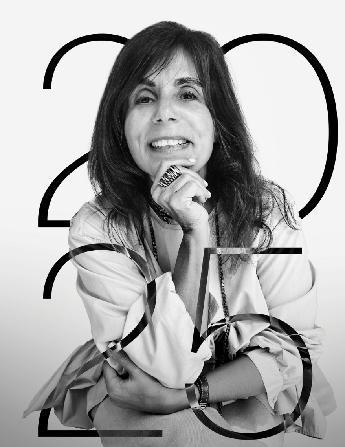
Ten years ago, DEI became more of a tick-box exercise. Until it died again or was simply erased from a company’s organisational structure and profit and loss statement (P&L).
Fast-forward to today. We went from a whisper to a battle-cry. We’ve shifted from “let’s hire one woman” to “let’s have more women in the C-suite”. That’s it? That’s what DEI means today? Nope. Not only. Thankfully.
Today, we’re talking structural, not just symbols. We’re asking the harder questions: Who’s in the room when decisions are made? Are we fostering equity or just representation? Are we driving change bottom up or just claiming it? Most importantly, DEI is no longer a social post on Women’s Day or a
It swiped Titanium, Film, PR and spanned across all Grands Prix winners, and invited itself into almost every jury room. What’s clear, this year at Cannes, was that it was no longer about the ‘wow’. Judges across all categories were looking for the ‘why’ and the ‘how’, fuelled by creative bravery and innovation. This year, Cannes rewarded tension, truth and transformation. That’s the sweet spot where DEI stops being ‘polite’ and ‘great’ and starts being powerful, acting as a real agent of change.
So, what now? What next? To every woman in MENA advertising reading this: Play real. Play big. Play authentic. Play for systemic change. Play for you, her and them.
And let’s remind the world – and ourselves – that the most powerful campaigns start with a truth and a need. Ours just happens to be: “We belong here”. And if that makes some people uncomfortable –even better.
By Nada Abisaleh, Head of Leo Burnett Beirut

BEYOND
That widened lens invites more participation – not just from men and women, but also from colleagues across the company.
Over the past three years, we’ve hosted panels spotlighting people doing impactful work: women who launched platforms for girls in sports, founders of media outlets telling nuanced women’s stories, authors, and even the creators of ‘Makani Homes’ – a platform connecting homeowners regionally and globally to facilitate cultural exchange and meaningful travel experiences.
We’ve explored the history of tatreez embroidery, invited colleagues to learn about geometric art and dabke dance, commemorated Srebrenica, and raised hundreds of thousands of dollars globally for Palestine and Lebanon through charitable campaigns.
The feedback has been consistent: these events make people feel included, curious and inspired. As one colleague put it, “The events may be tailored to one group, but they allow everyone to participate and engage.” That’s the power of dimensional storytelling – it deepens understanding rather than narrowing it.
Advertising faces the same imperative. Progress has given us better representation, but now we must move beyond being seen to being understood. That means rejecting shortcuts – the hijab as shorthand, the crescent moon as cliché – and embracing narratives that reveal complexity, joy, humour and individuality.
THE RISK OF SHORT-TERM STORYTELLING
Ironically, the same pressures that once drove tokenism in representation also drive short term thinking in brand building. Performance dashboards and ‘quick wins’ can be powerful, but they create blind spots. When we reduce audiences to segments and conversions, we risk flattening them into stereotypes.
I’ve written before about how tech’s obsession with ROI can erode long term brand value. The same principle applies here: nuanced storytelling builds trust and loyalty over time. Stereotypes might spike engagement for a moment, but dimensional narratives create emotional equity that lasts. In a region as dynamic – and globally visible – as the MENA region, that’s not just good ethics –it’s good business.
REPRESENTATION
Braze’s Mariam Asmar shares her take on storytelling as strategy, rather than a symbol.
When I wrote about tokenism and women’s representation in the Middle East region in 2019, we were still waiting for more inclusive stories to break through. At the time, a reductive logic applied to regional audiences in advertising – a headscarf here, a national dress there – flattening entire communities into a single narrative.
But 2025 feels different.
Today, there’s a surge of work – across the Middle East and globally – that centres women from the Middle East not as props, but as protagonists. Ramadan campaigns feel more thoughtful. Brand ambassadors reflect real diversity within the region. Even global platforms, from Nike to Netflix, have begun amplifying their voices in ways that feel less performative, more personal.
That progress deserves celebration. And yet, representation alone is no longer the finish line. The next challenge – and opportunity – is dimensionality.
WOMEN ARE NOT A MONOLITH – AND NEITHER ARE THEIR STORIES
WOMEN IN THE MENA CAN LEAD THE NEXT CHAPTER
Here’s where women in advertising, especially in the Middle East, have an extraordinary role to play. Many of us navigate overlapping identities – professional and personal, cultural and global – which makes us attuned to complexity in ways brands urgently need.
For example, let’s take a look at Huda Kattan, founder of Huda Beauty. Born to Iraqi parents and raised in the US, she built a global beauty empire that celebrates heritage rather than concealing it. Her mentorship program, Huda Beauty Angels, invests in women led brands such as KETISH, an Egyptian American startup tackling taboos around women’s bodies. Rather than shying away from stigmatised topics, she funds and elevates them – using beauty not just as business, but as a bridge to deeper cultural conversation. That’s the shift: from representation to investment, from surface to substance.
FROM PROGRESS TO POSSIBILITY
“Progress has given us better representation, but now we must move beyond being seen to being understood. That means rejecting shortcuts.”
At Braze, where I serve as Executive Sponsor of our Muslims ERG, this principle shapes how we design our programming. We aim to go beyond religious milestones, recognising the blend of faith, creativity, and community that defines identities.
So where does this leave us? In a rare and exciting place. Representation is improving. Awareness is growing. And now, we have the chance to move the conversation forward — to build brands that don’t just include women, but truly reflect them in all their multidimensional humanity.
Imagine campaigns that celebrate culture, tradition and art alongside modern entrepreneurship. Stories that explore joy as well as struggle, humour as well as heritage. Narratives that resonate across audiences because they are specific, not in spite of it.
The opportunity isn’t to chastise the industry for where it’s been, but to inspire it toward where it can go.
As women in advertising, we have both the lived experience and the creative platform to lead that charge – proving that the most resonant brands aren’t built on what makes us the same, but on what makes us richly, beautifully different.
By Mariam Asmar, VP Brand Marketing and Strategic Consulting, Braze
Why adaptability is the new creative currency
Campaign Middle East caught up with Lulwa Al-Harbi, CEO of Acquaint Communications in Saudi Arabia, to get her view on advertising in the Kingdom today and what she expects the industry to look like in the next 10 years.
Q:Lulwa, let’s start a with a little about your journey. Could you tell us how you got here, and what you do today?
Lulwa Al-Harbi: Believe it or not, I fell into the digital media landscape and the world of communication quite by chance. I studied management information systems (MIS) and that was going to be my chosen path. But, of course, life had other plans. A phone call from the right person at the right time got me curious enough to give the world of digital and social media a try. “How hard can it be?” I remember thinking to myself. Many years later, I find myself blessed to be sitting on the board as a CEO and Partner at Acquaint Communications, which, I humbly say, is one of Saudi’s most consistently growing local agencies.
Q: This issue looks at ‘Women in Advertising’. Your thoughts?
My view on this topic is quite simple – and I think many of my colleagues may agree with me when I say this – but the ‘gender’ conversation is not one we invest much energy in. Our approach is driven by output, not input. We look at what we’re trying to achieve for our clients, whether its strategies, campaigns, designs or even media. When we think that way, there is one insight we have consistently found: Consistent representation in the thinking process from both genders adds value. It takes men and women of all sorts to create great work.
Q: That’s a very interesting view. Would you say that this has always been the case for you, or did you find things to be different in the earlier part of your career?
Although the industry was generally male dominated back in the day, Acquaint Communications was always one of the more progressive groups in the country; it’s been that way since the agency was born. Surprisingly, I would say our male to female ratio was a lot more balanced versus the industry, even as early as 2010. So, although I personally didn’t quite have a ‘struggle’ in my own workplace, I know that seeing women in leadership in this industry was less common at the time.
Q: As an industry leader, what changes have you witnessed over the last few years?
The rate of change in the communications industry has been
noticeable. I believe that this rapid change in the industry has been driven primarily by the shift in the average consumer over the past decade.
It’s not only change within consumer habits but also changing consumer expectations that drive so much of how we operate. As consumers, we are simply not the same as we were 10 years ago, don’t you think? This, of course, is thanks to the realisation of Saudi Arabia’s Vision 2030 programmes, which are coming to life.
Q: With rapidly evolving consumer expectations, what industry predictions would you be willing to share?
Looking into the future is a tricky thing. As human beings, you can only use the knowledge of the past to predict the future. With what we see of the past, I can comfortably tell you that those in the industry that don’t evolve with the prevalent consumer mindset may struggle. That would be my first and safest prediction.
Additionally, I believe that a shift is occurring within our industry as we speak, due to the advent of artificial intelligence (AI). We are riding the wave and actively participating in this new and exciting era of AI.
I would expect a few new norms to be formed in the ‘agency of the future’. I expect multiple processes to become redundant. I also suspect that a few positions may eventually be phased out. On the flip side, I expect a whole bunch of new positions, requiring a totally new skill set to be formed in the agency of the future, too. We are looking at exciting times ahead. The race to stay ahead of our consumer, may become increasingly demanding!
Acquaint Communications is an award winning, full service agency, with more than 150 employees with offices in Riyadh, Jeddah and Cairo. Information on clientele and services can be found on: https://www.acq-c.com/
“I can comfortably tell you that those in the industry that don’t evolve with the prevalent consumer mindset may struggle.”
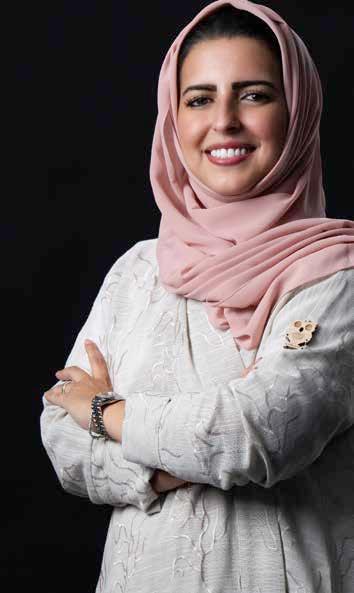

‘Difficult’, ‘undiplomatic’, ‘confrontational’, ‘patronising’, even downright ‘rude’. A few of the words used to describe me over the course of the past three decades of my career.
In a gender ‘translator or lexicon’ these could translate as demanding, uncompromising, direct, assertive and honest when describing a man.
This is the invisible tax that women pay for being direct. The same behaviour that earns men praise can cost women trust, influence and opportunity.
Growing up, at school and through university, I was never so conscious of this distinction. I lived in a bias-free bubble where I chose to believe that I got to where I wanted based on the effort I put in and based on merit, regardless of my gender. This bubble burst the minute I started interviewing for jobs.
In 2025, this bias is still alive. In fact, in some places, it’s getting worse. Global research shows prejudice against women leaders is rising. Young people in some countries are now less accepting of women in top roles than their parents. While women make up
“We need to call out bias when we see it – not later, not in private, but in the moment.”
60 per cent of entry-level roles in the industry, reports show that they hold just 29 per cent of leadership positions. At the current pace, full gender equality is still centuries away.
We’ve made great progress in talking about the problem. We’ve built communities, shared solutions and put equality on the agenda. But talk alone is not enough. Too often, these conversations turn into ‘us versus them’ – women versus men – instead of focusing on what really matters: what each human being brings to the table.
The ladder to leadership is still broken. Women are held to higher standards, face tougher scrutiny, and must continuously prove they deserve their seat at the table. This costs organisations talent, trust and progress. But we must be honest. Diversity and inclusion can’t be a PR exercise. If it’s just lip service, it risks doing more harm than good. Progress happens when acknowledgment turns into action. That means holding everyone to the same rigor, respect and accountability – and backing each other up when it matters.
Our industry is built on influencing perception and behaviour. That means we have both the responsibility and the ability to lead this change. At the 2023 D&AD Festival, brand strategist Lori Meakin pointed out that women don’t need brands to “give” them confidence. “They already have the confidence,” she said. What they need is for us to stop undermining it with stereotypes and tokenism, because how we portray women doesn’t just affect how they see themselves – it shapes how men and boys see and treat them.
If we can change culture through entertainment and advertising, we can change workplace norms and leadership standards. But we have to start at home.
Diversity, equity and inclusion can’t just be a line in a brand manifesto. It has to be embedded in how we hire, promote and support talent.
The creative industry can challenge bias and shift how women are seen. Dove’s ‘Real Beauty Redefined for the AI Era’ campaign exposed how generative AI repeats narrow beauty ideals and showed how to make them more inclusive – proving that even technology can be retrained to reflect real diversity.
AXA France’s ‘Three Words’ treated domestic violence as an insurable risk, changing policy so women and children could get safe housing and support within 24 hours – a brand using its core business to remove a barrier to safety and independence. And it’s not just about policy; creativity can also dismantle stereotypes that limit women’s potential. LUX’s ‘Change the Angle’ called out the objectification of female athletes, demanding they be valued for skill, not appearance.
I’ve worked in this industry for almost 30 years. The higher you climb, the narrower the space – and for women at the top, the scrutiny is greater and the resistance stronger. I used to keep my head down and let hard work speak for itself. Now, I feel a responsibility to speak up, so the next generation of creators won’t have to fight the same battles just to be heard.
Today, I don’t need anyone to ‘cut me some slack’ because I am a woman. At the same time, I also do not want to have to fight twice as hard to prove my worth ‘as a woman’. I am asking to be held accountable to the same standards as any other human.
We need to call out bias when we see it –not later, not in private, but in the moment. We need to mentor and sponsor women without excluding men. We need to design systems that measure performance by results and impact, not by how closely someone fits an outdated leadership mould.
If you lead in the creative industry, or anywhere else, I hope you’ll take this to heart:
Stop thinking in terms of ‘men versus women’. Start thinking in terms of humans. Hold everyone to the same standards, with the same respect and accountability. Use your creative power to dismantle the double standards that hold people back.
Because when we’ve got each other’s backs, we all move forward.
By Lara Assouad, Executive Creative Director, Landor
BEYOND GENDER
Landor’s Lara Assouad on how the industry can lean into creativity to end the double standard in leadership.
The media industry in the Middle East is changing at an unprecedented pace. Shaped by shifting consumer behaviours, platform disruption and a relentless push toward innovation, we are no longer just adapting, we are racing to anticipate. And with AI transforming how we work, the pace of change is no longer linear – it’s exponential. What felt cutting-edge six months ago can feel outdated today.
In this environment, staying ahead is no longer about reacting quickly; it’s about being ready before the wave even hits.
In my experience, the best-performing teams aren’t just the fastest, they are the most prepared. They don’t rely solely on instinct or legacy experience; they consistently sharpen their craft, stay close to culture and understand what audiences care about right now. As leaders, our job is to cultivate this hunger for knowledge – not as a one-off learning initiative, but as a way of operating.
WHY FUTURE-FIT SKILLS ARE THE DIFFERENTIATOR
The Middle East market has always had its own rhythm, deeply rooted in cultural nuance and consumer identity. But what’s shifting now is the acceleration of digital behaviours across generations – and the data tells the story. We’re seeing audiences not only spend more time online, but also demand higher relevance and faster responses from the brands they engage with.
To meet this demand, it’s not enough to be tech-aware. Our people must be techconfident. That means being fluent in data, experimental with content, brave with creativity and, critically, confident in how to harness AI as part of their toolkit. This fluency doesn’t come from training once a year, it comes from continuous practice and a culture that rewards curiosity.
I’ve always believed that craft – real, refined capability – is what separates great work from good work. Whether it’s media strategy, performance optimisation or audience insight, the best talent are those who keep evolving their skills and push their thinking forward. Future-fit talent is future-proof talent.
BUILDING A CULTURE OF LEARNING AND ANTICIPATION
At dentsu, one of our core beliefs is that people power progress. We invest in our teams not just to do great work now, but to be ready for what’s next. We’ve made learning a non-negotiable, from AI literacy programs to market insight exchanges, leadership mentoring and cross-functional workshops. We push this learning agenda across every part of the business so that curiosity becomes habit and innovation becomes instinct.
It also means fostering diversity of thought. A future-fit team is not built on one type of thinker or one skill set. It’s a blend of strategists, technologists, creatives, analysts and cultural thinkers – each one bringing something different to the table. In the Middle East, where the talent pool is both global and local, this blend is a unique advantage if we nurture it well.
FUTURE-FIT
Carat MENA’s Fiona Black on why craft is a competitive edge in the algorithmic era.
FOR WOMEN IN MEDIA, GROWTH IS THE EDGE
For women in advertising, especially in this region, future-proofing our skills isn’t just a strategy, it’s an equaliser. Staying sharp gives us leverage, presence and confidence. The more we grow our capabilities, the less we have to ask for a seat at the table. We become the ones shaping the conversation. But that growth must be intentional. We need to stop waiting for permission to learn and instead claim space as lifelong students of this ever-evolving craft. Mentorship plays a huge role here. I’ve benefitted from people who challenged my thinking, shared
“The more we grow our capabilities, the less we have to ask for a seat at the table.”
generously and led by example. Now, I see it as a responsibility to pay that forward.
RESPONSIBILITY OF LEADERSHIP
As leaders, we’re not just guiding output; we’re shaping the conditions for growth. It’s our job to create environments where learning isn’t a luxury, it’s a daily behaviour. That could mean allocating time each week to explore something new, encouraging cross-functional collaboration, or simply asking: What did you learn this month?
The media world will only get faster. AI, retail media, attention metrics and decentralised content – these are no longer future trends; they’re now. But instead of fearing that pace, we can meet it with readiness. If our teams are future-fit, they don’t just survive change, they drive it. So here’s my ask to our industry: let’s move from catching up to getting ahead. Let’s reward craft, amplify learning and build cultures that see curiosity not as a soft skill, but as a hard requirement.
The future isn’t waiting – and neither should we.
By Fiona Black, Managing Director, Carat MENA















































With a game-changing agenda packed with discussions from data-driven commerce media and GenAI-powered storytelling to the rise of agentic AI and next-gen brand experiences, this event will gather senior marketers to unpack what it really means to stay relevant in a rapidly shifting advertising landscape.
LAST CHANCE TICKETS ON SALE


Gold Sponsors
Presented By
Here’s a candid discussion between Serviceplan Arabia’s Regional Creative Director Sara Eid, and the Head of Strategy and Director of HR Frances Bonifacio about leadership, the value of genuine support and the realities of forging paths in the creative industry.
BONIFACIO INTRODUCES EID
Frances Bonifacio: I’d heard plenty about Sara before she joined us. “You’ll love her energy, her authenticity and her grounded creativity,” they said. “She just gets it.” Still, none of their hype prepared me for the whirlwind of feisty brilliance that shook my hand that warm Friday afternoon. The woman I met holds so much reverence for her craft. Something about her no-nonsense nonchalance struck me as a rarity – a female creative leader who knows her full worth. But what I love is that beneath that creative firestorm and quiet humility is a woman utterly alive. The one who hugs the dancefloor and dances to no one but herself alone, graceful, always purposeful. Here is her wit on display: How has your identity as a Saudi shaped your approach to leadership in an industry once defined by ‘Mad Men’?
Being Saudi, and being a woman, came with a double layer of responsibility. I’ve always felt like I was representing more than just myself; I was representing Saudi talent and, more specifically, Saudi women. That awareness made me deeply committed to doing justice to that representation. It also made me incredibly invested in the next generation of Saudi women, who inspire me every day. I’ve learned that while many barriers have been lifted, others remain – some structural, some societal and some internal. Yet I’m privileged to witness incredible work, sharp thinking and powerful women lighting up our team every day.
How do you balance authenticity and assertiveness as a woman in a creative leadership role?
This one took time. Early in my leadership journey, I leaned heavily into assertiveness – probably, as a response to the environments I was in. Over time, I began leading with more empathy. But finding the balance between both hasn’t always been easy. What grounds me now is honesty – with myself first, and with others second. Honesty about what works and what doesn’t; about where we are and where we need to go. Honesty as a team, and honesty with each individual. What advice would you give to women who want to stand tall and support each other in workplaces that are still changing?

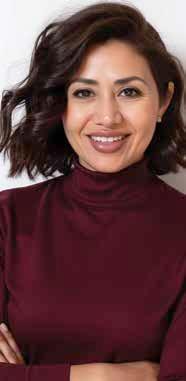
STANDING TALL TOGETHER
A Saudi creative lead and a non-Saudi strategy lead engage in conversation, sharing honest assessments and exploring the impact of women supporting women in the workplace.
My most honest and, perhaps, brutal advice: give it time. Give the place a chance to change – and choose the right team to help bring your vision to life. Make sure you have a support system, whether from leadership or other departments. But if the culture isn’t aligned, if your values feel compromised, set a clear cutoff point, then seek out an environment that nurtures your leadership style and shares your vision.
EID’S TAKE ON BONIFACIO
Sara Eid: When I heard about Frances, I was intrigued because she was not only Head of Strategy, but also Head of HR –two fields I’ve always been curious about. It’s not often you see one woman holding both roles, and leading with strength in both. Frances is exceptional, sharp, articulate and undeniably brilliant at
“My most honest and brutal advice: Give it time. Give the place a chance to change.”
what she does. But what I admire most is the woman behind the title: gracious, gutsy, fair and full of heart. She offers support without being asked. She leads with integrity, empathy and unwavering standards. And she does all of this while being wholly, unapologetically herself. Let’s unpack the story behind the powerhouse: You work across two very people-centric disciplines – how do you maintain objectivity while staying empathetic?
As a strategist, I want to bring out the best in those who look up to me, mentoring as keenly as I was once mentored. I remind myself that I was once in their shoes and how I lead now shapes their own standards. In HR, I focus on creating a safe space where people feel heard and valued, making fair decisions between company goals and individual wellbeings. When people see head and heart balanced, I find them more willing to trust the tough calls. Has there been a pivotal moment when you questioned your path as a leader?
Yes. It came with learning to let go. It is never easy to let go of something you have grown so passionate about that the thought of not being able to advocate for others from a place of authority is disarming. You start to second guess yourself, doubting if you ever made any real impact. But life teaches you a powerful lesson, that you don’t need a title or position to care for others – only a willing heart.
What would you say to younger women just entering the field, who may not yet see themselves as leaders?
Stay open. Stay teachable. Come at things with as much curiosity and guts as you can muster. Soak up learning. Never not be learning. Never not be questioning: question more, question why. Don’t be afraid to poke at things until you get answers. Leaders are made when all that restless learning sparks visions – of newer, better and bolder ideas. And when you find yourself at the top, teach others to keep their hearts open, their curiosity sharp.
Sara Eid Frances Bonifacio
DEI HAS OUTGROWN ITS GENDER DIMENSION
“Why does gender have to play a role?” asks Annalect’s Dr. Hoda Daou.
We have witnessed a significant focus in recent years on empowering women, whether in the media or other industries. We have seen this at the workplace, where we aim to ensure an inclusive environment that meets the needs of everyone, regardless of gender, age, background or culture, especially those who are underrepresented.
As a woman who has been in the tech industry since I was 18, I have witnessed decades of gender-based bias.
I remember the days when we would be, at best, 5 per cent women within the overall attendance in our engineering classes. There, it was hard to fit in as a woman and be treated just like any man, with the same level of respect and equal importance. Twenty years ago, women were seen as the outliers of engineering degrees. We had to fight a lot for the right to belong in that environment.
Then I moved to the workforce and worked as a research scientist for the biggest human capital management company in the US. On my first day, the VP of technology looked at me and said, “I am glad I was finally able to hire a woman for the role”. My reaction was a mixed sentiment of joy and bitterness.
Joy – because it was a great position to be in after I graduated with a PhD in Engineering. It was one of the first data scientist roles building the latest machine learning and artificial intelligence (AI) solutions, and experimenting in that field that was still in its initial stages. Bitter – because of the word ‘woman’. Why did my gender play a role in my selection? This is when I realised that 10 years ago in the US, corporates were incentivised to hire women in tech.
This made me question the reason why I was selected and left a very bitter feeling. And as a woman, I needed to prove that I am in the role ‘despite’ being a woman. I deserved it just like any ‘man’. I needed to push harder and show that my gender didn’t play a role in my being in this position.
Academia came next. I moved from being a research scientist to working as an academic professor at the American University of Beirut. As part of my role, I was giving very quantitative courses for the business school, focused on data processing, coding in Python and social media analytics. I grew to love teaching
“Women do not need to act like men to fit in, to feel empowered or to be strong. Women can belong in any environment.”

and began my academic research on AI applications in social media.
As a woman in that role, I felt my gender – or my gender-based experience – helped me build very strong connections with my students and teaching assistants. It is through my compassion as a mom that I could understand them and create unique bonds to empower them. Similarly, because of my struggles as an engineering student back in the 2000s, I could shelter them from any biased treatment. Today, as a woman and leader in media, I feel things have changed a lot.
We owe it to ourselves to acknowledge that: (1) the environment has become more supportive and empowering, and (2) we have changed internally and become stronger.
I lead the analytics unit of Omnicom Media Group, a team of data engineers and scientists. I never notice the gender of my team. I see everyone as a person with their own struggles and challenges in life – wanting to grow, and feel valued and supported, no matter what gender. However, as a woman leader, I feel my gender-biased experiences and challenges helped me become the individual I am today. A person who puts compassion first.
As women, we are where we are because of everything we fought for, collectively as women. We fought to be treated and respected regardless of gender. Women do not need to act like men to fit in, to feel empowered or to be strong. Women can belong in any environment. But as women, we build from the struggles and challenges we faced because of our gender. This gave us resilience and strength.
Nowadays, there is widespread awareness of the importance of DEI. It has witnessed strong integration into our culture and workforce.
We are treated equally and feel welcomed and valued for the people we are, regardless of gender. This should come naturally in all environments and industries. We can confidently say that DEI has outgrown its gender dimension and it’s time to focus on other pressing challenges.
By Dr. Hoda Daou, Managing Director, Annalect
Before I jump into a topic I feel passionately about, let me give you a bit of my backstory … born in South Africa and raised by a single mom. We couldn’t afford tertiary education but I was lucky enough to get a job as a receptionsist for an advertising agency straight out of school. I spent the next 13 years gradually working my way up the advertising ladder, eventually discovering my true passion in the TV Department.
In 2003, I was offered a position as Agency Producer at Team/Y&R in Dubai and, so, the next chapter of my life started. After a couple of years, I moved into freelancing and over to the production house side. Jump cut to 22 years later – I’m still here, still doing what I love, but I’m no longer the same person who first walked through the door.
MENTORSHIP. WHY?
Because I wouldn’t be who I am today without the incredible mentors who guided and supported me along the way. I’m a firm believer in paying it forward. So, here we go …
In an industry fueled by creativity, collaboration and connection, mentorship stands out as one of our most powerful tools. It empowers individuals to navigate and thrive in an ever-changing landscape.
“When anchored in purpose, mentorship becomes a legacy and shapes the industries and cultures we’re part of.”

MENTORSHIP IS LEGACY
Jax Dyer-Donaldson explains why truly effective mentorship must be intentional, engaged and mutually rewarding.
This is especially true in the Middle East region, where cultural transformation and creative ambition are growing side by side. Contrary to popular belief, mentorship isn’t just about giving advice. Truly impactful mentorship is intentional, engaged and mutually rewarding. When anchored in purpose, mentorship becomes a legacy and shapes the industries and cultures we’re part of.
So, how can you mentor with meaning? Here are my top tips.
1. Be intentional: Start by understanding why you’re mentoring. Do it for the right reasons. To support women navigating a space you know well. To help emerging talent avoid the mistakes you made. Once your purpose is clear, co-create goals – whether it’s building skills, boosting confidence or navigating career paths. Then, define the structure: How often will you meet? What’s the preferred method of communication? What’s the desired outcome? Intentionality and clarity build trust.
2. Create a safe space: Real learning only happens when people feel safe. Mentees need to know they can ask ‘stupid’ questions, own up to mistakes and speak honestly – without fear of judgment. Celebrate their small wins. Normalise setbacks. Especially in creative industries, where rejection, rework and risk are daily realities, be the voice that says, “I’ve been there too”. Your empathy becomes their safety net.
3. Be consistent and reliable: Trust is not built overnight – it’s earned through steady, dependable actions. If you commit to reviewing something or attending a meeting, honour that promise. Even a quick check-in can go a long way. It’s not about how often you show up, but that you consistently do. Reliability reinforces respect.
4. Listen more than you speak: Great mentors know when to simply listen, and when to offer insight. Focus on understanding your mentee’s world before sharing advice. Ask open-ended questions like:
What are you working on right now? What are you struggling with?
What does success look like for you at this stage? Be fully present. Sometimes, what they need most is simply to feel heard and validated.
5. Guide, then step back: Mentorship isn’t about moulding someone into your likeness – it’s about helping them discover and define their own path. Offer guidance, share experiences and present options. Then step back and support them through the outcomes. Growth happens when they learn to lead themselves.
6. Share real stories: Experience is your superpower, but its power lies in honesty, not
perfection. Share your failures as much as your wins. Talk about the grey areas, the moments of doubt, the lessons you had to learn the hard way. Be authentic, vulnerable, and generous with what you’ve learned. Real stories build real connection – and that’s where the learning sticks.
7. Give constructive feedback: Many mentees grapple with self-doubt. What they need is a balance of encouragement and challenge. Deliver feedback that is honest, specific and respectful. Use simple frameworks such as:
Start, stop and continue: What should they start doing, stop doing and keep doing? Situation, behaviour and impact: “In this situation, you did X, which led to Y...” When feedback is constructive and compassionate, it becomes a catalyst for growth.
8. Encourage self-reflection: Mentorship isn’t just about building skills; it’s about nurturing self-awareness. After a project or key decision, prompt reflection with questions like:
What did you learn from that?
What would you do differently next time? By encouraging thoughtful reflection, you help your mentee build emotional intelligence, sharpen their judgment and develop a strong internal compass for future growth
9. Make introductions: Sometimes, the most powerful thing you can offer isn’t advice –it’s access. Recommend your mentee for projects, panels, internships or communities. A thoughtful email or LinkedIn intro can open doors they didn’t even know existed.
Connections create opportunities – and opportunities change careers. To wrap it up, mentorship isn’t about perfection – it’s about presence. It’s about showing up and helping someone else see the power in their potential. You make space for others who didn’t see themselves in the room until you opened the door. And when your mentee goes on to mentor someone else, your impact multiplies. It’s a gamechanger.
In film, as in life, we don’t succeed alone. We succeed when someone ahead of us believes in us – when someone walks beside us, even for a short while, and says: “You’ve got this.”
That’s mentorship. That’s legacy.
By Jax Dyer-Donaldson Independent Production Consultant
IS DIVERSITY, EQUITY AND INCLUSION (DEI) MERELY A TOPDOWN STRATEGIC INITIATIVE OR IS IT ALSO BECOMING INCREASINGLY EMBEDDED WITHIN THE ORGANISATIONAL MINDSETS AND CULTURAL TRANSFORMATION?
As long as DEI initiatives continue to bring in major rewards to agencies and clients alike, we will continue to see it playing a pivotal role within the agency culture. Bringing more women to the forefront across more functions, newer roles and ‘unexpected’ positions has
‘OUR SUCCESS IS CONTAGIOUS’
Naila Fattouh, CEO, Impact BBDO – Egypt
cultures. Ultimately, all we need is to be successful, and if diversity leads to success, then it will be a key driver for agency transformation.
WHAT MECHANISMS OR METRICS SHOULD ORGANISATIONS USE TO MEASURE THE EFFECTIVENESS OF DEI EFFORTS BEYOND RECRUITMENT STATISTICS?
At BBDO, diversity has a direct correlation to business growth. Diversity has helped us win new business, win awards and grow organically. With different people thinking together, we can conquer different industries, different clients and different campaign demands. Accordingly, DEI initiatives should have the same metrics as any other initiative or investment done by an

“In an industry that is tightly correlated to pop culture, DEI isn’t just a check list; it is an important tool for checks and balances.”
agency, it should ultimately lead to a healthier bottom line.
What do you believe are the biggest hurdles to DEI within the advertising sector regionally, and how can these be addressed?
One of the biggest hurdles is: Breaking stereotypes of what different genders bring to the table. We are still struggling to redefine how women are perceived within the industry. Women are not new to advertising, but women are new to presenting witty comedy for sports advertising. Women are new to directing action packed spots. Women are new to leading regional in-house productions. Women are new to cracking new IPO strategies. While clients, and the industry at large, seem to be comfortable with women leading on a diapers campaign, today, we are pushing for those same clients to
be comfortable with women leading any campaign.
DO YOU BELIEVE DEI FATIGUE IS SETTING IN WITHIN THE INDUSTRY?
I believe we are very far from DEI fatigue, I think we’re at a DEI high. Women are proving to add incomparable value at every stage of the advertising process. We’re seeing more female creatives win awards. We’re seeing more female directors entering the field. And the more they succeed, the more the fatigue will turn into energy. Our success is contagious, not just amongst ourselves but to everyone around us. Our managements, our teams and clients can feel the energy, and the value we bring will become normalised and expected.
IS DEI DRIVING MEANINGFUL CHANGE?
In an industry that is tightly correlated to pop culture, DEI isn’t just a check list; it is an important tool for checks and balances. DEI brings meaningful change, when you realise how crucial of a role it plays in ensuring your solutions and ideas are ready for a wider audience. The more we have people from different backgrounds looking at the work, reviewing and assessing, the more we’ve checked that it works and that we’ve balanced the message perfectly for success. This is the real asset DEI offers any agency.
COULD YOU SHARE A MISTAKE / FAILURE FROM YOUR PERSONAL LIFE OR CAREER THAT COULD BE A KEY LESSON FOR OTHERS?
Where does one begin? Several lessons come to mind. For starters, I wore high heels to work for almost 10 years every day to look older; more ‘senior’. I joke with the younger girls at the agency who remind me of my ‘cuter’ days in advertising about possibly adopting similar approaches to gain their clients’ trust as senior leaders. But thankfully, the newer generation feels more confident and can get the job done in sneakers.
But jokes aside, my key mistake is wasting time on clients, pitches and challenges that were not ready for me. The truth is, in our region and possibly around the world, there will be clients who prefer a big mustache. It’s not my job to correct this, it’s their job. Instead, focus on clients, initiatives and teams that value what you do bring to the table. Own your strengths and partner with those who need and appreciate these strengths.
It’s easy to assume that gender gap within the Middle East commercial film production industry is a thing of the past. Sure, women are everywhere now: producing, line producing, running sets and companies. We’re not the exception anymore; in many ways, we’re the engine.
But talk to the women on the ground and the story shifts. It’s less about being seen, more about getting a fair shot; less about progress made, and more about how slowly it’s coming.
The truth? We’re tired. Not the kind of tired from long, tough shoots – that kind we’re built for – this is different. It’s a quiet, heavy fatigue that builds when you keep hearing about DEI, but don’t see it truly lived in the system. When you’re doing the work but not always invited to shape the bigger picture.
STILL IN THE WINGS
Women producers are everywhere in our region. It’s one of the few parts of the industry where we’ve become the norm. But when it comes to being directors, directors of photography (DPs) and creatives –especially in the bigger, glossier jobs – the default is still male.
The higher you go on the creative ladder, the more the gender gap reappears. It’s shifting, yes, but it’s not there yet. And the frustrating part? It’s not about talent. It’s about trust – or rather, a lack of it.
I’ve seen incredible women talent from the region – smart, creative and battle-tested – consistently get passed over for highprofile gigs in favour of male directors flown in from Europe or the US.
Meanwhile, the briefs are full of buzzwords such as ‘authentic’, ‘inclusive’, ‘local storytelling’, and ‘women-led’. Which is great on paper. But if the crew behind the camera doesn’t truly reflect those values, how real are they?
Too often, we end up producing glossy empowerment campaigns – directed by men, shot by men, but with women holding it all together quietly in the background. Let’s call it what it is: inclusion as a mood board, not a mindset.
Now, I don’t want to sound cynical. There’s a lot of good intent in the industry right now. People do want to do better. But that’s also why we need to be honest about where we’re falling short. Because DEI isn’t just about who’s present – it’s about who’s heard. Who’s trusted. Who’s allowed to steer, not just support. We’ve all sat in those meetings where a woman producer is running the entire show, but the client still asks the male director for final creative input. We’ve witnessed times when women are expected to ‘soften’ the message or keep things polite, even when the conversation needs a bit of friction.
That said, there’s real momentum building. And a lot of it is coming from the next generation. Young women entering the business now are walking in with a different energy.
They’re not waiting to be chosen – they’re claiming space, asking better questions and challenging things we used to just accept. That shift is powerful.
The friction usually comes from the older structures – the ones still operating on outdated hierarchies or unspoken rules about who gets the big jobs. But even that’s starting to crack. Slowly and stubbornly, but surely.
WHERE DO WE GO FROM HERE?
There’s still a lot we need to fix – these are some of the biggest gaps:
Clients still tend to assign ‘high-concept’ or ‘cinematic’ jobs to men. Women are more
“If we’re serious about DEI, it’s time to stop performing progress and start living it behind the scenes – and far beyond the hashtags.”
likely to get the lifestyle, beauty or causedriven briefs.
Power by default is another persistent issue. The director is still seen as the creative lead, even when a producer has been shaping the project from day one.
We’ve made strides in diversity, but that doesn’t automatically mean inclusion. More women may be on crew lists, but senior and technical roles still lean heavily male. And then there’s the emotional labour. The quiet work that doesn’t show up in the profit and loss statements (P&L). Women are often expected to do the behind-the-scenes mentoring, mediating, advocating and representing. Yes, it matters, but it’s extra – and it’s rarely acknowledged
Progress means changing all of that and it starts with:
Hiring women because they’re brilliant – not just when the brief asks for a ‘female perspective’.
Giving female producers and crew the space to influence creative, not just execution. Supporting women directors, DPs and editors early on, so they’re ready when the big calls come.
Normalising women in charge. Not celebrating it every time like it’s a miracle.
DEI can’t be a checkbox. It should be as standard as decent coffee on set or a working comms channel. Progress is when no one blinks at the sight of a woman leading a major commercial shoot in this region.
That’s the bar – and if we’re serious about DEI, it’s time to stop performing progress and start living it behind the scenes – and far beyond the hashtags.
Until then, I’ll keep producing. I’ll keep asking the uncomfortable questions. And I’ll say it clearly: we don’t need another empowerment campaign. We need empowered teams. The momentum is here. Let’s not waste it.
By Joyce Hadife, Executive Producer, City Films, Underground International UAE and KSA

DEI ISN’T A MOOD BOARD
City Films’ Joyce Hadife says it’s time for the industry to start living DEI in production.
Diversity, equity, and inclusion (DEI) has transcended from a trending topic to become fundamental to business success. Its true power emerges when woven into every layer of a company’s operations. The business case is clear: a 2023 McKinsey report found top-quartile companies for gender diversity are 27 per cent more likely to outperform financially.
For marketers, embedding DEI principles into our work unlocks new ways of thinking, better strategies, and greater creativity, leading to groundbreaking campaigns and tangible growth for our clients.
That’s what makes our industry special. Not only do we have the power to make positive change within our organisations, but we’re also privileged to have access to platforms from which we can enact change beyond our industry into the world around us. How many other industries can reach, educate and inspire millions of people every day?
So, while we’ve held a mirror to ourselves and made the necessary changes as employers and as an industry, it’s essential that we turn our attention to what we can do as marketers to encourage further and accelerate positive change in our region and beyond.
As Account Director for adidas, I have witnessed firsthand the positive impact of coding DEI into business operations and marketing strategies. Adidas has a long-standing history of female empowerment, both regionally and globally.
For instance, consider their groundbreaking ‘Liquid Billboard’ on Kite Beach in Dubai, promoting the launch of adidas’ modest
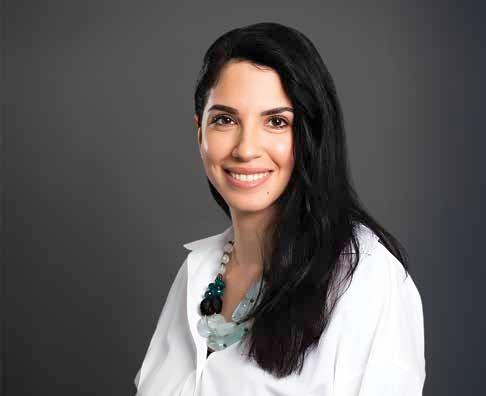
YOU GOT THIS!
WPP Media Brand – EssenceMediacom’s Alaa Hijazi says advertisers and agencies can accelerate positive change.
swimwear product line. According to Lloyd’s Register, globally, 32 per cent of women didn’t feel comfortable swimming in public. In the Middle East, this figure was almost three times higher. Using this insight, adidas decided to act. It didn’t just launch a product; it sparked conversations and challenged perceptions on a global scale, landing it a coveted Cannes Lions award. It wasn’t just about selling swimwear; it was about acknowledging and celebrating the diverse needs and aspirations of women. The campaign demonstrated how DEI drives creative excellence and in turn, commercial success, reaching 295 million and earning $1.35 million in earned media.
In a more recent campaign, adidas set out to challenge the norms in a market with a historically male-dominated football scene. Its ‘You Got This’ campaign in Saudi Arabia starred Farah Jefry, a young, female Saudi footballer who, beyond her athletic prowess, embodies the transformative journey of Saudi Arabia, where women are empowered to push boundaries in sport and beyond. This initiative exemplifies how a global brand can utilise its platform to champion local heroes and contribute to meaningful social change.
These are just two of many adidas campaigns that have sought to empower its female consumers – and women, more broadly. In my time working with the brand, I have been inspired by its commitment to DEI. While this has long been a part of its identity, many brands, both locally and globally, have not yet explored the potential of integrating DEI messaging and approaches into their communications, and are crucially missing out on both creative and commercial gains.
While some brands are further through their DEI journey than others, it’s never too late to start. You won’t be able to change the diversity make-up of your team or implement DEI initiatives across your business overnight. However, in the age of AI, you can accelerate positive change, both internally and externally. When used responsibly, AI can mitigate bias in recruitment and provide personalised learning and development plans that, in
“This should never be a boxticking exercise. If brands weave DEI throughout their marketing strategies, the impact on their brand loyalty, brand love and business growth will be profound.”
turn, can elevate more women and minorities in the workplace. As marketers, we can also leverage AI to ensure consumers feel represented and included in the advertising they see. In a recent blog, MJ DePalma, Head of Marketing with Purpose at Microsoft, examines how trust directly correlates with inclusion. DePalma explains how when we train AI with human insights, we generate more effective personalisation and more inclusive marketing, which in turn builds brand trust. And with 85 per cent of consumers saying that they’ll only consider a brand if they trust it (Edelman Trust Barometer, 2023), the commercial case for holistic DEI practices becomes even more compelling.
As media practitioners and marketers, it’s our job to inspire, educate and lead our clients. As their trusted partners, it’s important we encourage our local, regional and global clients to use their platforms for positive change. However, this should never be a box-ticking exercise. If brands weave DEI throughout their marketing strategies, the impact on their brand loyalty, brand love and business growth will be profound.
When DEI is woven into businesses at all levels, from empowering employees to crafting campaigns, the result is not just better advertising – it’s a more inclusive and representative world, where brands become catalysts for positive change. This is exemplified by adidas’s impactful work in the Middle East, where the industry truly lives up to its potential as an engine for innovation, creative excellence and, ultimately, growth for all.
By Alaa Hijazi,
Account Director MENA, EssenceMediacom, a WPP Media Brand
YOU DON’T NEED TO ‘MAN UP’
Boopin’s Zeena Kurd calls for DEI progress to become part of standards woven into the fabric of our industry’s culture and community.
“Woman up!” That’s what my thencolleague, now-dear-friend, Ali told me when I nervously asked if I was really cut out for one of the biggest pitches of my career. It wasn’t the typical encouragement I was used to hearing. But it stuck. Because in just two words, it flipped a tired phrase on its head and challenged the unspoken doubt so many women in advertising, myself included, have carried for far too long.
The Middle East’s advertising scene has come a long way. Nowhere is that more obvious than in the UAE.
Step into almost any top agency here today, and you’ll see brilliant women everywhere: strategists, creatives, account directors, media masterminds – not just making the work, but truly leading the charge. Here, women aren’t just showing up; they’re at the forefront – crushing pitches, building incredible client relationships and, rightfully, claiming their seats in boardrooms and on award stages. It’s a market where talent and hard work are increasingly getting the recognition they deserve, and where women are finally getting their fair share.
Here’s the thing, though: While the UAE is setting an amazing example, the picture isn’t quite as rosy across the entire region. In other markets, being visible doesn’t always mean you have real influence. We still face the challenge of representation without genuine recognition. Women might be present, but their voices aren’t always heard. They’re included, yes, but not always truly empowered.
So how do we make sure this incredible progress we’re seeing isn’t just a fleeting moment, but something that’s sustained, expanded and woven into the fabric of our industry’s culture and community? Diversity, equity and inclusion (DEI) isn’t just a nice-to-have anymore; it’s absolutely crucial. For many women navigating the advertising landscape in MENA, DEI still feels more like a catchy headline than a lived reality. We see the same pattern: we’re celebrated on International Women’s Day, given a spotlight on a few seasonal panels, and featured in content calendars ... only for everything to snap back to business as usual the very next day. What we’re desperately missing is consistency. A genuine commitment and structures that move beyond symbolism.
Even in the most forward-thinking markets, we have to ask ourselves some reality-striking questions: Are our hiring practices truly open and inclusive? Are we actively cultivating diverse leadership or just shuffling the same familiar faces into different roles? Are we really listening to the incredibly diverse voices of women within our industry?
Diversity isn’t just about gender. We need to keep in mind the background story, the language, the
“We need to stop telling women to speak louder and start actively making the room quieter, fairer and more attuned to genuine equity.”

unique journey of motherhood, neurodiversity and individual identities. True inclusion means intentionally creating space for the voices we don’t often hear, for the lived experiences that don’t always make it onto a creative brief.
OF CONFIDENCE AND LADDERS
One of the most frustrating and persistent myths in our industry is this idea that women need to ‘build more confidence’ to climb the ladder – as if the entire solution rests solely within us, rather than in the environment around us.
Let me be absolutely clear: if there are confidence gaps, it is not because we are women. This is a character trait seen in all humankind collectively.
In surroundings where being assertive is labeled as ‘aggressive’; where taking a career break, especially for family, is penalised; and parenting somehow becomes a professional liability, we need to stop telling women to speak louder and start
actively making the room quieter, fairer and more attuned to genuine equity.
I truly believe we desperately need more women who are committed to pulling others forward, not just upward.
This means active sponsorship, intentionally sharing our seats at the table, and opening doors that were once firmly closed to us.
POLICIES THAT REFLECT REAL LIFE: FLEXIBILITY
Comprehensive parental leave, mental health support and fair evaluation systems shouldn’t be a luxury; they should be the standard. Work-life integration isn’t just a ‘woman’s issue’; it’s a critical organisational priority that benefits everyone.
Simply copy-pasting global frameworks won’t cut it here. The Middle East needs its own unique DEI playbook – one that is deeply rooted in our diverse cultural awareness, acknowledges our realities and directly addresses the specific challenges women face across different Arab societies.
Advertising, at its core, is a powerful cultural mirror – and an even more powerful cultural maker. We don’t just tell stories; we actively shape perception. We define what people aspire to. If we genuinely want a more inclusive industry, it all starts with who is actually crafting that narrative.
The incredible progress we’ve witnessed in the UAE isn’t just a success story; it’s a powerful testament to what’s truly possible when talent is recognised, platforms are genuinely shared, and women are truly empowered.
Now, it’s not just about celebrating this local success; it’s about taking that momentum and scaling it regionally, making inclusion the undeniable industry norm, because here’s the truth: inclusive teams don’t just feel better, they create better.
They build bolder, more insightful and far more relevant campaigns. They connect with audiences in ways that homogeneous teams simply never can.
TO THE WOMEN COMING UP
If you’ve ever wondered whether you belong here, stop. You do.
You don’t need to mould yourself into someone else’s idea of leadership. You don’t need to ‘man up’ or water yourself down.
You are the voice this industry needs. And you’re not alone.
So the next time you find yourself doubting your worth, remember the words that got me through: “Woman up!”
Not as pressure, but as power. This is a reminder that you’ve earned your place. And that the future of advertising isn’t male or female. It’s inclusive. It’s intersectional. It’s waiting for you to lead it.
By Zeena Kurd, Regional Director – Social Comms, Boopin


















































Rethink young, Arab, female engagement
Hills Advertising’s Hiba Momani calls for leaders in the industry to listen more deeply, design more fearlessly and respect the stories of young, local talent in the Middle East.

Across the MENA region, a powerful shift is under way – one that has the potential to shape the cultural and commercial landscape for decades to come: the rise of a digital-first generation of Arab girls.
They are assertive, deeply connected, unapologetically expressive and acutely aware of the world around them. And yet, when we look at advertising across the region, especially from legacy brands, the creative still reflects outdated archetypes and diluted messages that barely scratch the surface of this generation’s complexity.


Women in advertising – particularly those of us operating in and from the region – are uniquely positioned to lead a new approach to youth marketing that speaks with, not at, the next generation of Arab girls. This isn’t about ‘pinkifying’ products or token TikTok campaigns. This is about reshaping the way we build cultural capital with a segment that is as influential as it is overlooked.
WHY THE ARAB, FEMALE CONSUMER DESERVES A REBOOT
From Saudi Arabia to Morocco, the Arab world is undergoing historic transformations – socially, economically and digitally. Girls and young women are graduating in higher numbers, launching side hustles online, building audiences on social media and navigating new degrees of freedom at home, school and within society. But when we study advertising aimed at young Arab females, a common pattern emerges: safe, sanitised, and simplified portrayals. Whether it’s a tween in pastel playing a musical instrument or a teenager giggling over lip gloss with a friend, there’s a tendency to avoid complexity – as if girls aren’t ready to talk about identity, pressure, mental health, ambition or even climate anxiety. Contrast this with what Gen Z girls across the region are actually doing: organising climate marches in Beirut, coding AI tools in Riyadh, critiquing gender norms on Instagram, and mixing Arabic dialects with K-pop memes on TikTok. The gap between brand content and real life is glaring.

THE ROLE WOMEN IN ADVERTISING MUST PLAY

podcasters and Nike’s storytelling around women athletes in hijabs show what happens when youth, culture and gender representation are treated with care, context and consultation. But these examples are still rare. Most teen-facing ads default to shallow slogans, filtered visuals, or generic ‘girl power’ narratives that echo international trends without local insight.
If we continue down this path, we risk losing cultural trust with an entire generation. Worse, we risk becoming irrelevant.
A STRATEGIC IMPERATIVE, NOT JUST A MORAL ONE
Designing better youth advertising isn’t just about doing the right thing – it’s a commercial opportunity.
Gen Z girls in MENA are digital decision-makers, influencing household purchases, fashion trends, family travel and even fintech adoption. Their influence is outsized, especially in younger households with multiple generations living together.
Brands that connect meaningfully with Arab girls today will earn loyalty that transcends products. But that loyalty must be earned, not assumed. It requires consistency, curiosity and courage.

Women in advertising must do more than raise their hands in the room. We need to actively interrogate the systems that keep young female audiences on the periphery. This includes pushing back on briefs that ask for ‘empowerment’ without authenticity; challenging focus group stereotypes that homogenise Arab teens; and designing content pipelines that include the target audience in the creation process.
We should also be advocating for emotional intelligence in storytelling – stories that reflect tension, contradiction and duality. Stories where a girl can be both devout and rebellious, both rooted in heritage and obsessed with AI art.
WHAT HAPPENS WHEN WE GET IT RIGHT
Some campaigns have started moving in the right direction. Spotify MENA’s localised campaigns featuring Saudi female

“Designing better youth advertising isn’t just about doing the right thing – it’s a
commercial opportunity.”
HOW SHOULD WE START THE SHIFT
Redefine the brief: Push clients to move beyond ‘female empowerment’ as a buzzword. Ask deeper questions: What are her fears? Her dreams? What’s taboo to talk about in her environment? Use ethnographic research, not just data dashboards.
Hire and listen to her: Build creative teams that include more young Arab women – not just marketers, but creators, students, artists, coders and community builders. Invite them into the ideation process, not just as validation at the end.
Shift from content to community: Instead of one-off campaigns, invest in building digital ecosystems where young women feel seen, safe and heard. This could be through curated content series, safe comment sections, mentorship platforms or gamified learning hubs.


CONCLUSION: THIS GENERATION IS WATCHING
The next generation of Arab girls is watching us – not just as consumers of content, but as curators of culture. If advertising is meant to reflect society while shaping it, then we, as women in the industry, must step up and evolve our creative conscience.
Let’s not wait for global campaigns to show us how to do this. Let’s lead from here. Let’s co-create with her. Let’s listen more deeply, design more fearlessly and respect her story as it unfolds in real time.
Because when we get this right, we’re not just making better ads, we’re building a more truthful, inclusive, and future-ready creative culture in MENA – one Arab girl at a time.
By Hiba Momani, Managing Director, Hills Advertising

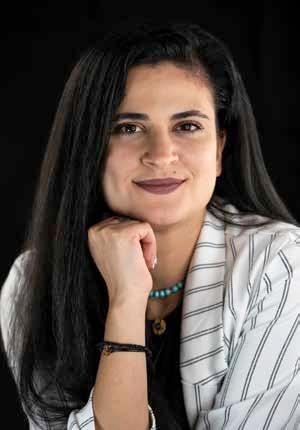
Advertising is loud. Bold headlines, big ideas and even bigger personalities. Yet behind the curtain, where ideas are born, a quieter story unfolds – hesitation, second-guessing and brilliant minds whispering instead of shouting.
Imposter syndrome isn’t just a buzzword tossed around in HR workshops; it’s a lived experience for many creatives – especially in advertising, where originality is currency, and pressure is constant. And here’s the kicker: we work in communications but often fail to create spaces where people feel safe to communicate.
The irony practically writes itself. I’ll admit – I’ve been part of the problem. I’ve told my team, “Speak up, tell me what you think,” and meant it. But I didn’t always give the space for it. Passion can be loud, and mine often drowned out the quieter voices I genuinely wanted to hear.
WHERE IDEAS GO TO DIE QUIETLY
Let’s talk about the brainstorm room –supposedly a playground for ideas, but often more like a gladiator arena.
You walk in with a spark and leave wondering if silence would’ve been smarter. The loud dominate, the rest rehearse lines they never deliver.
Intimidation isn’t always loud. It’s in the subtle eye rolls, the dismissive nods and the way some ideas are celebrated while others are met with silence.
It’s the unspoken hierarchy of who’s allowed to speak and who’s expected to just nod along.
I’ve seen it. I’ve felt it. And I’ve unintentionally contributed to it. Sometimes, without meaning to, we create environments where only the boldest survive. But creativity isn’t always loud. Sometimes it’s quiet, thoughtful and needs space to breathe.
IDEAS PLAYING HIDE & SEEK
Liquid Havas’ Stephanie Stephan calls for leaders to listen and create spaces where voices – loud and mild – can be heard, while encouraging others to speak up, take the mic and rewrite the room.
THE LOUDEST IDEA ISN’T ALWAYS THE BEST
Advertising leadership often comes with a megaphone. The creative director walks in, drops a ‘vision’, and suddenly the room is orbiting around it.
I get it – there’s passion and a deep desire to see your idea come to life. But sometimes, that passion steamrolls the very people you hired for their creativity.
I’ve been guilty of this too. I’ve asked for ideas, then talked over them. I’ve said: “This is a safe space,” while unknowingly making it feel anything but. It’s not about having the best idea; it’s about making space for others. Because brilliance doesn’t always come with a booming voice. It comes from the quiet one in the corner, still thinking, still processing. And if we don’t make space for that, we risk missing out on the kind of ideas that change everything.
LOST IN TRANSLATION – AND ACCENT
In the GCC, humility is prized. Don’t brag. Don’t interrupt. Don’t make it about you. Lovely values – until they collide with advertising’s loud, fast pace. For those raised to listen more than speak, ‘selling yourself’ can feel awkward.
Add to that the layers of language, hierarchy, and identity. English might not be their first language, but the ideas are just as sharp. Yet, in a room full of fast talkers and native speakers, hesitation can be mistaken for lack of insight.
I’ve been there. In my early years, I sat in meetings where I didn’t understand half the English accents flying around. I laughed along, hoping it wasn’t a joke about me.
SURE, A 90 PER CENT WOMEN TEAM, BUT STILL NOT LOUD ENOUGH?
It’s ironic – we’re a 90 per cent women team, yet imposter syndrome still finds a way in. Even in female-majority teams, the
conditioning runs deep. We second-guess, soften opinions, and sometimes wait for permission – even when leading the meeting.
I’ve seen brilliant women hold back just to avoid sounding ‘too confident’ or ‘too aggressive’. And while gender bias is real, not every moment needs a feminist monologue. I once sat in a meeting where two male leaders casually suggested a female voiceover for a cooking and cleaning product. One of them later felt the need to apologise. I wasn’t touched. I’m not easily stereotyped, and women don’t need to constantly defend our gender. Just be great and be confident. That’s the real power move.
The paradox is real: we’re surrounded by talent, yet still battling the internal voice that says, ‘Are you sure you belong here?’ And until we start challenging that voice – individually and collectively – we’ll keep missing out on the full power of our creative potential.
SPEAK UP, TAKE THE MIC, REWRITE THE ROOM
Imposter syndrome thrives in silence. It thrives in rooms where ideas are filtered through fear; where leadership forgets to listen; and where culture quietly nudges people to shrink. But here’s the thing –advertising needs every kind of voice.
The loud, the quiet, the quirky and the contemplative. Especially in a region as rich and diverse as the GCC, creativity can’t afford to be one-note. So, yes, speak up, be heard. But leaders: listen up. Make space. Real space. Not the kind where you say, “Any thoughts?” while halfway through your own.
And to anyone still rehearsing their line in their head: take the mic. You belong in the room. You’re not an imposter – you’re part of the story. And it’s about time you helped write it.
By Stephanie Stephan, Executive Creative Director, Liquid Havas
In agencies across the region, one question continues to surface:
“How can we help women be more confident?”
This is a well-meaning question, but it implies the issue lies within women themselves; that we’re not visible enough, bold enough or assertive enough. But what if we reframed the narrative?
For years, we’ve been told that women need to speak up more, lean in harder and be bolder. But what if the real problem isn’t a lack of confidence, but the environments we’re expected to navigate? Women don’t lack ambition or talent; we’re working within systems that weren’t built for us.
Women in advertising in the Middle East are not short on ambition, skill or
“Agency culture can unintentionally reinforce outdated norms that make it harder for women to rise or lead authentically.”

vision. But the environments we operate in often don’t amplify these strengths.
From how meetings are run, to who’s allowed to fail and try again, to who gets credit for ideas, to the informal networks where influence is built, agency culture can unintentionally reinforce outdated norms that make it harder for women to rise or lead authentically.
When we keep focusing on coaching women to ‘speak up’, we miss a bigger opportunity: rethinking the structures, behaviours and biases that shape how talent excels.
This isn’t about gender politics, it’s about creative performance … and architecture.
In the business of ideas, diversity is not a nice-to-have, it’s a competitive advantage. The best campaigns come from teams who think differently, challenge each other and bring varied perspectives to the table. That can only happen in environments where everyone feels they have permission to contribute fully.
Creative excellence is not just about craft; it’s supercharged by culture. And the most progressive agencies are realising that building inclusive, high-performance environments isn’t a moral imperative –it’s a competitive business strategy.
WE DON’T NEED TO SPEAK LOUDER. WE NEED BETTER ROOMS.
Create. Group’s Jennifer Stephenson on redesigning the systems that define how we work, grow and lead rather than asking women to change or fit in.
Just look at the creative leadership reshaping our global industry:
Chaka Sobhani, Global CCO at Leo Burnett, has built Cannes Grands Prix-winning campaigns rooted in emotional insight and cultural relevance.
Swati Bhattacharya, one of India’s most influential creative leaders, uses storytelling to drive both social impact and global recognition.
Susan Credle, Global CCO at FCB, continues to lead breakthrough work that blends strategic clarity with bold creative vision.
These women aren’t just leaders in their field, they’re proof that when inclusive leadership is at the helm, the work is stronger, more resonant and wins big. Beyond advertising, leaders such as the former Senior Vice President of Apple Angela Ahrendts, and Mina Al-Oraibi, Editor-in-Chief at The National, remind us that when women are trusted to lead at the highest level, brand, business and culture all move forward together.
If we want to build truly modern agencies, which reflect the diversity of our region and the ambition of our industry, we need to evolve how we define leadership, measure impact and create opportunity. That means:
Rethinking how meetings and reviews are run so contribution isn’t based on who dominates the room.
Building real sponsorship – not just mentorship – and ensuring emerging talent is advocated for, not just advised. Redesigning career pathways to reflect long-term value, especially for parents and caregivers.
Fostering a culture with true allies –from junior creatives to ECDs, from strategists to studio leads – who think inclusively.
Normalising different styles of leadership – some of the most visionary creative thinkers aren’t loud or linear.
Culture is shaped in these moments. And they accumulate.
A regional opportunity
The Middle East has always been a region of transformation – creatively, commercially and socially. As our industry matures, we have a chance to lead differently. To build creative companies that don’t just include women, but also actively support and elevate them.
This isn’t about blame – it’s about architecture. We need to stop telling women to change or fit in and continue to work on redesigning the systems that define how we work, grow and lead. Because if we’re serious about unlocking the full creative potential of this region, we must build cultures where confidence is an outcome, not a prerequisite. That’s how game-changing work happens.
By Jennifer Stephenson, Associate Director of Culture, Create. Group
Iguess I’ll be forever known as that woman who keeps talking about diversity, equity and inclusion (DEI), and I’m okay with that. Because, let’s be honest, how many more articles can we read about the plight of women in advertising? Or attend another panel discussion about DEI with no real action points?
We’ve all seen the headlines, read the articles and sat in those workshops. We’ve heard the same stories. To a lot of our colleagues, the conversation is getting really tiring. I’ve been in this industry for more than two decades – it doesn’t show, I know! – and while I’m proud to have been a vocal and proud advocate of this topic, I’m also ready to move past the talk and step into real change.
When I first started, DEI was often just a checkbox for companies – a ‘nice to have’. At the time, what DEI meant to me was getting more women in leadership positions and to level the playing field because of the sheer lack of female leaders. It also meant more womenfocused trainings and women-only business support groups, among other such initiatives. That’s what felt right at the time because we wanted to fight for our space.
But DEI hasn’t gained enough true traction; the industry is still stuck in the perception that DEI is a women-only issue, alienating male counterparts.
What we realise now is that isolated programmes are often counterproductive. DEI initiatives need to be more integrated and inclusive for everyone. They should be about creating an environment where merit and talent are the only things that matter.
Beyond the buzzwords: The real meaning of DEI
DEI has unfortunately become a corporate buzzword, often a marketing stunt for companies to look good on the surface while making little to no genuine internal change. Many companies embrace DEI as a superficial attempt to enhance their brand without true internal transformation.
Recently, a colleague of mine questioned the meaning and importance of DEI. The
answer, to me, was clear: DEI adds a richer mix of opinions, a broader range of skill sets, and a multitude of perspectives that lead to greater unity and innovation.
Research from McKinsey & Company, for instance, has consistently shown that companies in the top quartile for racial and ethnic diversity are more likely to have financial returns above their respective national industry medians. The real change starts when everyone –from the top down and the bottom up – is
“Let’s stop talking about ‘women in advertising’ and start talking about creating a new advertising industry for everyone.”
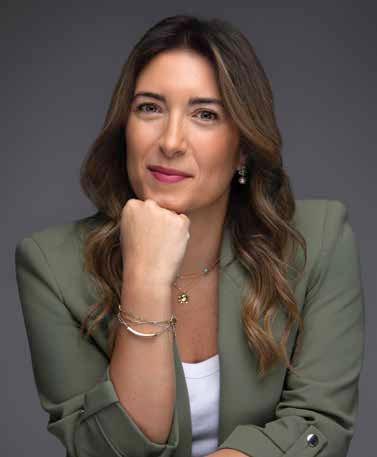
held accountable. It’s about cultivating a culture where diversity of opinion and perspective is genuinely valued. A diverse team brings a wider range of skills and viewpoints, leading to better solutions and a more unified workplace.
We need to create a system where flexibility is the norm, not a special favour. We need to stop seeing parenthood, and motherhood in particular, as a career impediment. This means equal pay, fair bonuses and policies that genuinely support parents of all genders.
The conversation around paternity leave is often met with resistance – but why?
Paternity leave isn’t a perk; it’s a necessity that allows fathers to be active partners in raising their children. This, in turn, helps to create a more equitable home life, which allows women to thrive in their careers without being forced to choose.
A collective effort
We can’t do this alone. It’s not just on women to change the system; it’s on all of us, together. We need to challenge the social norms that we perpetuate in our work.
When companies embrace DEI at every level – in leadership, policies and culture – it naturally reflects in the work we produce, from campaigns to communications. I recently hosted a panel where we discussed how internal inclusivity can shape the stories we tell externally. For example, challenging long-standing norms such as detergent ads only featuring mothers can lead to campaigns that genuinely represent all families.
Let’s change the conversation. Let’s stop talking about ‘women in advertising’ and start talking about creating a new advertising industry for everyone – an industry where talent is paramount, where family life is supported for all, and where we don’t have to have these conversations anymore because fairness and equity are simply the standard. My ultimate hope is that one day, DEI will be so ingrained in our industry’s fabric that we won’t even need to discuss it – it will simply be the norm.
By Layal Takieddine, Head of Marketing, MBC Media Solutions (MMS)
ARE WE JUST USING DEI TO LOOK GOOD?
INCLUSION DRIVES ECONOMIC GROWTH, NOT JUST GOODWILL
MCN Egypt’s Sahar Zoghby talks about taking DEI beyond tokenism, favouritism and overcorrection.
Diversity, equity and inclusion (DEI) – once seen as moral imperatives or buzzwords for company culture slides, have now emerged as critical growth strategies in today’s business environment. Especially in the MENAT region, where demographics, digitalisation and economic reform are reshaping consumer and workplace expectations, DEI isn’t just the right thing to do, it’s the smart thing to do.
At a time when DEI is being challenged globally, from budget cuts to political backlash, we need to shift the conversation. It’s no longer about meeting quotas or ticking boxes; it’s about unlocking innovation, attracting talent and building businesses that reflect the markets they serve.
DEI isn’t charity. It’s strategy. It’s a growth engine. It’s survival.
REFRAMING DEI AS AN ECONOMIC STRATEGY
It’s time we change how we talk about DEI in the boardroom. For too long, inclusion has been seen as a ‘people topic’, good for morale, positive for reputation, but somehow separate from business strategy.
That’s where we’ve missed the mark. Because the reality is: inclusion drives performance. It’s a growth strategy hiding in plain sight.
According to a McKinsey study, narrowing the gender gap could add $12 trillion to global GDP by 2025, underlining the high cost of economic exclusion.
such as construction, banking and heavy industry, gender inclusion still faces cultural or structural barriers. But that’s not due to lack of competence. It’s often about legacy norms and pipeline issues. Change takes time, but it’s happening. One of the most powerful signals of this shift is the increase in female ministerial representation in the MENA region, a reflection of how public policy can lead by example.
The Middle East, especially the GCC, is leveraging diversity and inclusion to fuel economic diversification and robust growth. For example, foreign nationals now represent 90 per cent of the UAE, supporting skills transfer, innovation, and labour force expansion.
But let’s not forget the flipside. Exclusion comes at a cost, whether it’s the unpaid labour of women, inaccessible workplaces, or a lack of representation in leadership. Research shows that inclusive teams are 35 per cent more likely to outperform, because they bring multiple lenses to the same challenge.
When companies exclude, they limit the scope of ideas, ignore vast consumer segments and fall behind in fast-moving markets.
WHAT INCLUSION LOOKS LIKE ON THE GROUND
its application varies across cultures and industries. Closer to home, Egypt has witnessed an organic but powerful shift. A decade ago, the idea of a woman leading a media agency or serving as a creative director was still met with raised eyebrows. I remember, early in my career, being quietly criticised for having a leadership team made up predominantly of women – the assumption being that such a structure was risky or imbalanced.
Today, I’m proud of having 70 per cent female representation across five business units, not because of optics, but because of performance and results. And the truth is, inclusive teams outperform because they bring different lenses to the table. That’s the point. Inclusion, when grounded in merit, doesn’t require explanation. Inclusive teams understand audiences better. They solve complex problems faster. They unlock business value that homogenous teams often miss.
CLIENTS ARE DEMANDING IT
The most progressive clients in our region no longer see inclusion as a ‘nice-to-have’; they’re demanding it. Not just for optics, but for outcomes.
They understand that audiences today are diverse, and if your team isn’t, you won’t connect, won’t convert and won’t lead. An inclusive agency isn’t just ethically aligned, it’s strategically equipped.
Companies with diverse teams are not only more innovative, but they are also significantly more profitable.
“Globally, DEI has now become a principle, a mindset and a business lever.”
significantly more profitable.
likely to outperform their industry
In fact, organisations in the top quartile for diversity are 36 per cent more likely to outperform their industry peers financially.

For too long, outdated narratives have shaped our understanding of leadership, value and success, especially when it comes to women. But today, we’re not just rewriting those stories; we’re actively dismantling them.
The reality is your team must reflect the people you serve. Clients expect agencies to be strategic partners helping connect creativity with performance while embedding diversity and inclusion authentically in their storytelling. Otherwise, your insights will fall flat, your messaging will miss, and your relevance will fade. Inclusion helps agencies understand cultural sensitivities, decode local nuance, and communicate authentically. That’s not charity. That’s strategy.
THE FUTURE OF INCLUSION
From boardrooms to government halls, every breakthrough challenges the embedded myths society has told us about who gets to lead, and why.
When you build teams that reflect the world outside your walls, in gender, experience, you’re not just doing the right thing, you’re making a smarter sharper products, create more relevant campaigns and access
and mitigate risk. It’s not theory.
When you build teams that reflect the world outside your walls, in gender, background, thinking and lived experience, you’re not just doing the right thing, you’re making a smarter business decision. You design sharper products, create more relevant campaigns and access wider, often underserved markets. You unlock innovation and mitigate risk. It’s not theory. It’s operational logic.
Of course, inclusion goes beyond gender. It’s about background, religion, age and ability. It’s about ensuring that no voice is left unheard and no idea left unexplored because of who said it. In some industries
ability. It’s about ensuring that
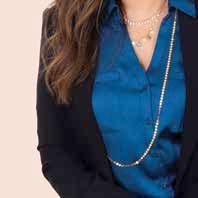

At MCN, inclusion is part of our operating workforce representing diverse nationalities and 45 per cent of leadership
At MCN, inclusion is part of our operating DNA. With more than 66 per cent of our workforce representing diverse nationalities and 45 per cent of leadership roles held by women, we’ve seen first-hand how diverse teams drive better thinking, deeper cultural insight and stronger outcomes for clients.
how diverse teams drive better thinking, deeper cultural insight and stronger outcomes for clients.
The future of inclusion is not about favouritism or overcorrection. It’s about removing systemic friction and allowing the best people, regardless of background, to rise, lead and grow. It’s about relevance, representation and resilience and ensuring we don’t leave economic value on the table by excluding people who could have helped shape it.
So no, DEI isn’t about ‘pushing women’, nor should it be tokenism or performative. It’s about recognising talent wherever it lives and creating the kind of workplaces and industries where that talent can lead.
This mindset has shaped campaigns across markets that are more relevant, resilient and rooted in real human stories. It helped us support clients with strategies that are locally grounded, globally resonant and built to deliver business growth.
This mindset has shaped campaigns across markets that are more relevant, resilient and helped us support clients locally grounded, globally resonant and built to deliver
In the communications industry, we hold a unique responsibility. We shape narratives. We influence perception. We craft the messages that define brands and, by extension, reflect societal values. If we don’t lead by example, and industries don’t embody DEI in practice and spirit, then how can we credibly advise our clients to do so?
Globally, DEI has now become a principle, a mindset and a business lever. And, like any strategy,
Globally, DEI has now become a principle, a mindset and a business lever. And, like any strategy,

We owe it to ourselves, to our clients and to our future economies to keep moving inclusion forward. Because in today’s world, growth today doesn’t come from doing more, it comes from including more – and organisations that understand this will define the next decade.
By Sahar Zoghby, CEO, MCN Egypt






SAUDI FOCUS




Hospitality with a Saudi soul








Leylaty Group’s Luigi Battista on crafting the ‘new Saudi 2030 experience’.



















rapidly, with its hospitality and culinary industry leading the way in this revolution. There is growing excitement in the air and a sense of momentum that goes beyond infrastructure and investment. At its heart, this is a cultural transformation that is spurring the Kingdom forward towards its Vision 2030 goals.
The hospitality sector has emerged as one of the most dynamic and telling expressions of this change across the country. It is not only about welcoming the world, but about showing them who we are, on our own terms.
The essence of hospitality is deep-rooted in the Kingdom’s heritage and embedded in its local identity. This critical juncture and moment in time demands more than a mere adoption of international standards but, rather, requires marketers to shine the spotlight on Saudi Arabia at a global level.
For too long, luxury in the region has been defined by what we could bring in from abroad, but true luxury does not have to be imported. It is rooted right here – in our culture, our stories, our rituals and, most of all, our people.
This approach has a deeper significance, because hospitality is not only a business; it is one of the most powerful forms of cultural storytelling. Every time a business opens its doors, serves a dish or greets a guest, it is offering a glimpse into Saudi Arabia’s identity and welcoming people into the Kingdom’s culture. The intention of these actions contributes significantly to how Saudi Arabia is perceived by the world and,
perhaps more importantly, how it is experienced at home.
The rise of tourism is one of the clearest indicators of how fast things are moving. As more people visit and explore the Kingdom, the industry has a unique chance to shape their understanding of Saudi Arabia. But we also have a chance to shift internal perspectives to help Saudis see the value of their own culture through fresh eyes. Of course, none of this works without discipline behind the scenes. From logistics to training, every detail shapes the guest experience.

‘‘There is a fine line between showcasing heritage and turning it into a show, especially while trying to reach global audiences.”
Culture is not something that can be placed on top of a concept. It is the foundation on which numerous industry heavyweights stand. Subsequently, there is a fine line between showcasing heritage and turning it into a show, especially while trying to reach global audiences. The importance of respecting culture and heritage, and giving these aspects the dignity they deserve is what we must do – consistently.
What really ties it all together is authenticity. That word is often overused but, for those who have been walking the talk in Saudi hospitality, it has a very specific meaning. We do not put on a performance about Saudi culture; we live it. This is reflected in our design, food, service, decoration and the very substance of our brands.
Looking ahead, we know that the Kingdom’s ambitions are bold – both at home and abroad. As the industry grows, the commitment remains clear: to continue to launch original concepts, nurture homegrown talent and share stories with integrity.
The world is truly looking at the Kingdom with fresh eyes, and we hope they see something honest, and something deeply Saudi. That’s the experience-led understanding that the Kingdom wants to create, and we’re just getting started.
By Luigi Ba ista, CEO of Kuuru and General Manager of Leylaty Group










In an increasingly fast-paced world, the scale of development needs to keep pace with rapidly evolving technologies to realise the creative goals of the region.



The nurturing of internal studios will be key to the Middle East’s vision of expansion and creation, especially given that the primary impediment to the effective execution of an idea, often, is the time wasted in the movement of creative work from one organisation to another.
This creates logistical bottlenecks, and when multiple companies are used in the creation of a massive project, several issues such as translation, time taken to explain concepts, tools, and cultural parameters slow development. This is a serious issue in a multifaceted project involving many skills.
Until recently, major institutions in the Middle East overseeing mega or giga-projects primarily employed external partners as experts. This was prevalent, especially in the early years of development, because expertise was lacking, and our reliance on outside companies was the only way to conduct large-scale projects.
In recent years, many industries have developed a strategic reserve of talent. This innovation has come about because of the scale of infrastructure projects in the Middle East region. Institutions have on their payroll creative ecosystems and studios that are technically talented and have the cultural awareness to create projects sensitive to regional traditions.
This is a major change; we are no longer passive observers of technological change; we’re active participants in its development. In short, if you want your story to resonate with purpose, precision and pride, it needs to be crafted from within.
RISE OF IN-HOUSE STUDIOS
We already have the building blocks to develop in-house creative studios in support departments that complement external companies. This advanced cohort can easily be transformed into creative studios that handle brand development, strategic content, digital campaigns and indigenous production pipelines.
Already, internal creative studios within the IT industry and giga-project structures are getting noticed. They are no longer mere ‘marketing tools’; they’re creative command centres. This is not just a tactical change; it is deeply strategic.















SPEED, RELEVANCE AND OWNERSHIP
In-house studios are accessible and sensitive. They sit among change-makers and leaders, understand shifting priorities, and make their projects culturally relevant. They turn concept into reality in real time.
This results in fewer bottlenecks, deeper alignment with leadership and more authentic storytelling rooted in culture. The result is a better protection of brand integrity, because they’re responding in real time to the document, and, thus, living the story.
While globalisation is a popular talking point, the area of most relevance to giga-projects is the Middle East and Africa (MEA) region, where studios have quietly developed talents and abilities, providing critical context for development. Strong insider knowledge provides ease of completion in gigaprojects, brand development and creation of campaigns.
Speed is maximised by cultural knowledge, lived experience and a sense of being invested in the project at a personal level.
IN-HOUSE IS NOT A COST: IT’S A MULTIPLIER
Building in-house studios within the IT industry is smart. It consolidates creative costs, without the need for retainers or per-deliverable fees, increases institutional knowledge, scalable design systems and reusable assets with real-time campaign support across departments.
Crucially, internal creatives develop emotional investment. They don’t just deliver assets; they defend the vision.
EXTERNAL AGENCIES STILL MATTER
External agencies are still needed in the creative process, but we need to rebalance roles. External agencies provide a vital role in launching global brand identity systems, offering niche expertise such as computer-generated imagery (CGI), immersive technology, or augmented reality and virtual reality (AR and VR) capabilities, providing additional capacity for major events, and injecting fresh perspectives that challenge internal echo chambers of studios.
However, the best creative outputs come when in-house studios lead, and external partners support the narrative.
To be clear, this isn’t about eliminating agencies; it’s about making in-house teams the centre of gravity.
CREATIVE ECOSYSTEMS, NOT SILOS
The future of Middle east projects lies in nurturing ecosystems where internal and external talents work in harmony.
This requires the development of local talent, empowering internal teams to lead creative strategies and build






Own the story, don’t rent it
The Royal Commission for Riyadh City’s Waqas Mohammed Amin explains why building in-house creative teams ensures speed, cultural authenticity and strategic alignment.
studio-grade infrastructure within their institutions.
There needs to be open collaboration with trusted external partners. This approach eliminates duplication, sharpens alignment, and elevates storytelling at every touchpoint.
IN-HOUSE IS A DEMONSTRATION OF A CREATIVE MATURITY CURVE
The question isn’t if it’s right to create in-house studios, it’s can you afford not to do it?
As the Middle East builds toward the future, its creative engines must be as visionary, agile and homegrown as the projects they support.
In short, our most powerful cultural stories of transformation deserve to be told from the inside out.
‘‘If you want your story to resonate with purpose, precision and pride, it needs to be crafted from within.”
SAUDI FOCUS
By Waqas Mohammed Amin, Creative and Production Services Director, The Royal Commission for Riyadh City
MENTORSHIP: THE DEI TOOL
Leaders talk to Campaign Middle East about how mentorship is key to bridging the gap between intention and effectiveness, and why it’s essential for DEI to become meaningful.
By Hiba Faisal
Through Campaign Middle East’s extensive International Women’s Day coverage earlier this year, leaders across the industry voiced the need to go beyond the typical diversity, equity and inclusion (DEI) conversations to focus on real, lasting change. DEI is often loud, well-meant, yet vague. So, how do we move past the noise? What real, tangible changes can we implement that open doors and walk the talk beyond mere tokenism?
In conversation with women in leadership positions, the phrase ‘take a seat at the table’ comes up frequently. However, these leaders also share the feeling that these ‘tables’ are often nondescript, hidden underground, locked behind a door with a secret password and, quite often, much like Schrödinger’s cat, may or may not be missing altogether. Clearly, diversity means more than access to an opinion. It also means ensuring that these voices are heard and that they contribute to constructive action. For diversity to be meaningful and truly make an impact, leaders, brands

and the wider marketing industry must bridge the gap between intention and effectiveness – and mentorship is key to this shift.
To explore this notion further, we asked industry leaders: How can mentorship be embedded into DEI strategies to support underrepresented talent? How can organisations make mentorship a core part of workplace culture? And what role does mentorship play in creating new pathways for women leaders?
CHAMPIONING STRUCTURED CHANGE
While it’s true that the time has come to move diversity, equity and inclusion beyond an annual key performance indicator (KPI) or a hiring target, without robust, in-built organisational infrastructures to solidify conversations, it often feels like the industry is throwing stones around within glass houses – mistaking fragile systems for progressive ones.
Real and lasting DEI demands a more grounded and structured approach. And structure begins with mentorship.
Jaimesha Patel, Chief Executive Office of growth and digital marketing agency créo Global, says, “Championing change in the region’s creative industries is possible only by moving beyond policy. For me, mentorship is at the core of an effective DEI strategy. When done right, it has the power to dismantle barriers and amplify voices that have long been overlooked.”
However, this isn’t about hand-holding or one-off coffee chats. It’s about strong and stable support structures, without which even the most successful women can find themselves – and their expertise – sidelined.
“I didn’t get here alone, and I make sure no one else needs to do so either. As a woman in the C-suite, I see mentorship not as a favour, but as a duty to pull others up with me. I know what it feels like to walk into a room where you’re the only woman, to speak up even when your voice shakes. That’s why I lead by example, because visibility matters, confidence multiplies, and doors open wider when we push together,” says Ghada El-Kari, Chief Strategy Officer, W Group Holding, which includes brands such as media company Hypermedia, digital advertising
technology company DXTA and digital-outof-home tech company AiOO.
Charney Magri, Co-founder of the sustainability-focused do epic good platform, adds, “Mentorship creates more than opportunity, it empowers us to lead with clarity and purpose, while encouraging our counterparts to champion and respect equity, rather than meet it with resistance.”
FROM RISING NUMBERS AND REPRESENTATION TO LEGACY
Diversity means more than representation at the top. It’s the ‘missing link’ between pretty diversity human resource (HR) metrics and unlocking powerful decision-making capabilities.
And yet, while addressing the need for mentorship, there’s also a need to set guardrails that ensure that this conversation – like many other DEI topics – doesn’t get tokenised or relegated to ‘rising numbers’ and ‘representation’.
“Mentorship isn’t an add-on, it should be part of our culture. It’s how we’re rewriting the playbook, creating spaces not just for women to rise, but to lead, shape and thrive. That’s the legacy I want to leave,” says W Holding Group’s El-Kari.
Sherry Mansour, Managing Director for the Middle East, North Africa and Turkey at contextual advertising company Seedtag, takes this a step further. She states that for mentorship to be truly effective, the way it is actioned must be held accountable.
“Representation matters, but visibility alone is not enough.”
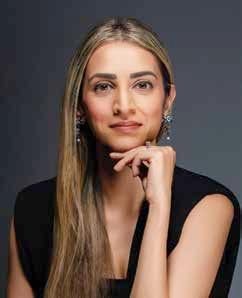
Charney Magri, Co-Founder, do epic good
Jaimesha Patel, CEO, créo Global
THAT CHANGES EVERYTHING
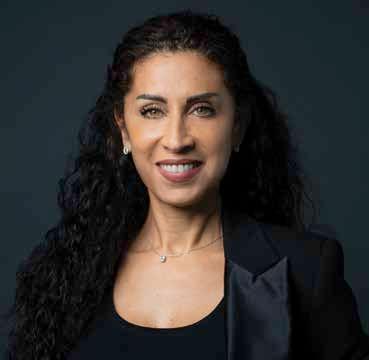
Mansour adds, “As we witness more women rising to leadership positions, mentorship becomes not just an opportunity, but a responsibility. We must actively invest in pulling others up by sharing access, knowledge, and advocacy.
She says, “Structured mentorship enables emerging female talent to navigate the unspoken codes of the industry, develop leadership confidence and gain visibility where it matters. To truly build new pathways, mentorship must move beyond informal coffee chats and be embedded in leadership KPIs, talent development programmes, and succession planning.”
Real mentorship isn’t about patting backs or ticking boxes. It requires confronting uncomfortable truths – bias, privilege and even failure.
It’s a messy, honest process that challenges both mentors and mentees to grow, unlearn and reshape the culture from the inside out –in a way that is purpose-driven.
Without this raw honesty, mentorship becomes just another surface-level gesture.
Créo Global’s Patel says, “Representation matters, but visibility alone is not enough. As more women rise to leadership, our responsibility is to reach back and extend that ladder with purpose.”
Sure, we’ve reached a stage where women are in the room, even at the table and leading companies, but without mentorship, we only have anecdotal, individual wins – not a DEI legacy.
“If we want a future where inclusion is foundational, not aspirational, then mentorship must be embedded into how we lead, how we grow, and how we reshape leadership for everyone,” says Magri. Patel adds, “Mentorship plays a critical role in shifting the culture from access to actual advancement. This means opening doors, challenging bias, and creating safe spaces
“As a woman in the C-suite, I see mentorship not as a favour, but as a duty to pull others up with me.”
Mentorship is also about breaking prejudices and going beyond personal branding – where it’s often framed as a benevolent gesture from a senior leader. It should, instead, focus on authentic relationships.
Patel adds, “We must show women that ambition and empathy can coexist, and that leadership doesn’t have to mirror old models to be effective. When done with intention, mentorship has a ripple effect, building a stronger, more inclusive future for women across the professional landscape.”
where emerging female professionals can grow with confidence and clarity. Through mentorship, we give the next generation the permission to lead boldly on their own terms.
Without intentional, strategic mentorship, those leadership seats risk becoming isolated victories rather than systemic change.
FROM SUCCESS STORIES TO SUSTAINABLE PATHWAYS
With talk of a Devil Wears Prada sequel, there’s renewed fervour to replicate Andrea Sachs, the ambitious woman who broke the mould. But the real revolution isn’t about being the woman at the top –it’s about refusing to be the ‘only one’ or the ‘last one’ at the top.
“When women support women, we build resilience, shift mindsets and model what’s possible. But true transformation happens when mentorship helps all genders to unlearn bias and rebuild culture together,” says Magri.

She adds, “Mentorship should not be tokenistic or top-down. It is about honest dialogue and a willingness to share both failures and wins. Leaders must genuinely invest time in listening, advocating and co-creating pathways to growth for emerging talent, particularly those underrepresented within our industry.”
True inclusion, therefore, means going beyond highlighting one’s path to the top; it requires creating sustainable pathways for others to follow. Mentorship is meant to be a bridge that transforms token presence into lasting influence.
In its truest sense, mentorship is a nourishing fruit from a tree, which offers a seed to be planted today and, then, goes on to offer shade and fruit for generations to come.
Patel adds,“By pairing mentorship with practical developmental opportunities such as shadowing and skill building, we can ensure that underrepresented creatives aren’t just welcomed, but truly empowered. The result is a creative sector that not only reflects the region’s diversity, but actively harnesses it for wholesome success.”
One of the strongest themes echoed by every leader is that mentorship is no longer optional – it’s essential. If DEI efforts are to move from concept to culture, mentorship should be a channel through which change becomes scalable, credible and lasting.
All in all, industry leaders highlight a strong inclination within the industry to move past surface-level efforts toward fostering genuine opportunities for professional growth.
Leaders advocate for a culture where experienced professionals actively support emerging talent through structured guidance and shared learning, ensuring everyone can contribute fully and confidently.
By prioritising intentional support networks, honest dialogue and systemic change rather than isolated and anecdotal victories, companies can cultivate a truly dynamic environment where diverse perspectives fuel collective advancement and long-term success.
Ghada El-Kari, Chief Strategy Officer, W Group Holding
Sherry Mansour, Managing Director - MENAT, Seedtag
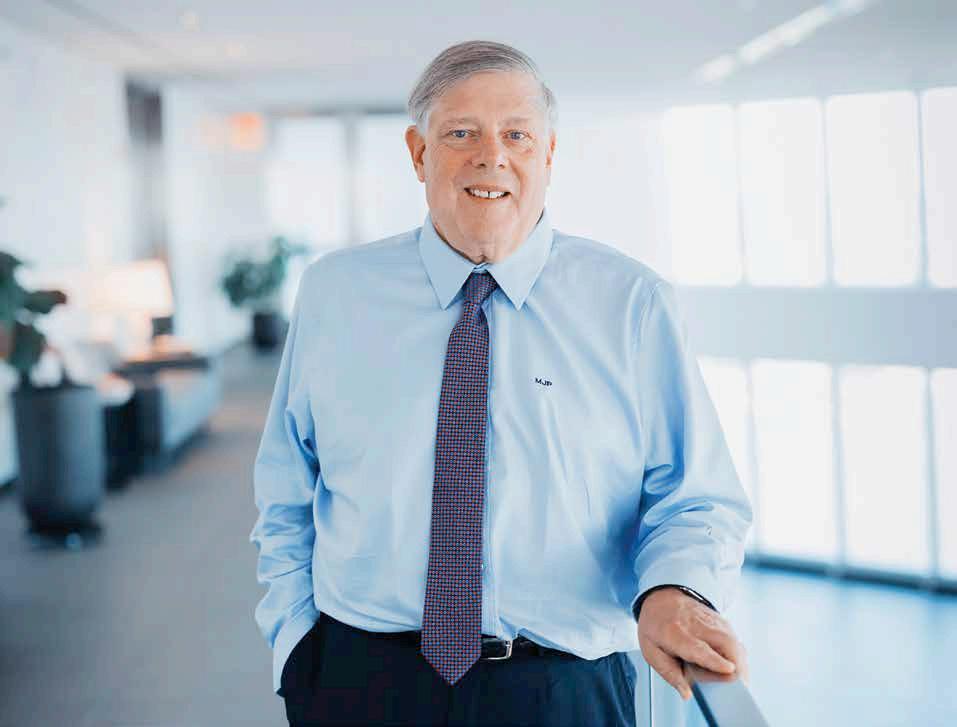
‘BULLISH ON GROWTH IN THE MIDDLE EAST’
Mark Penn, Chairman and CEO of Stagwell, speaks to Campaign Middle East about regional growth initiatives, areas of opportunity and cause for optimism, and key trends to keep an eye out for in the months to come.
By Anup Oommen
Over the past 12 months, top headlines in the global brand and marketing industry have revolved around massive mergers, C-suite churn, cut-throat competition and global accounts awarded – and lost. All of this was amidst trade and tariff tensions, geopolitical undercurrents and inflationary pressures, highlighting an inflection point in the advertising landscape.
Few holding companies and networks have held their own and sailed smoothly over the stormy seas, and fewer leaders have remained optimistic and bullish on growth.
Finding one that ticked both those boxes, Campaign Middle East sat down with Mark Penn,
Chairman and CEO of Stagwell – a NASDAQ-listed holding company with more than 13,000 employees – shortly after the company reported an 8 per cent uptick in net revenue, year on year, to $598m in the second quarter of 2025
REFLECTING ON GROWTH AND EXPANSION
Apart from the chatter around recent client wins – including Samsung, New Balance, Volkswagen and ServiceNow, which spearheaded its 104 per cent year-on-year increase in total client wins in Q2 2025 – Stagwell also made waves in the Middle East following its acquisition of Create. Group, a strategic digital communications group in the region.
This move added a feather to Stagwell’s cap of strategic acquisitions, which include pan-MENA agencies such as social and influencer marketing agency LEADERS, and government and corporate advisory agency Consulum, as well as other global names such as Business Traveller (Global), JetFuel (US), Team Epiphany (US), BERA (US), Luxine Relations Publiques (Canada), UNICEPTA (Germany), PROS (Brazil), What’s Next Partners (France) and Sidekick (UK).
When asked what sets Stagwell apart, Mark Penn, who has more than 40 years of experience in market research, advertising, public relations, polling and consulting, said, “I built Stagwell to be a challenger holding company that’s nimble, digital-first, and focused on delivering transformative work for our clients. Our competitors are getting bigger, but clients aren’t looking for another behemoth. They’re looking for top-shelf creative agencies with tech-savvy capabilities and holistic marketing services. Brands see this in Stagwell and are excited to work with us. The market is ripe for penetration, and it is a great time to be a challenger.”
Clearly, Stagwell is far from done. Through the conversation, Penn alluded to the holding companies long-term ‘5 x 5 plan’, which looks to achieve $5bn in annual revenue by the end of 2029 while increasing international revenue outside of North America.
Penn said, “We’re laser-focused on growing our offering, scaling around the globe and innovating at the frontier of AI and technology. The Middle East is a key part of our long-term plan. We have outstanding agencies in the region already and are focused on expanding our physical footprint and offering in the Middle East and North Africa (MENA) region to compete for larger global creative and media opportunities.”
Stagwell MENA’s regional footprint now includes strategic digital communications company Create. Group, government and corporate advisory agency Consulum, creative collective Forsman & Bodenfors, omnichannel media agency Assembly and influencer marketing agency LEADERS .
Penn added, “We’re investing in our leadership in the region to drive regional growth initiatives. We’re continuing to pursue public and private sector opportunities both in the Middle East and more broadly across our network as we build toward more multiyear, multimillion dollar contracts. And we’re growing our footprint – expanding our presence in the Middle East from fewer than 50 employees less than three years ago to more than 600 today.”
AN OUNCE OF OPTIMISM AND A SPRINKLE OF ‘MAGIC’
The conversation circled back to global geopolitical volatility and economic pressures – specifically at a time when several economists have voiced muted growth expectations – and how this will reflect on the upward trajectory of the Middle East brand and marketing industry.
Pouring more than an ounce of optimism into the conversation, Penn said, “I remain bullish on growth in the Middle East. MENA
is one of the fastest-growing regions in our portfolio and a key strategic region for global marketers. Marketers who are not investing in MENA, especially given its more than 200 million digitally savvy young people, will miss out on one of the biggest consumer growth stories in the world. The MENA marketing landscape is ripe for disruption. We’re taking steps to build a robust portfolio of challenger agencies who are collaborating to transform the marketing services industry in the region.”
He added, “Of course, if there’s a global economic downturn that would affect our business; it would affect every business. However, based on what we’re seeing so far, I remain optimistic about our growth and believe we are well-positioned to take advantage of changes in the industry, especially in the Middle East.”
When cross-questioned about what specific changes he’s excited about in the industry, Penn pointed to sports – a $600bn industry in the Middle East that is projected to grow by approximately 9 per cent by 2030
Penn said, “From F1 races to the FIFA World Cup, the region presents an immense opportunity for marketers – that’s why we recently launched Maydan Sports, a global sports engagement collective aimed at combining world-class marketing and immersive tech to help brands elevate their presence in the region.”
“Maydan Sports draws on the collective strength of several award-winning Stagwell agencies, including Consulum, ARound, Assembly, Code and Theory and Gold Rabbit Sports,” he added.
QUICK-FIRE WISDOM
While we still had him on the hot seat for a final few minutes, Campaign Middle East picked Penn’s brains with a quickfire round of questions:
Should advertisers get back to linear TV and traditional channels such as news?
“Misinformation and disinformation are definitely valid concerns. But the whole brand safety notion has been blown completely out of proportion to the point where marketers are not placing ads in news,” Penn said.
He suggested that marketers pay closer heed to in-depth reports such as Stagwell’s 50,000 -respondent study Future of News research, which showed that it makes no difference to the consumer whether an ad is placed next to news, sports or entertainment.
“The same study in the UK had similar findings,” Penn added. “In fact, marketers who
FUN FACTS
For six years, Mark Penn served as a White House pollster to then-US President Bill Clinton and was chief strategist of Bill Clinton’s 1996 re-election campaign.
He is widely acklowedged for developing the concept behind ‘Soccer Moms’.
Penn also served as chief strategist to Hillary Clinton throughout her Senate campaigns and 2008 presidential bid.
“MARKETERS WHO ARE NOT ADVERTISING IN THE NEWS ARE MISSING OUT ON A KEY QUARTER OF THE POPULATION WHO CHECK THE NEWS FIVE OR MORE TIMES A DAY.”
are not advertising in the news are missing out on a key quarter of the population who check the news five or more times a day – a cohort I like to call ‘news junkies’. So, I think advertisers need to take a look at their ad spend and run tests in news – not only to support quality journalism and combat misinformation and disinformation but to support their business goals and reach a really premium, engaged audience.”
What are your top take aways from Cannes Lions 2025?
“My top takeaway from Cannes this year is that people are hungry for next-level creativity. With AI everywhere, there’s a premium for human-led creativity, with creatives now having access to cutting-edge tools at record-low costs. All across the Croisette, brands talked about connection to communities and authenticity,” Penn said.
This notion echoed campaigns highlighted at Stagwell’s SPORT BEACH at Cannes Lions. This included 72andSunny’s ‘Somebody’ campaign for the NFL, which featured NFL players mentoring children in hyperlocal communities through the NFL’s partnerships with Big Brothers Big Sisters of America, Special Olympics and the InSide Out Initiative. The ad was ranked in the top three in The New York Times’ roundup.
“People are really craving those memorable ads and innovative creativity,” Penn added, citing another example – ‘Frank’s RedHot’ Super Bowl campaign featuring Paris Hilton from another of Stagwell’s creative agencies, Colle McVoy, which encouraged consumers to interact with the hot sauce brand by sharing pictures and videos of their custom-made, personalised recipes.
Concluding the fascinating conversation with the best-selling author of a pair of marketing insights books, Microtrends: The Small Forces Driving the Big Disruptions Today and Microtrends Squared: Small Forces Driving Today’s Big Disruptions, we asked:
What recent trends have stood out?
“There has been a surge of experiential and personalisation,” Penn said, “Agentic AI has now advanced to become hands-free, with brands presenting demos of their immersive AI-powered worlds and try-on wearables.”
“However, even with all the talk of AI, creative remains the foundation of consumer experiences, and experiential is an extension of that. It’s when AI pushes the bounds of creativity that the real magic happens,” he concluded.

A Communications
Founded: 2019
Headquartered: Dubai a-comms.com alexandra@a-comms.com
A Communications is a leading public relations firm specializing in delivering highimpact communications solutions across a wide array of industries.
SERVICES: Traditional public relations, digital marketing, rich media
KEY CLIENTS: Gensler Middle East, Digital Dubai Authority, Carter Hones Associates, JLL, Shunya Ekai Technologies, Plus X Electric, FEDS Drone-powered Solutions
Acorn Strategy
Founded: 2011
Headquartered: Abu Dhabi acornstrategy.com hello@acornstrategy.com
Acorn Strategy is an award-winning marketing and communications agency, specialising in smarter, integrated strategies that deliver measurable results. With a global reach and offices in Abu Dhabi, Dubai, KSA, Jakarta, Melbourne, and London, Acorn Strategy supports clients across diverse industries by blending insights, creativity, and precision.
SERVICES: Public relations, media relations, strategic communications, marketing communications strategy
AKQA
Founded: 2010
Regional offices: UAE, KSA, Egypt
SERVICES: Brand activation/events, creative communication, data and media, technology/digital solutions, content production
Founded: 2000
Headquartered: Riyadh alefinternational.com info@alefinternational.com
Alef, a Riyadh-based communications firm, partners with government and private sector clients to boost brands and reputations. Using offices in London and Dubai, we help clients grow, manage risks, and craft strong, relevant narratives in today’s dynamic environment.
SERVICES: Communication strategies, content development, digital and social media, media engagement
KEY CLIENTS: Ministry of Energy, C4IR Saudi Arabia, Saudi FDA, Sadara, State Properties General Authority
Designed by Pouyan Rahimi, Senior Art Director, MCH Global
Action Global Communications
Founded: 1971
Headquartered: Dubai, Abu Dhabi, Riyadh and Doha actionprgroup.com; euan.m@actionprgroup.com
Action Global Communications provides integrated creative communications services to help organisations in dozens of industry verticals advance their agendas in target markets. Action leverages local insights and expertise to deliver gamechanging ideas and tactical executions that shape perceptions, build awareness and protect reputations.
SERVICES: PR and communications, social media, digital marketing, creative, video production
KEY CLIENTS: beIN MEDIA GROUP, Dubai Department of Economy & Tourism, Dubai World Trade Centre, IHG Hotels & Resorts, Ooredoo
AMC DMCC
Founded: 1988
Headquartered: Dubai amcuae.com enquiry@amcuae.com
We are a results-driven PR agency that transforms brand narratives through bold ideas, creative storytelling, and data-backed strategies. We craft campaigns that engage audiences, elevate visibility, and spark lasting connections across traditional and digital platforms – delivering measurable impact.
SERVICES: Press releases, crisis communications, press conferences, media monitoring
KEY CLIENTS: ADIHEX, Deerfields Mall, Vinfast, Arabian Center, Mohammed Rasool Khoury & Sons (Rolex, Tudor, Laderach)

Founded: 2015
Offices: Dubai and Riyadh
Head of agency: Louise Jacobson Brazenmena.com
+971 4 240 8395; +966 114 220 204 mena@brazenmena.com
AllDetails Middle East
Founded: 2004
Headquartered: Dubai alldetails.net info@alldetails.net
AllDetails is an award-winning boutique PR and Communications Agency based in Dubai, helping brands convey their stories since 2004. We blend the best of traditional and digital PR and marketing to create bespoke campaigns that bring brands to life, connecting with consumers and stimulating conversation.
SERVICES: Public relations, brand partnerships, event management, social media management, influencer engagement and campaigns
KEY CLIENTS: Hawar Resort by Mantis, Vienna Tourist Board, Unique Properties, Hero Experiences Group, Dubai Golf - Hospitality & Entertainment
Bacchus Agency
Founded: 2021
Headquartered: Dubai bacchus.agency fiona@bacchus.agency
Bacchus is a leading global communications agency, with offices in London, New York, Miami, Dubai and Riyadh. With a 28 year old legacy, Bacchus is renowned for crafting transformative brand messaging and strategy across the luxury, fashion, hospitality, real estate and lifestyle industries and has a deep understanding of highnet-worth audiences.
SERVICES: Strategic communications, digital marketing, vip services, brand partnerships, event production
KEY CLIENTS: Leylaty Group, Fairmont Hotels & Resorts, W Dubai - The Palm, Our Habitas, New Murabba
For more than a decade, Brazen MENA has helped brands ‘B Ahead and B Brazen’, driving visibility, shaping reputation and creating impact. With offices in Dubai and Riyadh, they partner with clients in the UAE, KSA, Qatar, the UK and beyond. A strategic communications agency with regional soul and global standards, Brazen MENA blends cultural fluency with commercial focus, fuelled by people who care as much about the work as they do about delivering results.
SPECIALISMS: Public relations – B2C and B2B, social media, events, influencer engagement, paid for and insights
KEY CLIENTS: Marriott, Hilton, Battersea Power Station, Kleindienst Group and Godiva
AWARDS WON: PRovoke 10 Best Agencies in the Middle East 2025; PRovoke Innovator 25 – EMEA (Louise Jacobson); Homegrown Agency of the Year and Young Communicator of the Year – MEPRA





Bannerton PR
Founded: 2005 bannerton.ae Sharon@Bannerton.ae
SERVICES: Media relations, crisis communications, strategic pr campaigns, brand storytelling, public affairs
KEY CLIENTS: Monopoly Riyadh, Creative Media Authority, Anglo Arab Trading, The Skin Diary, Celligenics
Big Group
Founded: 2024 biggroup.ae hello@biggroup.ae
SERVICES: Strategic planning, brand activations, end-to-end event management, 360 marcomms delivery, tech innovation
KEY CLIENTS: Mastercard, Samsung, Google, Rolex, F1
BPG Group
Founded: 1980 bpggroup.com info@bpggroup.com
SERVICES: Integrated Marketing, Public Relations, Creative Advertising, Brand, CX
KEY CLIENTS: Wasl, KHDA, KPMG, DHL Global Forwarding, Amazon
CEO Agency
Founded: 2009 Regional offices: Dubai and Riyadh Head of company: Charlotte Oliver ceogcc.com +971 04 420 0421; + 971 4 420 0421
CEO Agency is a boutique experiential marketing and premium staffing partner, delivering immersive activations, standout live events, and world-class hospitality. With senior leadership driving every project, CEO acts as an extension of client teams, ensuring bespoke, impactful experiences that place brands at the heart of every conversation.
SPECIALISMS: Experiential marketing, creative services, premium staffing and hospitality, live events and exhibitions
KEY CLIENTS: Lunate, Mubadala, Cartier, AVENEW, Beyond
Brand Bistro Dubai
Founded: 2023 itsbrandbistro.com kim@itsbrandbistro.com
SERVICES: F&B and hospitality PR, influencer campaigns, restaurant branding, creative strategy development and implementation, events management
KEY CLIENTS: Koita, Karaz Restaurants, Cocoa et Chilli, Mondoux Dubai and Millenium Al Barsha
Cameo Communications
Founded: 2020 cameocomms.me lgeadah@cameocomms.me
SERVICES: Performance PR, events, social media
KEY CLIENTS: GE HealthCare, UAERG, Slaw, Krush Brands, Padel 700
Cheil MEA
Founded: 2006 cheil.ae hello@cheil.com
SERVICES: Integrated campaigns, brand experience, digital platforms, social media, e-commerce
KEY CLIENTS: Samsung, Volkswagen, Ahmed Seddiqi & Sons and Energizer Holdings.
Clickon Group
Founded: 2010 clickongroupmena.com tony@clickongroupmena.com
Clickon Group is a Dubai-based boutique PR agency offering PR, social media, branding, and digital marketing across the GCC.
ComCo Middle East & Africa
Founded: 2021 comcomea.com marhaba@comcomea.com
SERVICES: PR, social media, content creation, event management and production, celebrity management
KEY CLIENTS: Arabian Automobiles Company (Nissan, INFINITI, Renault), Amazonico Dubai, Peaq Wellness, Leña and Smoked Room, Geide
Comma
Founded: 2010
Headquartered: Jeddah and Riyadh commapr.com fadi@commapr.com
SERVICES: PR, media relations, event management, corporate communications, influencers management
KEY CLIENTS: SAL, Bank Aljazira, International Medical Center, Saudia Cargo, Maersk

Founded: 2006
Headquartered: Dubai, UAE
Head of the company: Ahmad Itani +971 4 334 1140; +971 56 163 3162 ciceroandbernay.com info@ciceroandbernay.com
Cicero & Bernay is a communication partner built for today’s complexity and tomorrow’s possibilities. We fuse insight, creativity and AI-powered intelligence to shape narratives that move people and markets. Grounded in evidence and driven by intent, our work is designed to scale with purpose – building trust, delivering impact and helping brands navigate change with clarity, speed and confidence.
AFFILIATE OFFICES: Afghanistan, Algeria, Bahrain, Bosnia and Herzegovina, China, Croatia, Cyprus, Egypt, India, Indonesia, Iraq, Japan, Jordan, the KSA, Kuwait, Lebanon, Libya, Macedonia, Malaysia, Montenegro, Oman, Pakistan, Palestine, Russia, Serbia, Singapore, Spain, Sudan, Syria, Thailand, Tunisia, Turkey, the USA and Yemen
SPECIALISMS: Contributor relations, thought leadership, online and corporate reputation management, content development, strategic planning and counsel, influencer marketing, ESG, and crisis communication.
AWARDS: PRCA MENA Awards – Large Consultancy of the Year 2022 (Highly Commended); International Stevie Awards; 2 Guinness World Records; PRCA Digital Awards; MENA Digital Awards; MEPRA Awards.
LEADERSHIP PANEL
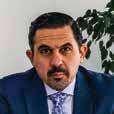
Ahmad Itani Founder & CEO
TARIQ AL SHARABI
Managing Director
HOW WOULD YOU DESCRIBE THE CURRENT STATE OF THE PR/ EVENTS AND EXPERIENTIAL INDUSTRY IN THE MENA REGION?
The PR and experiential landscape has moved further into a digital-first mindset, with campaign volumes continuing to grow. This is fuelled by demand for immersive activations and a sustained push for innovation-led experiences. Most of what’s projected to be multi milliondirham influencer marketing spend is now going to micro- and nano-influencers, which is a clear shift toward credibility and relatability over scale, driven by fatigue with repetitive voices online. Events built solely on celebrity appeal or dated, boilerplate messaging are losing traction, particularly in an era of AI-generated sameness. Campaigns without interactivity or story-led content see engagement drop by up to a third, as audiences demand originality and meaningful two-way value.
WHAT KIND OF PR BRIEFS ARE BECOMING MORE COMMON TODAY?
What we used to know as just PR doesn’t exist anymore. It’s communication, it’s marketing, it’s solving a situation, whether that’s driving sales, building visibility, or creating traction. The old model doesn’t work and shouldn’t exist moving

Al Sharabi Managing Director
INDUSTRY SNAPSHOT
forward. Growth lies in a 360° communication approach built on strategy, insight, data, and analysis, where agencies act as strategic advisors, rather than order-takers.
While full AI adoption isn’t here yet, generative video has accelerated ahead dramatically as a likely game-changer for agencies, creators and the public, alongside data-driven storytelling that builds platformnative narratives and targets audiences with precision in the spaces they already inhabit.
HOW ARE YOU ADAPTING TRADITIONAL PR STRATEGIES FOR A REGION THAT’S INCREASINGLY DIGITAL-FIRST AND INFLUENCER-DRIVEN?
By adapting strategies to prioritise joint authorship between agencies and digital creators, we’re making campaigns feel more natural and perform better. Ideation and execution work best when developed together. With more and more consumers now trusting influencers over traditional brand messaging, creators can’t be an afterthought. They need to be part of the strategy from the outset. On platforms like TikTok and Snapchat, where visual storytelling has become the new press release, co-creation is the standard for engaging a changing audience.
WHAT ROLE DOES EARNED MEDIA PLAY IN TODAY’S PR MIX IN THE REGION AND IS IT STILL CONSIDERED THE ‘GOLD STANDARD’?
Earned media is still something we all seek, but
it can’t be the sole focus. The days of hiring a communication agency purely to “get media coverage” are over, because on its own it won’t deliver the traction, reach or coverage brands expect, especially when even the most credible publications have paywalls, paid packages and partnership requirements.
A well-planned marketing mix that blends earned and paid is essential, with agencies providing holistic counsel so every dollar delivers maximum value. The real task is helping clients move past the idea that PR operates separately from the wider marketing framework. Strategic, integrated solutions deliver value across channels - and that’s where the real results happen - with solid agencies who provide clear rationale.

Tariq
Consulum
Founded: 2012 consulum.com contact@consulum.com
SERVICES: Communications strategy, messaging and thought leadership, global media relations, digital strategy and infrastructure, brand building and creative content
Cosmopole
Founded: 2018 cosmopole.com hello@cosmopole.com
SERVICES: Strategic communications, public relations, digital advertising, generative and search engine optimisation, social media
KEY CLIENTS: Creative Media Authority, Presidential Protocol and Strategic Narrative Authority, Cloud Spaces by Aldar, Bassam Freiha Art Foundation, Groupe Barrière
Current Global MENAT
Founded: 2023 currentglobal.com hello@currentglobal.com
SERVICES: Public relations, media engagement, influencer experience, creative campaigns, reputation management
KEY CLIENTS: Dubai Airports, New Balance, Dubai Tourism, Dubai Holding Entertainment, Al Habtoor Motors

Founded: 2009
Regional headquarters: Dubai, UAE
Head of company: Mohammed Tayem, Founder & CEO
Holding group: TGW info@entourageintl.com +966 11 419 1919; +971 4 338 8834 entourageintl.com

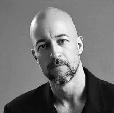
Gourmonde
Founded: 2023 legourmonde.com pearl@legourmonde.com
SERVICES: Public relations, social media, branding, consulting
KEY CLIENTS: Kokoro, Moonrise, Avatara, Kishmish, AKABEKO
EVOPS Marketing & PR
Founded: 2018 evops-pr.com hina.bakht@evops-pr.com
SERVICES: Public relations, social media marketing, digital marketing, events management, website development
KEY CLIENTS: Ajman Bank, Queen Elizabeth 2, Swiss-Belhotel International, Shaza Hotels, Chortoq, Crowne Plaza
In2 Consulting
Founded: 2010 in2consulting.com anne@in2consulting.com
SERVICES: Communication strategy development and advisory, B2B positioning and messaging, content strategy and development, thought leadership, B2B event PR
KEY CLIENTS: Future Hospitality Summit, Aleph Hospitality, The Trade Desk, Kerten Hospitality, IDeaS
Entourage is a regional powerhouse in creative, events and brand marketing, deeply rooted in Middle Eastern culture and driven by the belief in the power of humanto-human connection. At the heart of everything we do is storytelling, designed to build emotional resonance and forge lasting relationships between brands and their audiences. Our campaigns are anchored in data, insight and performance, ensuring both creative impact and measurable results. We are relentless in our pursuit of innovation, always adapting, always scaling, and always pushing the boundaries of what’s possible.
SPECIALISMS: Creative and advertising, event management, PR and social media, content creation and strategy development
KEY CLIENTS: Aramco, Ministry of Sport - Saudi, Ministry of Transport & LogisticsKSA, Royal Commission of AlUla, Discovery Networks, Sharjah Commerce & Tourism Development Authority (SCTDA)
AWARDS WON: Eventex Awards 2024 and 2025; Creative Communication Awards; EFFIE Awards MENA in 2012, 2013 and 2014; Dubai Lynx 2011 & 2014; MEPRA awards 2014; Middle East Event Awards 2012, 2013 & 2014; Guinness Book of World Records




LEADERSHIP PANEL
Ali Hamade Head of Events & Technology
Nehal Shaikh Head of Planning
Jean Marc Chandoo Executive Artistic Producer
Jessica Saleh Head of Human Resources
Albert Lotter Senior Creative Director
Ziad Faour Head of Strategy





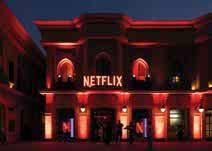
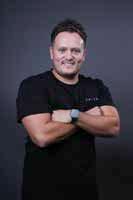

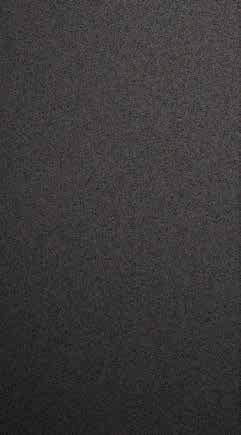



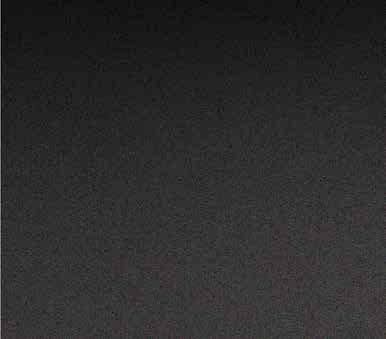
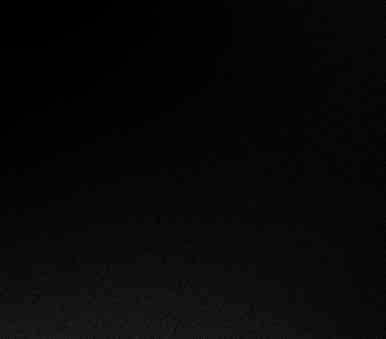
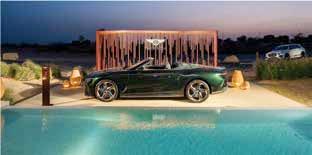
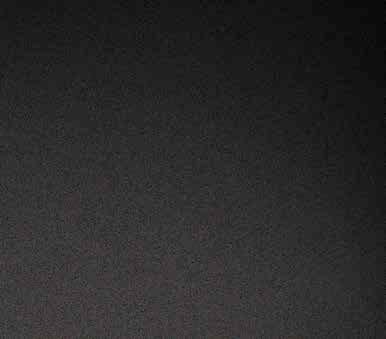
Jack Morton MENAT
Founded: 2011 Headquartered: Dubai experience@jackmorton.com
SERVICES: Experiential exhibitions and visitor experience centres, cultural consultancy and programming, sponsorship and brand activation, experiential strategy and strategic design, conferences and forums
JWI
Founded: 2015 jwi-global.com hello@jwi-global.com
SERVICES: Marketing strategy and consultancy, creative advertising, integrated campaigns, experiential and events, content and social media
KEY CLIENTS: Gillette, Venus, Braun, Grey Goose, Patron Tequila, Bombay Sapphire, Sephora, Epson, Philips, Marsh
Kaizzen Communications
Founded: 2008 kaizzencomm.ae dipankar.zalpuri@kaizzencomm.com
SERVICES: Public relations, corporate communications, digital marketing, events and production, influencer marketing
KEY CLIENTS: Pepsi Arabia, Sommet Education, Rosneft Oil Company, Les Roches, Satguru Travels
FLC Marketing Group
Founded: 2009 Offices: UAE & KSA Heads of company: Adriana Usvat & Ganesh Iyer flc-me.com +971 4 454 8684 talk2us@flc-me.com
FLC is an integrated shopper and experiential marketing agency specialising in consumer marketing, brand activations and events. From retail to roadshows, corporate events to exhibitions, we design campaigns that connect emotionally and deliver commercially – turning strategy into action and experiences into measurable growth across the GCC and beyond.
SPECIALISMS: Shopper marketing strategy and execution, brand activations and product launches, corporate and B2B events, integrated consumer and influencer programmes, exhibition stands and conferences
KEY CLIENTS: Nestle, Henkel, Philip Morris, PepsiCo, Huawei
AWARDS WON: Silver Award for Best Stand Design at WOW Middle East; Gold Award for Best Viral Campaign at MENA Digital Awards; Top 10 Experiential agencies in the Middle East by Asia Business Outlook; Great Place to Work in the Middle East; MEA Business Award
Katch International
Founded: 2011 Headquartered: Dubai katchinternational.com info@katchthis.com
Katch International is an independent Dubai-based PR, events, and experiential agency with further offices in Riyadh and London. Known for creative, results-driven campaigns across hospitality, F&B, real estate, live entertainment, and more, they combine regional insight with a hands-on, people-first 360-degree approach to storytelling.
SERVICES: Public relation management, marketing consultancy, branding, creative design, social media management
KEY CLIENTS: Address Hotels, Al Habtoor, Alaya, Almal Real Estate, Alta Real Estate
Keel Comms
Founded: 2022
Headquartered: Dubai keelcomms.com support@keelcomms.com
SERVICES: Purpose-driven communications, PR & Comms, reputation management, social responsibility campaigns, ethical storytelling.
KEY CLIENTS: Canon Middle East & Turkey, Al Masaood, DarGlobal, Amwaj International, SIG Group
Kekst CNC
Founded: 2006 (Dubai office)
Headquartered: Munich and New York; regional offices in Dubai, Abu Dhabi, Riyadh kekstcnc.com Dubai@kekstcnc.com
SERVICES: Corporate communications, financial communications, crisis and issues management, internal communications, digital communications, analytics and social media
The Loop
Founded: 2018 the-loop.me naheed@the-loop.me
SERVICES: Marketing strategy, communications, public relations, brand advisory, copywriting
KEY CLIENTS: Canadian University Dubai, RIT Dubai, UniHawk, British Chamber of Commerce Dubai, The Dreamwork Collective
M&M Agency
Founded: 2016
Headquartered: Tunis linktr.ee/mandmagency msiala@mmevent.agency
SERVICES: Influencing strategy, digital content creation, experience design, event organiser and public relations.
KEY CLIENTS: Inditex Group, Cimpress Vista Print, Inglot, Ooredoo, Mindshare, Fujifilm, Pluxee
Founded: 2019
Regional headquarters: Dubai, UAE
Head of agency: Jamal Al Mawed, Founder and CEO gambit.ae +971 4 578 6446 info@gambit.ae
Divisions: Gambit Pulse, Gambit Sage, Gambit Atelier, Gambit FWD
Gambit Communications is the most-awarded and fastest-growing independent agency in the Middle East over the past five years, bringing together the brightest young talents in the region to work on multinational brands. The word Gambit comes from chess, the ultimate game of planning and strategy, and represents the team’s ability to gain early advantages and start conversations.
SPECIALISMS: Full service PR and influencer marketing
KEY CLIENTS: Samsung, BMW, Uber, MAF Shopping Malls, Essilor Luxottica
AWARDS WON: 96 trophy wins and 256 shortlisted campaigns in the past five years including the region’s first ever Gold in the PR Young Lions at Cannes. Current holders of all five agency of the year titles within our category: PRCA Medium Agency of the Year, MEPRA Medium Agency of the Year, MEPRA Homegrown Agency of the Year, Campaign Middle East PR Agency of the Year and Independent PR Agency of the Year.
Our team members have also dominated the industry awards for individuals, winning the Cannes PR Young Lions 2023 (Global), MENA Young Lions 2023 & 2024, PRCA’s Rising Star of the Year 2022, 2023 & 2024, Campaign Middle East Account Person of the Year 2022 and 2023, MEPRA Highly Commended Young Communicator of the Year 2024 and PRCA Highly Commended Digital Professional of the Year 2022.
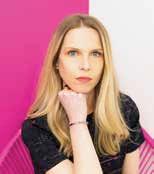
Kathleen Burbridge, Senior Account Director, Co-Leader of Atelier team. Brings over 12 years of experience in roles at international communications agencies in Toronto, Chicago and Dubai. She specializes in lifestyle, luxury, automotive and hospitality communications.
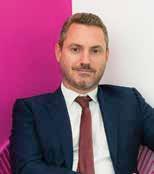
Tony Sidgwick, Account Director, CoLeader of FWD team. Corporate comms specialist with over 15 years’ experience in the region on both client and media side, including senior editorial roles at multiple GCC lifestyle publications.
TEAM LEADERS

Sarah Alsalem, Associate Account Director, Leader of Pulse team. The region’s first ever gold winner in the prestigious Cannes PR Young Lions 2023, a MENA Young Lions 2023 gold medal winner, and was named PRCA Rising Star of the Year 2024 and Campaign Middle East Account Person of the Year 2023.
LEADERSHIP PANEL
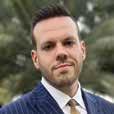
Jamal Al Mawed, Founder and CEO of Gambit Communications, is a multiple award-winning Palestinian/ British/Emirati hybrid with a celebrated agency background and previous senior director roles on the clientside at Rolls-Royce Motor Cars and the Dubai Properties Group. He is the youngest ever winner of the MEPRA Chairman’s Award for career accomplishments and has been selected in Provoke Media’s EMEA ‘Innovator 25’, The Huffington Post’s ‘Ten to Watch’ series, and the PR Week Power Book for five consecutive years. He has led Gambit Communications to 13 Agency of the Year titles in the six years since its inception.

Dalia Baddar, Associate Account Director, Co-Leader of FWD team. Multiple-award winner at MEPRA and PRCA, picking up golds for campaigns on brands such as Ferrari, Acer, Polestar and Abarth.

Alexandra Richards, Associate Account Director, Co-Leader of Atelier team. Luxury, lifestyle and culture PR expert. MENA Young Lions 2024 gold medal winner and MEPRA Highly Commended Young Communicator of the Year 2024.
House of Comms
Founded: 2012 Regional offices: Dubai, Abu Dhabi and Riyadh Founders and Managing Partners: Abby Lyons, Kaja Weller, Jamie Wilks houseofcomms.com +9714-275-4900; +966-50-514-9605 talk@houseofcomms.com
House of Comms is an award-winning, integrated marketing consultancy headquartered in the UAE with offices across the region. We are an independent agency built on hard work, humility, and a burning desire to always deliver awesome campaigns that make a difference. A fearless group of thinkers, focused on ideas, impact and integrity; we are fuelled by our imagination and are channel agnostic. Our 20-strong PR team has a proven track record of looking after and retaining regional and international clients spanning hospitality, F&B, lifestyle, FMCG, retail, travel and tourism, automotive and mobility, tech, gaming, finance, government, education, entertainment and healthcare.
SPECIALISMS: Regional-first strategy, market launches, seasonal campaigns, PR events, content creation, influencer marketing, press trips, thought leadership, internal communications, crisis communications.
KEY CLIENTS: Activision Blizzard, City Social, Dubai Festivals & Retail Establishment, ENOC, NEXT, The Beam, The Ritz-Carlton Maldives, Joby Aviation, Hisense, Volkswagen ME

Founded: 1956 (Chicago); 2004 (Dubai)
Head of agency: Stephen Worsley, Regional Managing Director Ownership: Interpublic Group (IPG), Horizon Holdings Regional offices: Dubai, Riyadh, Jeddah golin.com/emea/office/uae/ +971 4 332 3308 sworsley@golin-mena.com; info@golin-mena.com
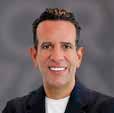
Matrix Public Relations LLC
Founded: 1999
Headquartered: Dubai matrixdubai.com/public-relations/ service@matrixdubai.com
Matrix PR is an independent communications firm based in Dubai. We marry international PR expertise with perceptive local knowledge to plan and implement strategic communication initiatives that make a difference.
SERVICES: Public relations, influencer marketing, crisis management, media training, digital marketing
KEY CLIENTS: Cloudera, Coldwell Banker, Milestone, Saxo Bank, Zurich International Life
Motivate Events
Founded: 1979
Headquartered: Dubai
Heads of company: Anthony Milne, Chief Commercial Officer; Stuart Norbury, Events Director motivatemedia.com/ services/events/ events@motivate.ae +971 4 427 3000
SPECIALISMS: Motivate Media Group has a thriving events division, with numerous high-profile events staged throughout the year. From glamorous award ceremonies, to all-day music festivals, a dedicated marketing and events team ensures that all events are a valuable extension of our clients’ brands.
Adivision of Horizon Holdings (IPG), the Middle East’s leading integrated communication and marketing group, Golin MENA is part of a global, awardwinning public relations agency that helps companies create change that ma ers. Three missions guide our work. We discover powerful human truths that bind us. We create with bravery and integrity. We collaborate obsessively and inclusively. In doing so, we make the best work of our lives, together.
KEY CLIENTS: Kaspersky, National Bonds, eToro, Turkish Airlines, SADAFCO
SPECIALISMS: Corporate, consumer and public affairs; media training; issues management; intelligence and analytics; design and multimedia.
AWARDS WON: 2025 Gold Stevie Award for ‘Innovation in Investor Relations’; 2025 Bronze Stevie Award for ‘Innovation in Media Relations’
LEADERSHIP PANEL


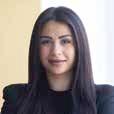
Stephen Worsley Regional Managing Director
Natasha D’Souza Senior Director
Wajd Breek Senior Account Director
Mazen Jawad Chief Executive Officer
Head of agency: Ibrahim Almutawa, Managing Partner Headquartered: Riyadh jummarpr.com +966 112 172 777 ibrahim@jummar.co


Jummar PR & Communications, founded in May 2021, is a Riyadh-based Saudi PR consultancy. It specialises in corporate and IPO communications, reputation management, content creation, and media engagement and intelligence. The consultancy holds expertise across public and private sectors, including finance, real estate, aviation, hospitality, education, energy, e-commerce, entertainment and AI. Jummar is the Saudi partner of PROI Worldwide, a global network of independent communication agencies in 60 countries.
SPECIALISMS: Strategising and planning, crisis communications, media training, media and social media content, media events
KEY CLIENTS: flynas, ZATCA (Zakat, Tax, and Customs Authority), Imam Turki bin Abdullah Royal Natural Reserve, Burgerizzr, Taiba.
LEADERSHIP PANEL


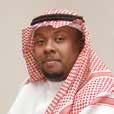
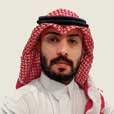
AYMAN HASSAN
HOW ARE YOU ADAPTING TRADITIONAL PR STRATEGIES FOR A REGION THAT’S INCREASINGLY DIGITAL-FIRST AND INFLUENCER-DRIVEN?
At Jummar, we see digital transformation not as a replacement for traditional PR, but as an opportunity to re-engineer it with cultural precision. Our strategies start with deep audience intelligence, identifying not only the right platforms but also the right tones, dialects, and cultural references that resonate in Saudi Arabia and across the MENA region.
We treat influencers as brand storytellers rather than just media channels, prioritizing micro and nano creators with strong credibility in niche communities. Our campaigns integrate real-time sentiment tracking, AI-powered media analytics and platform-native content, ensuring every message is culturally attuned and data-verified.
We have also redefined executive visibility by training spokespeople to deliver compelling soundbites in Arabic and English, livestream confidently, and adapt their messaging instantly in fast-moving digital environments. Ultimately, our model blends Saudi and regional cultural fluency with global best practices, creating PR that is fast, agile and deeply rooted in the communities it serves.
HOW HAS THE DEMAND FOR ARABIC-FIRST PR CAMPAIGNS EVOLVED, AND HOW DO YOU BALANCE REGIONAL NUANCE WITH GLOBAL ALIGNMENT?
Arabic-first is no longer a tactical choice; it’s a strategic imperative. In Saudi Arabia, Arabic
content consistently outperforms English on social media platforms, where engagement algorithms favor native-language interaction. But it’s not just about language – it’s about dialect authenticity. We adapt messaging to align with local and regional cultural nuances, ensuring cultural and linguistic precision.
National agendas like Saudi Vision 2030 have amplified the demand for communication that not only informs but also inspires national pride.
To guarantee global brand consistency, we adopt a “glocal” model. We start with a unified brand essence and then layer in culturally relevant language, visuals and formats. This ensures every campaign speaks both the language of the people and the language of the brand.
WHAT’S ONE CHALLENGE YOU FACE IN EDUCATING CLIENTS ABOUT THE VALUE OF PR IN A PERFORMANCE-DRIVEN WORLD?
The main challenge is shifting the conversation from short-term clicks to long-term credibility. In a world obsessed with immediate metrics like CTR and ROAS, the strategic value of PR –
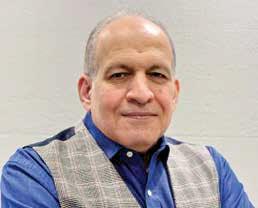
shaping reputation, trust and thought leadership – can be underestimated.
We position PR as the foundational layer in the marketing funnel: it builds emotional connection, frames the narrative, and creates the credibility that accelerates conversions when paired with performance campaigns.
The key is helping clients see PR as a long-term investment in influence, one that protects brand equity, increases pricing power, and sustains relevance in a rapidly changing marketplace.
WHERE DO YOU SEE THE BIGGEST OPPORTUNITIES FOR GROWTH WITHIN PR AND EVENTS IN THIS REGION?
The next wave of growth will be shaped by nation-branding and transformation narratives.
Saudi Vision 2030, the UAE’s economic diversification, and Qatar’s post-World Cup momentum are creating unprecedented demand for strategic diplomacy, investment storytelling and policy communication.
We see three major growth areas. First, immersive Arabic-first experiences: from interactive pop-ups to AR-enhanced cultural exhibitions, brands will win by creating experiences that are linguistically and visually rooted in local culture. Second, long-term thought leadership platforms: businesses will move from one-off campaigns to continuous narrative ownership in their industries, blending PR with content marketing, research, and events. Third, hyper-local influencer ecosystems: beyond big names, niche community voices will shape credibility and trust.
At Jummar, we combine cultural fluency, media access and global insight to position our clients at the center of these opportunities, turning communication into both a market advantage and a cultural contribution.
Rakan Alowais Operations Director
Wael Elhanafi Financial Manager
Abdullah Khairallah Account Manager
Alhussain Shblan Account Executive
Amr Alnajjar Managing Director – Content
Ibrahim Almutawa Co-Founder & Managing Partner
INDUSTRY SNAPSHOT
PR Director
NikNak PR
Founded: 2024
Headquartered: Dubai niknakpr.com anika@niknakpr.com
SERVICES: Media relations, thought leadership, press office management, influencer collaborations, strategic partnerships
KEY CLIENTS: MINT Market, eJaby (as seen on ‹The Final Pitch›), Coralytics, Female Founders Network, The Holiday Mode
PAD Events Management LLC
Founded: 2024 pad-events.com inquiries@pad-events.com
SERVICES: Brand activations, production and management, product launches, exhibition management, red carpet events
KEY CLIENTS: Vinfast, Arabian Center, Mohammed Rasool Khoury & Sons (Rolex, Tudor, Laderach), Adamas Motors (Lotus, Morgan Motor, INEOS)
Performance Communications
Founded: 2009 performancecomms.com/me ian@performancecomms.com
SERVICES: Corporate and brand communications, content creation, event management, social media, influencer marketing
KEY CLIENTS: MG Motor, Bell Flight, Bentley, UD Trucks, Al Laith
PIXL Global
Founded: 2019
Headquartered: Dubai pixl.ae info@pixl.ae
PIXL is a Dubai-born, award-winning marketing and branding agency specialising in off-plan real estate. Since 2019, our global team has delivered integrated PR, creative strategy and high-impact events – more than 50 in 2024 alone – helping developers, brokers, and consultants shape awareness, build credibility, and make an unforgettable market impact.
SERVICES: PR, creative branding, social media, digital marketing, events
CLIENTS: Richmind, Cledor, Al Huzaifa, London Gate, One Broker Group
Plus 1 Communications
Founded: 2015
Headquartered: Dubai plus1comms.com
anna@plus1comms.com
Plus 1 Communications is a Dubai-based PR, design, and digital agency. We craft impactful stories and build brand reputation with creativity and trust. With offices in the UAE, UK and Mumbai, our Dubai team offers local insight backed by global perspective.
SERVICES:Public relations, branding, creative design, social media, influencer marketing
KEY CLIENTS: Cognita, Sorbonne University AD, Dubai Active, Sole DXB, The Retail Summit
POP Communications
Founded: 2017 Headquartered: Dubai popcomms.ae info@popcomms.ae
SERVICES: Public relations, influencer marketing, brand positioning support, media and influencer events
KEY CLIENTS: Gulfood 2025, The Family Office, Foodics, Tamara, Ting Irie
PR Arabia
Headquartered: Jeddah prarabia.me khaled@prarabia.me
SERVICES: Strategic media relations; influencer marketing; event management; crisis communications; press office management
KEY CLIENTS: Petromin, Hyundai, Orascom Development, Acciona, Almajdouie Motors
PR Wonderland
Founded: 2017 prwonderland.com houri@prwonderland.com
SERVICES: Public relations, celebrity management, social media, 360 communications
KEY CLIENTS: Marshall, Sage Clinics, Najahi Events, National Bank of Umm al Quwain, Business France
Publicist Inc
Founded: 2011 Headquartered: Saudi Arabia, Egypt and UAE publicistinc.com info@publicistinc.com
SERVICES: PR, publicity, digital PR and communication consultancy
KEY CLIENTS: Google, Uber, Roche Pharma, Spotify, Yango Play
Q Communications
Founded: 2010
Offices: Dubai, Abu Dhabi, Manchester
SERVICES: Public relations, social media management, content creation, including videography and photography, influencer marketing, digital marketing
KEY CLIENTS: Rotana Hotel Group, Aldar, Soneva, Tourism Ireland, Repton Family of Schools, Costa Coffee, MMI
Qraft Qommunications
Founded: 2019
Headquartered: Dubai qqomms.com
SERVICES: Media relations, influencer marketing, PR stunts, events, ad campaigns

Afew years ago, ‘experience’ in marketing was often shorthand for something loud, shiny and instantly shareable. If it spiked impressions and fed the social algorithm, it worked. But in the aftermath of this performative era, a different kind of appetite is emerging, less driven by virality, more anchored in meaning. The consumer of today and, more importantly, of tomorrow isn’t looking to be dazzled. They are looking to be seen. Experiences are no longer evaluated by the scale of the stunt or the size of the screen but by whether they create emotional connection and cultural relevance. If the last decade was about the moment, the next is about the memory.
This shift is especially visible in fast-evolving markets such as the Middle East, where global ambition meets deep cultural roots. In Riyadh, Dior’s Designer of Dreams exhibition did more than showcase couture; it created a cultural bridge, weaving heritage and high fashion into a space that felt grounded in its setting and resonant with its audience.
‘‘THE FUTURE CONSUMER IS INFORMED, EXPRESSIVE AND VALUESLED. TO REACH THEM, BRANDS MUST MOVE WITH CLARITY AND CARE.”
Sephora’s recent Dubai takeover invited thousands into a sensory-rich playground of beauty and identity. Attendees weren’t just spectators; they were participants, curators and storytellers in their own right. Icons of Porsche, year on year, invites, grows and rewards their community for showing up and that has become an integral part of the success formula.
FROM HYPE TO HUMAN
MCH Global’s Saheba Sodhi reveals what the future consumer really wants from brand experiences.
Further west, London’s rise in immersive theatre, from Elvis Evolution to Peaky Blinders: The Rise signals a growing desire for audiences to live inside the narrative, not just watch it unfold. Meanwhile, Netflix’s permanent “Houses” for Stranger Things, Bridgerton and Squid Game blur the lines between entertainment and environment proof that when story and space collide, memory follows. Its not just customer led, its also touching the industry ecosystem, a notable mention to the recent SXSW london edition and the Experince week run by WXO.
These aren’t isolated moments; they reflect a broader transformation. Across regions, brand experiences are evolving from campaigns into communities. They are no longer backdrops for content they are rituals of identity, connection and belonging.
This evolution demands a new kind of thinking, what I am calling as a brand’s experiential quotient (EQ). Like emotional intelligence in people, EQ reflects a brand’s ability to sense, respond and create meaning. It’s not about the volume of activity, it’s about the depth of connection. Brands with high EQ don’t chase attention. They earn it through care, craft and cultural fluency.
Experience used to be an executional layer; now, it has become core to a brand’s strategy. McKinsey’s recent consumer insights confirm that while global audiences remain cautious with spending, they are actively choosing to invest in experiences that feel personal and purposeful. More than 70 per cent of CMOs across major markets, including the GCC, report increasing their experiential budgets. Over 90 per cent of attendees share these experiences organically, citing emotional connection as a key driver.
In the UAE and the kingdom, where innovation, design and culture are rapidly converging, this shift is particularly
pronounced. Retail environments are being reimagined as lifestyle destinations. Hospitality brands are blending seamlessly with fashion, tech and wellness and collaborations between global brands and local creatives are producing ecosystems that stretch far beyond the bounds of a single activation. Here, audiences expect not just relevance but resonance. They want to feel reflected in the brands they support and engaged in the process of shaping what those brands stand for.
The future consumer is informed, expressive and values-led. To reach them, brands must move with clarity and care. That means designing experiences that reflect real human insight, not just trends. It means viewing audiences as co-creators, not consumers. And it means forging partnerships not for media mileage, but for mutual value.
This approach also requires a recalibration of what success looks like. Visitor numbers alone are no longer the victory lap. The real win lies in cultural traction, when people internalise a brand experience as part of their own identity and expression.
Because at the end of the day, attention fades, the feed moves on. But what stays with people is how something made them feel and in a world saturated with content, the most powerful thing a brand can offer is genuine connection.
Real experiences don’t just entertain, they anchor. They become reference points in our memory, cues in our identity and shared stories that bind us to one another. That’s what the future consumer is truly seeking: not another campaign, but a sense of place, purpose and presence. For brands willing to invest in that level of resonance, the reward is far greater than visibility.
By Saheba Sodhi, Global Head of Strategy & Experiential, MCH Global
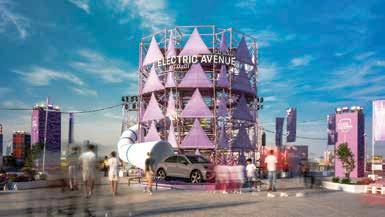


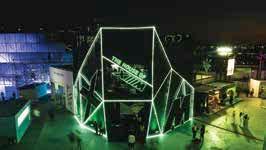
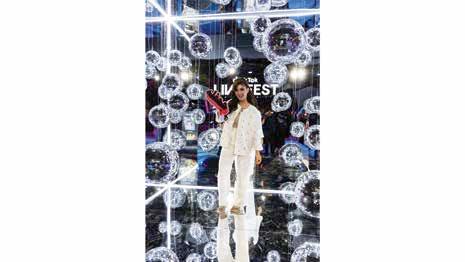



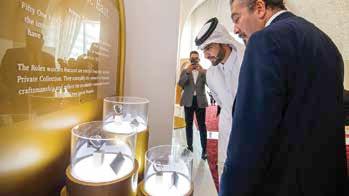

Type Of Agency: Experiential Regional HQ: Dubai, UAE
LEADERSHIP PANEL

ULI STANKE MANAGING DIRECTOR, EMEA



JOANN CORREIA ACCOUNT DIRECTOR



SAHEBA SODHI GLOBAL HEAD OF STRATEGY & XP


MORGAN MERLE CREATIVE DIRECTOR


PAULA MANGUEIRA HEAD OF AGENCY PLANNING




MCH Global is a leading experiential and culture marketing agency, crafting unforgettable brand experiences through strategy, innovation, and cultural insight. From core hubs in Dubai and Zurich to operations across EMEA, the agency brings brands to life with bold creativity and flawless execution. As part of Switzerland’s MCH Group, backed by a century of expertise, MCH Global blends storytelling with story-doing to deliver meaningful, community-first experiences that stick.
SERVICES KEY CLIENTS
STRATEGIC SERVICES
BRAND EXPERIENCES
CLUTURE MARKETING
EXPERIENTIAL CAMPAIGNS
CONTENT CREATION
CREATIVE TECHNOLOGY
COLLABORATIONS & PARTNERSHIPS
DESTINATION MARKETING
EXHIBITIONS
EVENTS & FESTIVALS
PORSCHE
COCA COLA
BMW GROUP GOOGLE
JULIUS BAER ADIDAS SHARJAH TOURISM
MUSEUMS
UBS
WYNN RESORTS
TIKTOK
MUBADALA
SENKA MUSIC CREATIVE DIRECTOR
JAMES GROVES PRODUCTION DIRECTOR
JUSTINA ISMAIL HUMAN RESOURCES MANAGER
Quill Communications
Founded: 2010
Headquartered: Dubai
Head of company: Maan Abou Dargham quillmena.com info@quilmena.com
SERVICES: Public relations, social media management, event management, digital advertising, creative design
RAPP MENA
Founded: 2010
Holding Group: TPH and Omnicom Head of company: Curtis Schmidt, President and Chief Growth Officer admin.dubai@rapp.com
SERVICES: Integrated and strategic communications, campaign development, media relations and press office, influencer and content creator engagement, content development and creation.
Rebecomms
Founded: 2022 rebecca@rebecomms.com
SERVICES: Public relations, media relations,, internal communications, editorial KEY CLIENTS: Cavendish Maxwell, MassiveMusic, ENSO Arabia, My Second Home, In2 Consulting

Founded: 2009
Regional headquarters/offices: Dubai, Abu Dhabi, Riyadh.
Holding group: Publicis Groupe Middle East
Head of company: MacLean Brodie mslgroup.com +971 4 367 6200 dubai@mslgroup.com


Ruder Finn Atteline
Founded: 2016
Headquartered: KSA and UAE ruderfinnatteline.com hello@ruderfinnatteline.com
Ruder Finn Atteline, based in Riyadh and Dubai, is the MENA arm of the Ruder Finn group, one of the world’s largest independent communications and creative agencies. Backed by 75+ years of global expertise, it excels in Consumer and Corporate communication, strategic PR, reputation, and brand management.
SERVICES: Media Relations, Influencer Marketing, Events and Activations, Issues Management, Internal Comms, Analyst Relations, Digital and Creative, Branding and Narrative Development
KEY CLIENTS: Netflix, Sony, Pandora, Hub71, MISK
Sherpa Communications
Founded: 2017
Headquartered: Dubai sherpacomms.com asksherpa@sherpacomms.com
B2B-focused business consultancy and communications agency in Dubai providing services for companies within the UAE and Middle East and Africa region. It is focused on technology, data analytics and cloud, metaverse, blockchain, fintech, healthcare and pharma, construction and real estate, logistics and warehousing, information security.
SERVICES: B2B-focused strategic communications, business consulting, social media management, digital marketing
MSL is the strategic communication and public relations arm of Publicis Groupe. We build influence and deliver impact through bold and insightful campaigns brought to life by the collaborative ‘Power of One’ principle of the Publicis Groupe of agencies.
Armed with sectoral and practice leadership in consumer, lifestyle, corporate, technology, energy and industrials, sustainability, public affairs and influencer marketing, MSL is helping our clients locate, generate and define influence in a constantly changing world.
KEY CLIENTS: Saudi Tourism Authority, TKO, ADNOC, LEGO, Al Masaood Group, EITC (du) , ADREC, Honor, Talabat
SPECIALISMS: Content strategy, strategic communications, creative activation, corporate communications, reputation management, crisis communications, digital strategy, influencer marketing, media relations, public affairs and executive profiling


MacLean Brodie Chief Executive Officer
Houda Samir Chief Financial Officer
Bashar Abdulkarim Chief Talent Transformation Officer
Bassel Kakish Chief Executive Officer
Shakespeare Communications
Founded: 2014
Headquartered: Dubai shakespearecomms.com ananda@shakespearecomms.com
Shakespeare Communications is a full-service public relations firm headquartered in Dubai. As a boutique agency, we offer personalised service that fits your business needs and budget. With over two decades of regional experience, we understand what it takes to be noticed in the often noisy GCC market.
SERVICES: Public relations, corporate communications, events, social media and influencer relations
KEY CLIENTS: STORY Hospitality, Swiss International School Dubai, Crompton Partners, The Brooklyn Creamery, Al Ostad
Social Shop by Aurora
Founded: 2015
Headquartered: Dubai contact@auroraadvertising.ae
SERVICES: B2B/corporate social media management and content creation, thought leadership, executive positioning, digital PR

Founded: 1984
Holding group: WPP
Head of agency: Ghassan Maraqa, CEO, MENA
Regional offices: Abu Dhabi, Amman, Beirut, Doha, Dubai, Manama, Riyadh - affiliates in Baghdad, Cairo, Kuwait, Muscat ogilvy.com/ae/ +971 4 305 0200 info.dubai@ogilvy.com
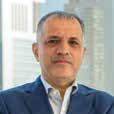

Sociate Communications
Founded: 2015 Headquartered: Dubai sociate.ae rosa.bullock@sociate.ae
Sociate Communications is a Dubai-born PR and creative agency delivering bold, integrated campaigns. From brand launches to influencer activations and media relations, we blend strategic thinking with creative flair—becoming an extension of your team to build lasting impact and visibility.
SERVICES: PR, influencer management, thought leadership, social media, copywriting
KEY CLIENTS: Buddha Bar Dubai, Dubai Offshore Sailing Club, SHOEMART, REDTAG, Fuelre4m
Soul Communications
Founded: 2010 Headquartered: Dubai soulcommunications.ae info@soulcommunications.ae
Founded in 2010 by Farah Sawaf, Soul Communications is a homegrown, female-led PR agency based in Dubai. Known for crafting creative, culturally rich stories across F&B, lifestyle, culture, and tech, Soul delivers soulful PR that breaks the mold and connects deeply with the community.
SERVICES: Lifestyle and consumer communications, PR strategy, cultural storytelling, corporate profiling, crisis management
KEY CLIENTS: Deliveroo, Cinema Akil, Washmen, Yolk Brands, Pitfire Pizza
Memac Ogilvy launched in Bahrain back in 1984. Today, it’s part of the world’s most successful creative network. Memac Ogilvy is a five-business modern marketing partner for social, cultural and economic growth throughout MENA. With full-fledged offices in 10 markets, it offers PR, consulting, advertising, experience, and health & wellness solutions for a range of ambitious public and private sector partners. With more than 150 PR practitioners across the region, Memac Ogilvy utilises its connected culture of people, expertise and creativity to drive disproportionate impact for its clients, supporting public and private sector entities at the forefront of the region’s transformation.
SERVICES: PR and influence - in addition to brand strategy and advertising, customer engagement and digital, social media performance, consulting
KEY CLIENTS: Department of Culture & Tourism, Qatar Foundation, KIA Motors, Majid Al Futtaim, Saudi Arabian Military Industries
AWARDS WON: MEPRA – MENA large agency of the year 2024, Most awarded agency in MENA 2024; PR Week – Globals –Highly Commended for best agency in the Middle East 2024; Provoke – SABREs EMEA Agency of the Year 2025; Fast Company ME – Most innovative company of the year 2024
LEADERSHIP PANEL



Ghassan Maraqa CEO, MENA
Ashraf Shakah MENA President, Public Relations
Saad Abu Touq Managing Director, Public Relations – UAE
Megan Yarmouth Head of Public Relations – Qatar
Sarah Edwards Managing Partner, Public Relations – UAE
Spread Communications
Founded: 2014
Headquartered: Dubai spreadcomms.com
hello@spreadcomms.com
Spread Communications is a boutique PR agency delivering bold, results-driven campaigns without big-agency baggage. From media relations to digital strategy, we connect brands to audiences with speed, creativity, and impact across sectors like technology, F&B, lifestyle, finance and healthcare.
SERVICES: Media relations, brand marketing and communications, influencer relations and digital strategy, crisis management, content creation and community management
KEY CLIENTS: RAW Coffee Company, Keyper, Peaq, Jean Pierre Khoury, Al Bihouth
Story Public Relations
Founded: 2018 Headquartered: Dubai story-pr.com Laetitia@story-pr.com
STORY is a Dubai-based communications agency that represents notable individuals and luxury brands across arts, culture, design, and hospitality. As a boutique agency, we deliver personalised, one-on-one expertise tailored to elevate both business and brand.
SERVICES: Art, design, culture, luxury, hospitality
KEY CLIENTS: Van Cleef & Arpels L݃COLE Middle East, Trunks Company Jaipur, Light of Sakina, Thrive Wellbeing Centre, Delivering Asia Communications.

Founded: 1939
Type of agency: Experiential
Ownership: TrueLink Capital
Global President: Jeff Stelmach
Tales & Heads
Founded: 2021 Headquartered: Dubai talesandheads.com hello@talesandheads.com
An independent communications agency where strategic consultancy and creative storytelling go hand-in-hand. Headquartered in Dubai, UAE we provide trusted counsel to some of the biggest regional and global brands, creating content and campaigns that are human, meaningful and culturally relevant.
SERVICES: Strategic communications consultancy, creative storytelling
KEY CLIENTS: Archer Aviation, Jumeirah, Merck Gulf, RAKTDA, Stellantis
TRACCS
Founded: 1998
Headquartered: Riyadh Head of company: Mohamed Al Ayed, President and CEO info@traccs.net
SERVICES: Advisory, content and training
This is Spiro. A strategically-led, creatively-driven, leading global experiential agency.
We exist to cultivate powerful bonds between brands & their customers through the channel of experiential.
Through our proprietary experiential intelligence system – our science of a raction – we understand customer drivers & a raction motivators, design to those behaviors, and position brands as the undisputed leader in the hearts & minds of their most important audiences.
SERVICES: Live events, strategy & planning, brand activations, fit outs & exhibits
Offices: Riyadh, Dubai, Abu Dhabi and Doha thisisspiro.com +966 569 795 4505 ContactME@thisisspiro.com LEADERSHIP PANEL

Jo
SVP Market Development & Growth

Rabih Sabsabi VP Market Development
KEY CLIENTS: Aramco, Tahakom, Riyadh Air, DGA, SAMI
AWARDS: Campaign ME Start-Up Agency of the Year, Chief Marketer Agency of the Year, Hermes Creative Award, ANA Global Ace Awards, Chief Marketer Top 200




Najat Ftouni Director, Client Relations
Virginia Ocampo Global Strategist
Karen Chehayeb Business Development Director
Shikhar Alagh Senior Manager of Marketing Technology
Webber







































































































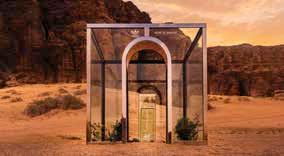

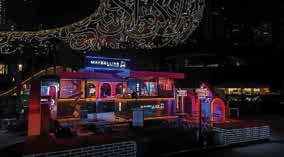



Weber Shandwick MENAT
Founded: 1983
CEO: Ziad Hasbani zhasbani@webershandwick.com
SERVICES: Corporate reputation, banking and financial services, consumer marketing, government communications, integrated communications
White Label Media
Founded: 2012
Headquartered: Dubai wlgroup.me hello@whitelabelmedia.me
White Label Group is a curated collective and an integrated hub of upscale creative consultancies, marketing, technology and production studios, crafting the future of brands.
SERVICES: Public relations (PR), influencer marketing and management, content creation and strategy, event management, social media strategy (collaborative with PR), media training and outreach
KEY CLIENTS:Saddle Café, Feels Juice Bar & Kitchen, Sheraton Mall of the Emirates, Al Raha Beach Resort & Spa, Juan Valdez, Indikaya
Yardstick Marketing Management
Founded: 2012
Headquartered: Dubai yardstick-marketing.com info@yardstick-marketing.com
SERVICES: Public relations, influencer marketing, advertising, media buying and planning, social media, digital marketing
Z7 Communications
Founded: 2007
Headquartered: Dubai info@z7commmunications.com
SERVICES: PR and communications, showroom management, experiential events, digital and social strategy, content creation
Zia Creative Network
Founded: 2009
Offices: Abu Dhabi, Dubai, Halifax info@zianetwork.com
SERVICES: Advertising and marketing, video and audio production, 2D and 3D animation, creative photography, PR and events












Founded: 2012
Offices: Dubai, Riyadh and UK
Head of agency: Natasha Hatherall, Founder and CEO tishtash.com +971 4 341 4679 info@tishtash.com
TishTash Communications is proud to be different with their innovative, community-led approach that has earned them a reputation as one of the region’s most trusted independent agencies. Founded in 2012, the fully integrated marketing and PR agency is headquartered in Dubai, with a presence in KSA and the UK, and is known for creative and results-driven campaigns. The all-female team of more than 70, delivers PR, influencer marketing, events, social media, digital marketing, content creation and lead generation.
KEY CLIENTS: Skin Laundry, Al Shaya Group (various brands), Al Tayer Group (various brands), Al Ghurair, Azadea Group (various brands)
SPECIALISMS: Public relations, events and activations, social media and content, performance marketing, influencer engagement
AWARDS WON: PRCA Best Digital Agency, PRCA Best Agency (Medium), PRCA Best PR Leader, Mepra Best Beauty Campaign; Great Place To Work for the last three years.






LEADERSHIP PANEL
Scarle Sykes Group Director
Indira Kaseva Director – TishTash TEN (Corporate Division)
Moushmi Bhatia Director – Events and Activations
Ylova Hamdan PR Director – Traditional Media & Influencers
Katie Watson Grant Group Director
Natasha Hatherall Founder and CEO

Founded: 2017
Headquartered: Dubai
Head of agency: Anam Ahmad, Founder & Chief Creative Officer; Husam Haris –Co-Founder & Chief Operating Officer thehanginghouse.com +971 4 236 8844 welcome@thehanginghouse.com
The Hanging House is an award-winning experiential agency based in Dubai, crafting immersive brand worlds that blend strategy, storytelling, design, and technology. From one-night pop-ups to global launches, we build meaningful moments that connect, inspire, and resonate. With over 200 projects delivered across industries and markets, we help brands evolve from transactional to transformational through experiences that leave a lasting impact.
SPECIALISMS: Experiential design, creative technology, experiential marketing, future spaces, full-scale event production
KEY CLIENTS: Nissan, Dubai Holding, ORA, American Hospital, du Telecom
AWARDS WON: Eventex Awards (Platinum for Best Agency of the Year); Inspiring Workplaces MENA (Top 10 Inspiring Workplaces in MENA, Best Employee Engagement Program & Best Well-Being Program); Employee Happiness Awards UAE (Silver in Medium Business Category); Symbol Creative Awards (Platinum to Anam for Creative Director, Gold to Creative Team for Nissan Kicks, Silver to Production Team for ORA Bayn Launch)



HOW WE TURNED A CAR LAUNCH INTO A NARRATIVE OF BROTHERHOOD AND EXCLUSIVITY
Nissan brought us the challenge of launching two radically different NISMO vehicles; the untamed Patrol and the iconic Z, under one roof. The goal was to create a powerful moment that celebrated their collective force without diluting their individual spirits.
We looked beyond the specs and saw the soul. Our insight was that performance drivers, regardless of their vehicle, share a tribal bond with it. We saw this as an opportunity to create a belief system that resonated globally.
THE IDEA
We dug deep into the brand’s history and unearthed a subtle but profound symbol: The Red Ring. This powerful visual element became the metaphorical heart of the launch and its physical centrepiece. It was the source of power, the symbol of shared identity.
From this symbol, we forged The Red Ring Society, an elite, exclusive, underground collective for those who share this spirit for performance, to belong. The launch was essentially a live initiation of this society.
THE 4 ACTS

of the society, much like a real-life version of the revered secret society pop-culture trope. These unspoken laws inspired every element, epitomising a rite of passage.
1. Awaken the instinct: Guests began their journeys entering an immersive tunnel, a homage to NISMO’s Japanese heritage and craftsmanship. Here, the cinematic, systemic revelation of The Rules of the Bond began.
The launch was a narrative guided by the 10 Rules of The Bond, serving as the emotional code
2. The Red Ring rises: In a true feat of creative engineering, a custom-built, six-metre motorised Red Ring (constructed in just eight days, with no
rigging points) aligned and rose with dramatic force, revealing both vehicles.
3. The world of NISMO: The audience then stepped into a multi-sensory NISMO branded realm. This immersive space featured everything, from Apple Vision Pro driving simulators, custom perfumery, to vintage NISMO models displayed like works of art.
4. The aftermath: The event set was repurposed as a film location, extending the story to maximize reach.
THE CRAFT
In our bold Japanese x UAE Fusion design, Japanese minimalism met UAE majlis culture in a spatial narrative of heritage and performance. The experience was an intricate world of sensory immersion, built to engage all senses through AI-generated visuals, emotive voiceovers, automated scent diffusion and tactile sound.
THE IMPACT
This human-centric approach resonated powerfully, transcending the typical automotive crowd and initiating a staggering domino effect:
37.9M social reach
21M coverage reach
822K live-stream views
100% positive sentiment across media
LEADERSHIP PANEL
Husam Haris Co-Founder & Chief Operating Officer
Anam Ahmad Founder & Chief Creative Officer
Jean Oosthuizen General Manager






















Founded: 2023
Headquartered: Dubai, UAE Head of company: Artem Minasian, CEO yepfamily.com
+971 50 762 47 66 go@yepfamily.com


ARTEM MINASIAN
CEO
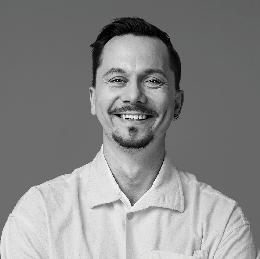
HOW WOULD YOU DESCRIBE YEP’S PHILOSOPHY, AND HOW DOES IT INFLUENCE THE WAY YOU APPROACH PROJECTS?
YEP’s philosophy is built on two pillars: sharing joy and co-creation. We believe that every event should spark genuine delight, creating moments guests remember and want to share. At the same time, we bring together diverse talents, designers, storytellers, technologists and producers, collaborating closely with clients to co-create experiences that are bold, human and meticulously crafted. From concept to execution, this approach ensures that every touchpoint reflects the idea, every detail matters, and the result is an immersive, shareable experience.
YEP is a global creative event agency headquartered in Dubai, UAE. The agency was born from Eventum Premo – one of Russia’s most awarded event agencies with more than 25 years of international experience. YEP has spent the last three years building on this legacy in the MENA region and beyond, creating bold event creative experiences with a global mindset and local insight.
KEY CLIENTS: Porsche, Tether, Amway, Chery, Yango, LAB31B, ITMS, Oriflame, Space307, Indrive, VW, Audi, Jaguar, Premierpharm, Xiaomi, Skoda
SPECIALISM: Event production, experience technologies and interactive solutions. Creative concept development and strategy; storytelling. Design and art direction, branding.
AWARDS: Top 50 Event Agencies by Eventex USA, BeaWorld, MAA Globes
LEADERSHIP PANEL




INDUSTRY SNAPSHOT
WHAT SETS YEP APART FROM OTHER INTERNATIONAL AGENCIES OPERATING IN THE REGION?
YEP combines the agility, ingenuity, and precision-driven approach to detail rooted in our Russian creative heritage with a deep understanding of the MENA market. In event management, this means flawless end-to-end delivery – from concept to build to guest experience – with every idea thoughtfully integrated into each step of the guest journey. By ensuring that the creative vision lives in every touchpoint, we craft experiences that are seamless in execution, bold in vision and truly memorable for every participant.
WHAT ARE SOME RECURRING THEMES OR GOALS THAT BRANDS WANT EXPERIENTIAL CAMPAIGNS TO DELIVER TODAY?
In 2025, brands are moving beyond traditional events and seeking immersive, purpose-driven experiences that resonate emotionally and foster genuine connections. Campaigns focus on authenticity, personalisation and inclusivity, often blending physical and digital elements. Sustainability and meaningful engagement have become essential, ensuring that every experience not only reflects the brand’s identity but also creates lasting impact and memorable moments for attendees.
WHAT TRENDS OR INNOVATIONS ARE SHAPING THE FUTURE OF EXPERIENTIAL MARKETING IN MENA, ESPECIALLY WITH YOUNGER AUDIENCES?
At YEP, we see younger audiences in MENA craving experiences that are immersive, interactive, and shareable across both physical
and digital channels. They want to participate, not just observe, which drives brands to embrace co-creation, gamification and live digital integrations. The most successful experiential activations are those that engage audiences at every touchpoint of their journey, turning each moment into a story they want to share with friends and online networks.
WHAT’S ONE MISCONCEPTION BRANDS HAVE ABOUT EXPERIENTIAL THAT YOUR AGENCY OFTEN WORKS TO CORRECT?
Some brands still tend to view experiential marketing primarily as ‘an event’. At YEP, we guide them to see it as a holistic guest journey, where every touchpoint reflects the creative idea. Done thoughtfully, experiential becomes an immersive story that builds emotional connections, drives engagement, and leaves a lasting impression far beyond the event itself.
LOOKING AHEAD TO 2025, WHERE DO YOU SEE THE BIGGEST OPPORTUNITIES FOR GROWTH WITHIN THE EVENTS AND EXPERIENTIAL SPACE IN THIS REGION?
In 2025, the biggest opportunities in MENA lie in ambitious, meaningful experiences. Brands are increasingly willing to take creative risks, but to do so effectively, they need to trust their agencies to bring those ideas to life flawlessly. For event agencies, this opens the door to deeper collaboration, co-creation, and the design of experiences that go beyond traditional formats – immersive activations, interactive storytelling, and fully integrated digital-physical journeys. The agencies that can combine strategic insight, creative courage, and operational excellence will lead the way in shaping memorable, impactful experiences in the region.
Dmitriy Sevrunov Event Director
Tatiana Eremenko Event Director
Evgeniia Shmeleva Creative Director
Ekaterina Metelkova Director of Creative Experience
Alex Berlov Partner
Artem Minasyan Partner, CEO

EVENTS CALENDAR
SEPTEMBER 2025
C AMPAIGN BREAKFAST BRIEFING (DUBAI, UAE) The Future is Now
OCTOBER 2025
C AMPAIGN SAUDI BRIEFING (RIYADH, KSA) Media & Marketing
DECEMBER 2025
C AMPAIGN AGENCY OF THE YEAR MIDDLE EAST AWARDS (DUBAI, UAE)
NOVEMBER 2025
C AMPAIGN BREAKFAST BRIEFING (DUBAI, UAE) Out of Home 2026
FEBRUARY 2026
C AMPAIGN BREAKFAST BRIEFING (DUBAI, UAE)
Ramadan Advertising & The Year Ahead

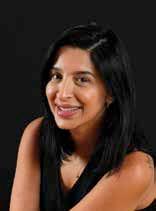
PROVOCATIONS
LUXURY IS NOT FOR EVERYONE ... AND THAT’S THE STRATEGY
Spark Foundry Middle East’s Manal Naboulsi explains why the real task in luxury is not to make it universal, but to make it unforgettable.
In today’s world of inclusivity, openness and instant access, it’s easy to assume that every industry must follow suit. But when it comes to luxury, the rules are, and should remain, different. That’s not an outdated belief; it’s a strategic reality.
Luxury has never been about reaching the most people. It’s about reaching the right people in the right way. That’s what creates desire, aspiration and long-term brand equity. And this isn’t just a romantic notion, it’s how the business of luxury has always worked, and continues to grow.
Having worked with some of the world’s most iconic Maisons, from haute couture to high jewellery, I’ve observed that the strongest luxury brands are the ones that remain intentional about how they show up, where they show up, and who they speak to.
They focus less on mass exposure and more on meaningful impact. And that’s what sets them apart in a region like the Middle East, where cultural nuance, heritage and status are not just appreciated, they’re embedded in daily life.
story you tell when you do. That’s why, when designing media strategies for luxury brands, restraint becomes a strength. Being selective is not about limiting opportunity, it’s about protecting value. For example, showing up in high-impact, contextually relevant environments, whether that’s premium OOH placements, curated digital platforms, or bespoke cultural experiences, often drives far stronger brand affinity than sheer volume ever could.
Similarly, while I’m a firm believer in data and automation and yes, I love my Power BI dashboards and campaign attribution tools, we also need to be honest about what data can and can’t tell us.
You can measure impressions, engagement and even conversions. But can you measure the emotional impact of a Dior runway moment amplified on the right screen at the right time? Or the ripple effect of a Tiffany piece spotted at an exclusive dinner? Some of luxury’s biggest wins live outside the dashboard, in sentiment, memory and reputation.
“When designing media strategies for luxury brands, restraint becomes a strength. Being selective is not about limiting opportunity, it’s about protecting value.”
Now, it’s true that today’s luxury consumer is changing. They’re younger, more digital-savvy and often driven by values and experiences as much as aesthetics and craftsmanship. But that doesn’t mean luxury should lose its essence in a rush to appeal to everyone.
In fact, according to a 2024 Bain & Company report, the luxury market’s growth is being led by “new generation clients who expect personalisation, cultural relevance and a sense of belonging, but still crave exclusivity, craftsmanship and storytelling”. That’s a nuanced brief, and it doesn’t mean ‘mass market.’
In media terms, this makes our job more complex and more rewarding. The real challenge isn’t just about reach; it’s about resonance. In a landscape where algorithms and performance dashboards dominate decision-making, the pressure is often to go wide and drive visibility. But in luxury, effectiveness doesn’t always correlate with impressions or click-through rates. It correlates with how and where you show up, and what
Does this mean luxury is exempt from change? Not at all. In fact, luxury has always evolved, just on its own terms. It leads in areas such as sustainability, innovation and cultural influence. But what makes it resonate is its ability to innovate while staying true to its DNA. That’s what makes it so resilient and so desirable.
This is especially true in a market like ours, where luxury is not just a category, it’s a cultural and economic force. Consumers in the GCC region are among the most discerning globally, with high digital adoption and an increasing appetite for meaningful engagement with brands. That raises the bar for all of us, media professionals, marketers, creatives, to think beyond formulas and stay focused on what makes luxury truly matter.
So no, luxury is not for everyone and that’s not exclusionary. It’s deliberate. It’s what makes the industry thrive. The real task is not to make it universal, but to make it unforgettable for the audiences who truly connect with it.
And that’s not a flaw. That’s the strategy.
Manal Naboulsi Business Lead, Spark Foundry Middle East


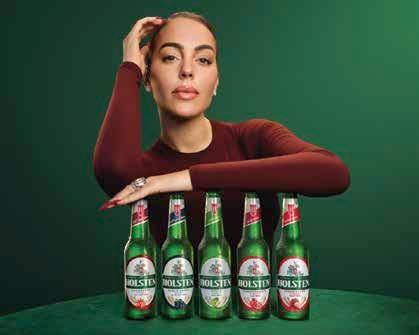

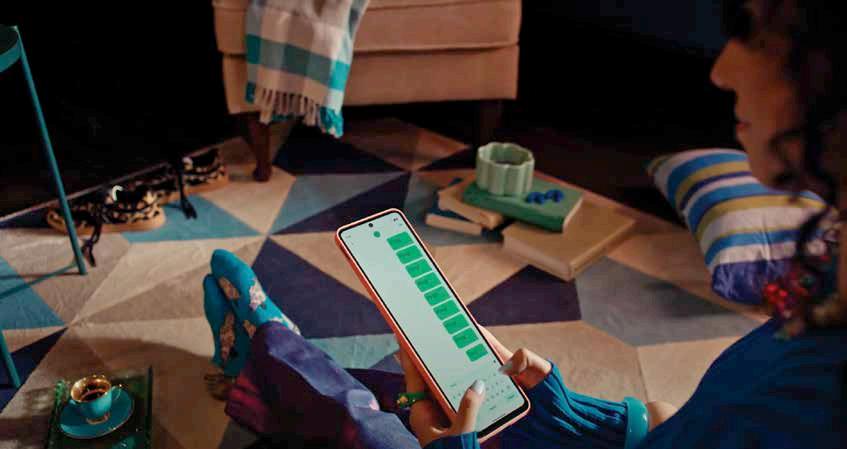





Ahmed Seddiqi “Lands like a classy mic drop ... ” (NR)
Holsten ... “Clever, funny and humorous ... ” (AW)
Careem Pay ... “The Dua Lipa of money sounds ...” (NR)
Use
Private View
ALKA WINTER
Vice President, Destination Marketing and Communications, Ras Al Khaimah Tourism Development Authority
AHMED SEDDIQI: (1)


The Create. Group did a fantastic job here in terms of visuals. The campaign isn’t overdone or over the top and genuinely shows the heritage and lineage of the brand, which is cool to see. I would have expected a bit more of an opportunity to showcase what types of luxury products they carry. I’m also not sure why removing ‘And Sons’ is a focal point of their brand relaunch, but I think that’s a topic for another conversation. All in all, it’s timely and classic, just like the brand.
HOLSTEN: (2)
I liked this one because it speaks to Saudi's culture and neighbourhoods. I question the use of Georgina for this. I know she lives there with her family, but I don’t quite get her affinity for Holsten. Couldn’t see the relatability with the product or with the local nature of this campaign. That said, the work was very well shot, clever, funny and humorous.
CAREEM PAY: (3)
I appreciate the use of sound in this campaign. Sonic branding tends to not be employed very much or as effectively. Here, it shows the speed of transfer in a wellexecuted manner: delivered and fast. My only challenge is: does the ad really attract the audience that it hopes will use this service? Is this the audience that also uses Careem for car rides and other applications that it has? I think consumers feel secure sending money through traditional means such as bank transfers. So, determining who the audience is for this campaign and whether they would use that service would provide clarity.
GYMNATION: (4)
A clever campaign, especially targeting those of us who are here during the summer. It is hot, and the logic of burning brown fat in colder temperatures certainly makes sense. I think it benefits from the fact that it’s not only applicable to the summer; it also has potential to be done all year round, which would be key for the brand. The film runs a bit too long with the commentary, but Gideon shivering in the ice bath really stole the show. The explanation was fine, but one tends to stop listening after a while.
TIE HOUSE: (5)
This campaign is informative. I don’t understand Arabic, but I can understand how celebrating key moments in life requires having the proper attire. Using a footballer, whose acting was really good, is a great use of a celebrity. He really fit the role. You wouldn’t even know that he is a celebrity, unless you knew of him, because he’s such a good actor. That really goes up stock-wise in my books.
NAYAAB RAIS
Executive Creative Director, FP7 McCann Dubai
AHMED SEDDIQI: (1)
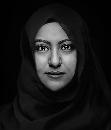

Yes: “& Sons” exiting the family WhatsApp group with the line “The difference time makes” lands like a classy mic drop.
And: For the next anniversary, would love to see films go beyond manifestos or reinvent the format, just like the brand set out to do with its name.
HOLSTEN: (2)
Yes: A simple and fun use of celebrity with the appeal of Beyoncé casually ordering shawarma next door. And: Exaggeration can be a risky tool to play with, so performances must feel more authentic. Also, I am sure Rajeev sells more than stereotypes, so would love to see fewer tropes and more authentic charm next episode.
CAREEM PAY: (3)
Yes: Thanks for making financial ads less boring. “Vroooosh. Ding.” is the Dua Lipa of money sounds. And: Would love to see fresher metaphors for speed or, better yet, skip them entirely. Most people already know what fast looks like.
GYMNATION: (4)
Yes: Short, quick-working promo that was all over my Instagram feed. So, was as popular as the animal videos that I usually watch.
And: Would be great to add depth to the concept to make it more than just a promo and a one-hit wonder. Less Vanilla Ice, more Ice Cube.
TIE HOUSE: (5)
Yes: Zidan is charming, versatile and proof that footballers have more acting skills than faking injuries for penalties.
And: Storytelling and execution can add richer narrative arcs next time so that the concept would feel less seen.
Ahmed Seddiqi
Title: The Difference Time Makes Agency: Create. Production house: Create. Production
Holsten Title: Georgina's Favourite Treat Agencies: M+C Saatchi, dentsu Production house: Boho Films
Careem Pay
Title: Vroooosh *Ding* Agency: Careem Creative Studio (in-house)
Production house: Bigfoot Films
GymNation
Title: The Coolest Class Agency: Current Global MENAT (PR)
Tie House
Title: 30 Years of Tie House Agency: Rack Advertising Agency Production houses: Golden Take Media Production, LZRD
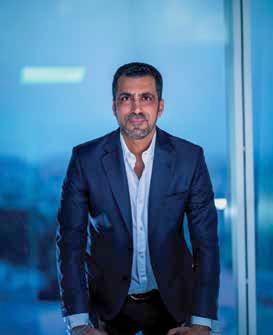
TARIQ AL SHARABI
Managing Director of Cicero & Bernay Communication Partner
In today’s digital landscape, brands seem to be obsessed with chasing the next viral video. This constant pursuit often produces campaigns that are visually cluttered and creatively shallow. The focus on flashy content results in an overwhelming barrage of video ads, with messages blending into an endless scroll of sameness. Yet, true memorability isn’t achieved by what appears on the screen; it’s the impression that lingers
MATTER OF FACT
News, views and trends from across the spectrum
IF YOU KNOW, YOU KNOW (THE SOUND)
when the screen goes dark. Many iconic campaigns endure not only for their visuals but also for their sound. McDonald’s and Netflix, for example, became cultural icons through their distinctive audio branding. A recent case is the British airline Jet2, whose campaign went viral not for imagery but for its striking voiceover that took on a life of its own. Users turned it into memes; other brands joined in; and Jet2 amplified the
moment with creator content and sweepstakes. Brand campaigns should aim to be memorable, not necessarily viral in all aspects. Let the audience have a say in what becomes a trend. So, consider this: Virality isn’t mainly visual. It’s also emotional, multi-sensory and often accidental. How does your brand sound? And will your message resonate even when the visuals are gone?
$7.55bn
Expected global net worth of audio advertising industry

GAME CHANGER
Lovin’ It virtually
McDonald’s and Snapchat teamed up to turn more than 14,000 US locations into AR-powered McDonaldLand experiences. Visitors could participate in themed mini-games and a 3D map lens, and also unlock collectable postcards that told hidden stories through Snapchat’s camera. Combining nostalgia with state-of-the-art technology, the campaign uses immersive storytelling to reintroduce the fast food chain to a digitally savvy generation.
31%
51% of total media time spent by consumers in a day is on audio platforms
Engagement gained by audio ads and campaigns in 2025

BREAKING THE NET
The showgirl has entered the chat
Taylor Swift launched her 12th studio album, The Life of a Showgirl, with a surprise announcement on the New Heights podcast, drawing record-breaking viewership. A synchronised, orange-themed campaign, spanning Spotify, global landmarks and Easter eggs, turned the drop into a global cultural moment. The rollout proves Swift’s mastery of multi-platform storytelling and her continued influence across entertainment, media and brand ecosystems.

#NOT
Fine fashion fails on feedback
Vogue recently drew criticism for featuring an AI-generated model in a recent Guess ad in the magazine. Readers and critics argued that the imagery risked deepening body image issues, especially among vulnerable viewers. While editors clarified that the model was part of the advertiser’s brief, the backlash underscores the need for ethical foresight and inclusive insights in the creative process, especially for AI-generated content across fashion and media platforms.
Sources: eMarketer | Net Marketer | CNN | Yahoo!
Appointments
Saudi Arabia’s King Salman Park Foundation, one of Riyadh’s four mega-projects, has appointed SIMON SHAW, the former Chief Creative Officer at global communications agency Burson, as its Chief Communications and Marketing Officer. Shaw, who moved to Riyadh in April 2025, will oversee marketing and brand communications for King Salman Park. Shaw brings a strong track record of working with international clients on their communications and marketing strategies, and activations.


engagement. As CMO, Khaled will lead CFI’s global marketing function, overseeing brand, performance and client communications strategies, and digital, as CFI continues to accelerate its international growth.
GEMS Education has appointed SUAD MERCHANT as its new Chief Marketing Officer (CMO). In her role, Merchant will lead the group’s global marketing, brand strategy and communications efforts, and will aim to reinforce GEMS’ reputation as a trusted, family-run institution delivering world-class education with heart and vision. Beyond leading branding and communications, the role is strategically crafted to be a key enabler of business growth and impact and ensure GEMS continues to lead in a sector critical to regional and global development.
CFI Financial Group has named OMAR KHALED as CMO, reinforcing the global online trading platform’s commitment to driving brand excellence, global growth and stronger client

Dubai-based creative agency Liwa Content. Driven has appointed NANDITA SAGGU as Chief Growth Officer, tasking her with driving strategic business growth to raise the agency’s profile in regional and global markets and enhancing operational effectiveness. Saggu brings two decades of experience to the role, including more than 15 years in the Middle East. In her new remit, she will work closely with Liwa Content.Driven Director Sagar Rege and the wider leadership team to build Liwa’s client portfolio across key sectors and expand into new markets in the GCC region.


lead the new chapter. With more than 15 years of experience in delivering standout corporate experiences across the UAE, Africa, and beyond, Waceke’s portfolio includes everything from executive forums and product launches to immersive activations and cross-market campaigns for some of the world’s most respected brands.

SRMG has appointed NEDAA AL MUBARAK as Chief Executive Officer of SRMG Media Solutions (SMS) to lead the integrated media group’s performance-driven commercial arm. Her appointment aims to mark a significant step in SRMG’s continued transformation and growth strategy, as it expands its focus on outcome-based solutions for partners across the Middle East. In her new role, she will lead SMS’s efforts to deliver strategic offerings powered by premium content, advanced adtech, and unmatched access to regional audiences.
Alternative Agency has launched its new vertical Alternative Events, appointing NASERIAN WACEKE as Managing Partner to
Influencer talent agency, Bold Management, has appointed AHMAD DAABAS as Global Executive Vice Managing Director. The appointment aims to mark a pivotal move in the agency’s continued global expansion and leadership in the influencer marketing space. In his new role, Daabas will work alongside Enrico de Finis, Global Director of Bold Management, to further strengthen the agency’s strategic presence across key markets including the Middle East, Europe, the United States, and the Scandinavian region.


Crestview, a strategic communications and public affairs firm, has appointed ALEXANDER M. WEGNER as Vice President and Head of Middle East. He brings more than 17 years’ experience across the Middle East and Africa to the role. Wegner will focus on three core areas in his new role: strategic and executive positioning, stakeholder engagement, and market entry and access.

The Spin
Looks like everyone had a bit more time to rest, relax, scroll and send their submissions through while on holiday during the month of August because The Spin’s inbox filled up with some fun ad howlers.
A big one was on a big Noon Food billboard in the UAE, which advertised ‘Savings on Gravings’. Would it be too forward to call that a grave error? For those who say it was intentional, surely, you don’t want people thinking of limestone headstones when it’s time for lunch? Maybe, this one should be carved in stone.


Meanwhile, The Times of India, a leading national daily in the Indian sub-continent, published a Flipkart ad for an iPhone sale on the front page. The ad was found “strating” off with a typo, followed by a line that read: “Price so crazy, we bet you missed the typo in the headline.” The real faux pas: No one missed the typo. In a world where everyone seems to find something or other offensive, consumers complained that the ad viewed them as ‘dumb’, while marketers called for creatives to get more creative – with some saying, “Congrats, you’ve just paid premium for a punchline with no punch or line.”
Talking about typos, The Spin was sent a photograph of a sign posted on a bakery door that looks like autocorrect gave up halfway through. The sign had so many typos that ‘costumers’ needed a spell-checker and a prayer to figure out the Alphabet Soup.
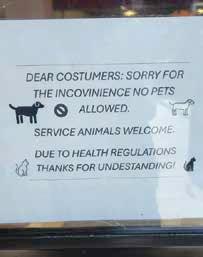
Another unfortunate typo on a weighing scale got The Spin in stitches. Probably, not the best messaging for someone hoping to see a drop on the scales.
Continuing The Spin’s coverage of artificial intelligence (AI)designed ads, we received one promoting Black Rock Coffee Bar that doesn’t speak too well about the quality of their cups. Easy to


miss on the first take, the dribble does the ‘Rocky Road Chiller’ no favours.
Another offer on a Tostitos Dips read: “Buy 2 Get 3 Free”. Unsurprisingly, the delighted waddle with five Tostitos Dips ended at the cash counter. If you’re still doing the maths on that one, feel free to read it again. Finally, closing off this month’s
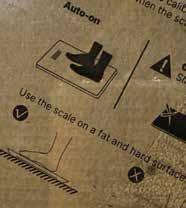
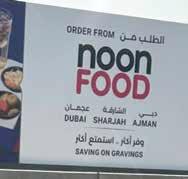
coverage of The Spin is a glaring typo in an ad campaign run by Mike Collins, who has been a US representative for Georgia’s 10th congressional district since 2023. The ad, which announced Collins’ Senate candidacy, was criticised for misspelling the name of the state he represents, reading “Georiga, let’s ride”. He got what he asked for – a wild and bumpy ride on social media.
NEW:
NEW:






Integrated
Production

Outstanding

ONE VISION, EXTENDED TO DOHA
We are now in Qatar, bringing bold ideas and creative energy to the heart of Doha.
abu dhabi bengaluru cairo doha dubai jakarta jeddah singapore shanghai riyadh tirana beyond
